Eighth edition: Flowing – things, places and people in motion. Philippe Malouin takes Bilboquet for a ride, Black Flag by Konstantin Grcic in Berlin, Taccia Matte White, behind the scenes of Ronan Bouroullec’s Céramique and a celebration of Michael Anastassiades’ My Circuit in six performative acts.
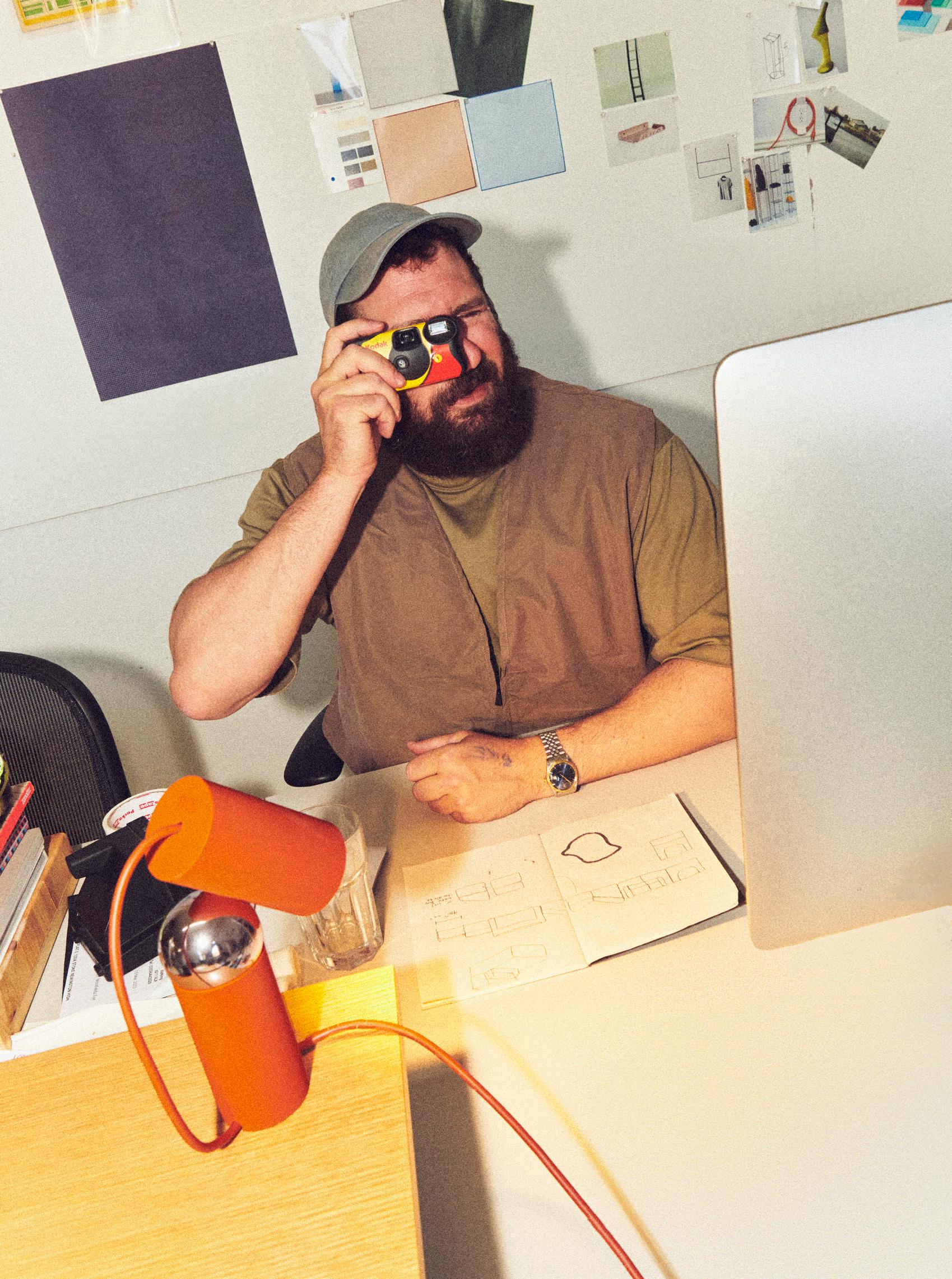
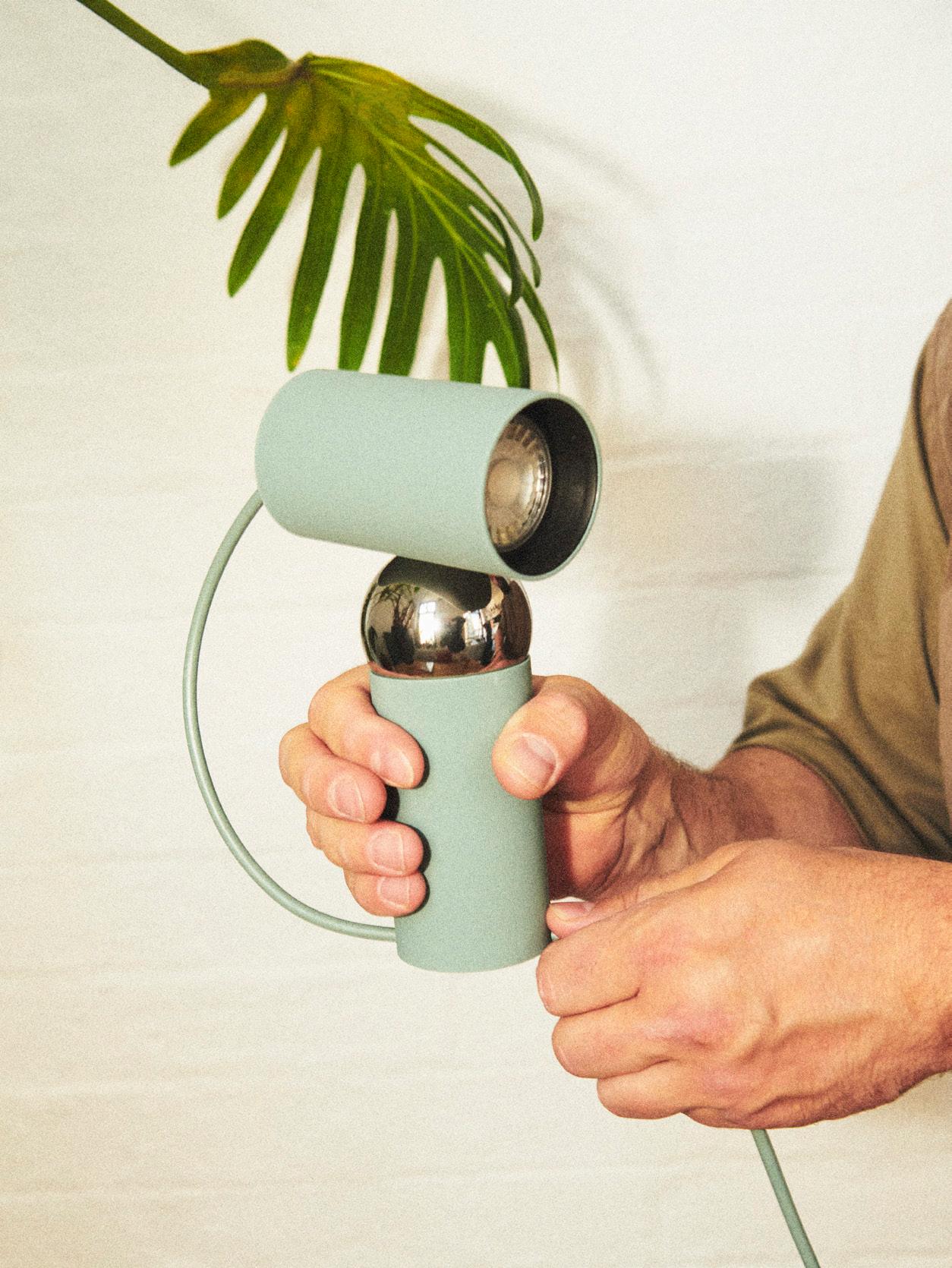

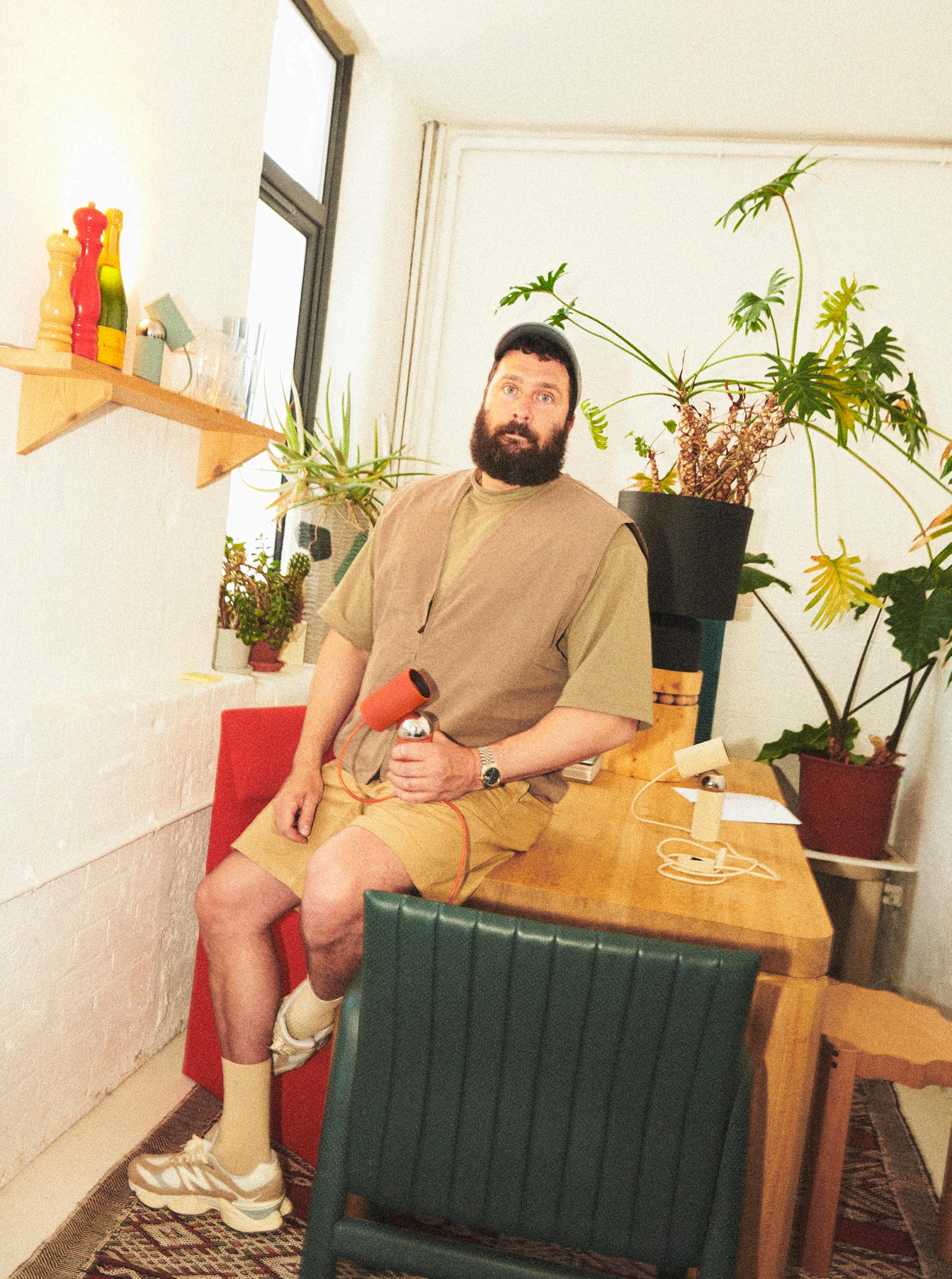
Around East London with Philippe Malouin, Bilboquet and Friends
Philippe Malouin describes Bilboquet as a lamp for millennials and Gen Z, a flexible illumination tool that adapts to the multilayered approach to the home that is defining his generation (and those that come after).
Malouin himself has been testing the table lamp –whose head connects to the body via a sleek magnetic sphere, allowing it to be used in a plethora of different configurations– at his studio and with his friends across East London. We followed him in his urban wandering as he packed Bilboquet in his backpack and cycled to see the lamp in action at the homes of his creative friends. With Malouin, we talked about flexibility in domestic design, creative communities and how the experimental approach he has been fostering throughout his career has led to the design of Bilboquet.
Interview by Rosa Bertoli
Photography by Pablo Di Prima
ROSA BERTOLI Bilboquet is a lamp imagined to move and adapt to many living environments. How did you come up with the concept?
PHILIPPE MALOUIN I wanted the light to do more than one thing, because people have fewer things today, and move a lot, so your needs change within the home, so Bilboquet is not static. I'm obsessed with Achille Castiglioni, all his lamps always did more than one thing: my favourite light and the first Flos lamp I've ever had is the Parentesi. I always loved the fact that the Parentesi hangs on a string, and you can bounce the light off a white wall or the ceiling, or straight on to the subject at hand. And you create three fully different light moods. And to me, that was always the most important thing. So when I made a small table light, I wanted to use the elements that I admired in Castiglioni's work.
ROSA BERTOLI How do you use it in your space?
PHILIPPE MALOUIN I am living in a temporary space at the moment, and I have just started using Bilboquet here. I love indirect light, so I bounce it off a wall or up to the ceiling. But it also works as a task light, or as a very ambient light at the same time, which are two very spectrally opposed things. Just by rotating it, you will achieve a lighting design that makes the most sense for whatever you're doing.
ROSA BERTOLI Where did the design idea for Bilboquet come from?
PHILIPPE MALOUIN It came with me experimenting with ball bearings, understanding how they rotate around the housing case. And also just me experimenting with joints because I was interested in movement, and how things move and I thought that this ball within a tube offered a very intriguing and satisfying movement. But also there was always a little bit of a margin for error. So we added magnetism, which is where the R&D team from Flos really came through and helped make it into a much better design with the magnet.
ROSA BERTOLI The final result feels very intuitive.
PHILIPPE MALOUIN My lamp is not at all tech: It has a light bulb, a switch, you turn it around, and that's it. It's so low tech that you could wonder, ʻWas it designed now? Or was it designed 40 years ago?ʼ And that is exactly what I wanted; I wanted everything to be super obvious.
ROSA BERTOLI How did you approach lighting design as part of your creative practice?
PHILIPPE MALOUIN We have always been makers at the studio, we always experiment with construction materials and processes, and that includes light. It was never specifically only about lighting design. It was just like lighting has been very much part of it. And it was a natural part of all the experimentation, of transforming things. Sometimes we discovered things that were really interesting by accident. A lot of my work happens by accident. As a designer, I rely on making experiments. Sometimes it's a visual,
sometimes it's just a shape. Sometimes it's a process, or a mechanical property. And then some of these experiments get interpreted as mass produced products.
ROSA BERTOLI How did this translate into Bilboquet?
PHILIPPE MALOUIN The initial idea comes from some work I have done for Salon 94; giant rotating round tables whose top was resting on these metal balls. That’s where it started, but this is an evolution in a completely different direction. All of my work comes from things that I've done, but in a totally reinterpreted way.
ROSA BERTOLI Being based in London has played a big role in your career, and the city forms a backdrop to some of our story on these pages. How did you end up here?
PHILIPPE MALOUIN I moved to London [after graduating from Design Academy Eindhoven] because I got a part-time job for Tom Dixon and I said ʻWhy notʼ. I always thought it was more important to start working for someone else than to try and do my own thing first, because I didn't really know what my thing was, I needed to figure out what I like and don’t like.
ROSA BERTOLI How were those early days in London for you?
PHILIPPE MALOUIN When I first got to London, I had very little money. I’ve been super lucky to find a messed up warehouse for 400 quid a month in Stoke Newington where I could both live and work. But it didn't have anything, so I had to build everything for it. They were tearing down a building across the road, and at night I would salvage whatever I could find: a shower pan, tiles, a kitchen sink, and I would bring them all back because I couldn’t afford anything for the space. And then I built this whole interior which got six pages in a magazine. It looked really cool, all the furniture came from the rubbish.
ROSA BERTOLI From there, how did you develop your studio?
PHILIPPE MALOUIN I was lucky because right out of school, I got some exposure from Rossana Orlandi, and then I had two pages in the New York Times, so things went really quick. My first job was for Volkswagen and then I got a gallery –those projects helped me get noticed really early. And then I just did my own thing. It was very hodgepodge and DIY. But then slowly I got noticed by design weeks and galleries, I was part of group shows and eventually I got approached by brands, and then everything sort of kicked off. And then all of a sudden, I had an entire group of friends, a very important support community, and then it made no sense to leave.
ROSA BERTOLI What does your creative community in London look like, and how has it helped shape your work as a designer?
PHILIPPE MALOUIN In London, I just met a lot of people really quickly, and a lot of them I have collaborated with. Building my community just happened naturally. Sam Ashby and Sacha Leong have been very important for me
AT HIS STUDIO, HACKNEY, 8 a.m.
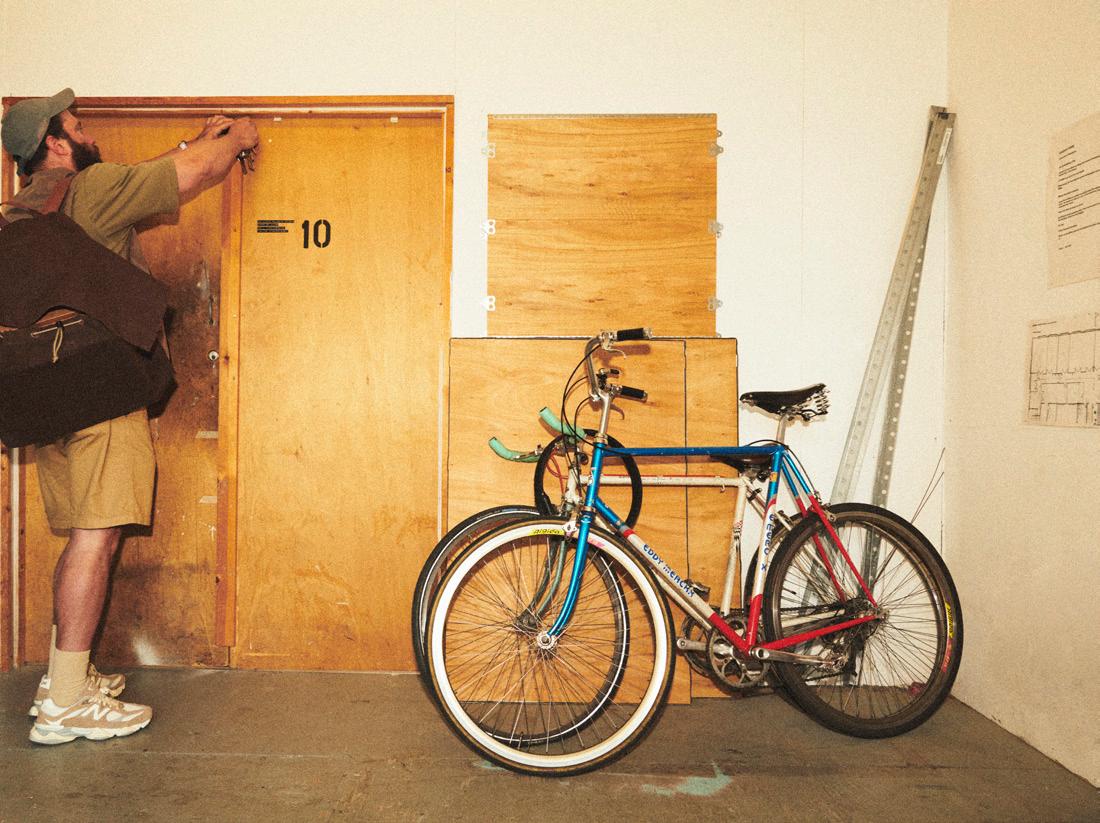


An architect and interior designer originally from Singapore, SACHA LEONG has worked with Studioilse and Universal Design Studio before setting up his practice, Nice Projects, as a collaboration with Simone McEwan.
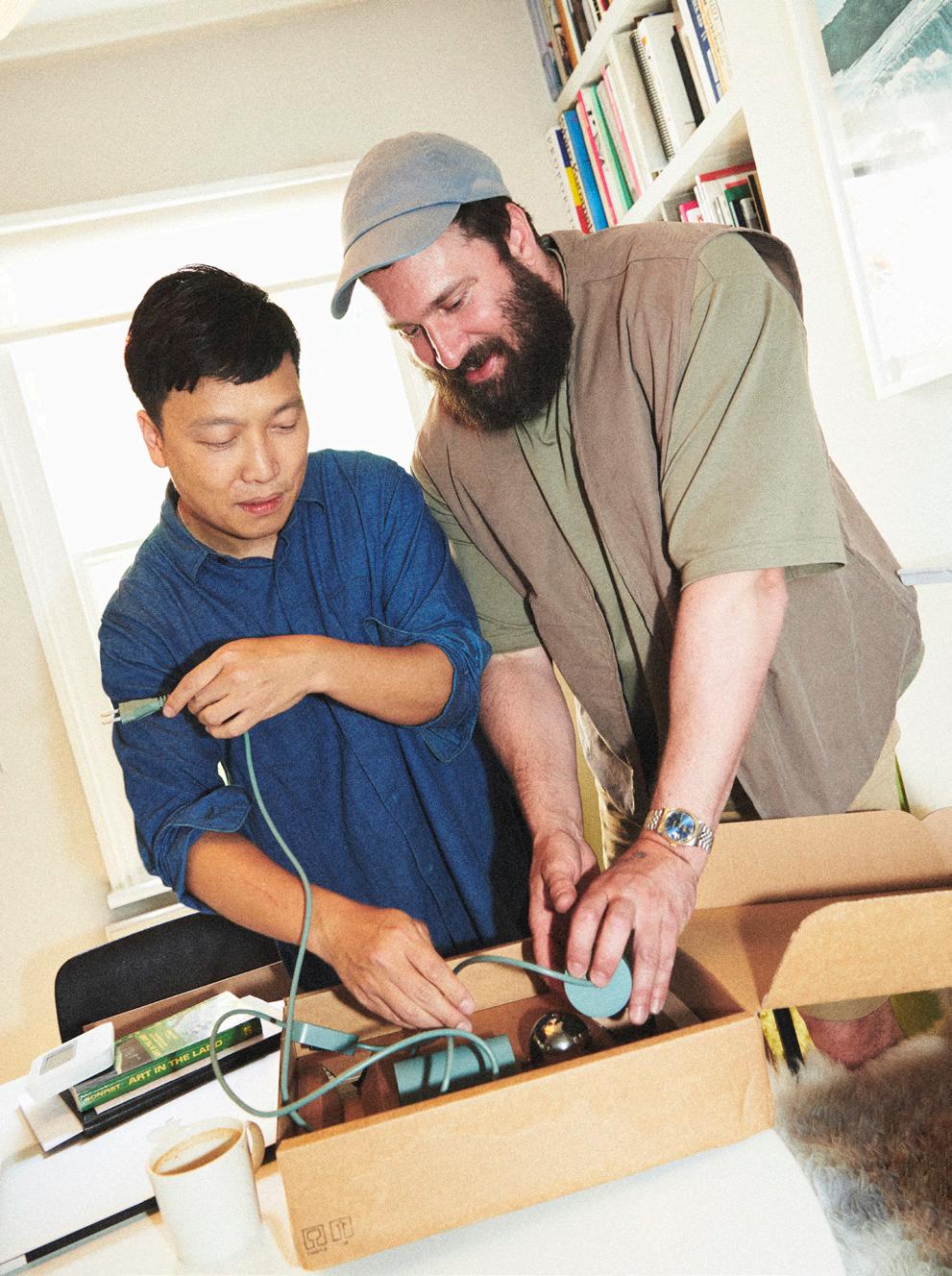
‘I met Sacha at Dover Street Market, he was working at Casson Mann at the time and I was interning at Tom Dixon –we worked in the same building and we became fast friends. As an architect, he really helped me understand what people want, what clients want. As a product designer, I often work in a vacuum, and he helps me get my finger on what it is that people expect from my designs’.
VISITING SACHA, BETHNAL GREEN, 10 a.m.
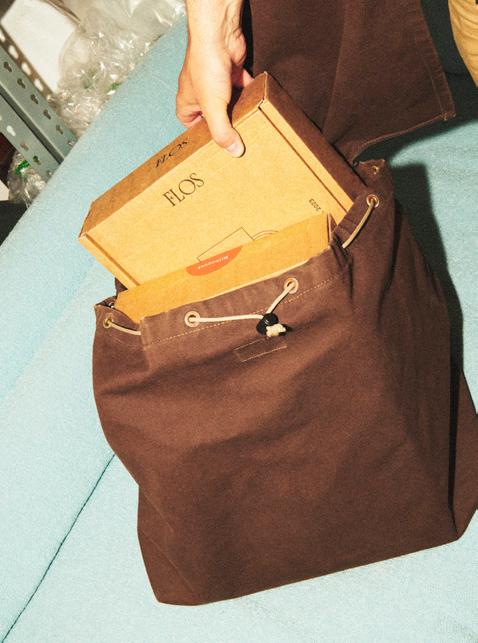
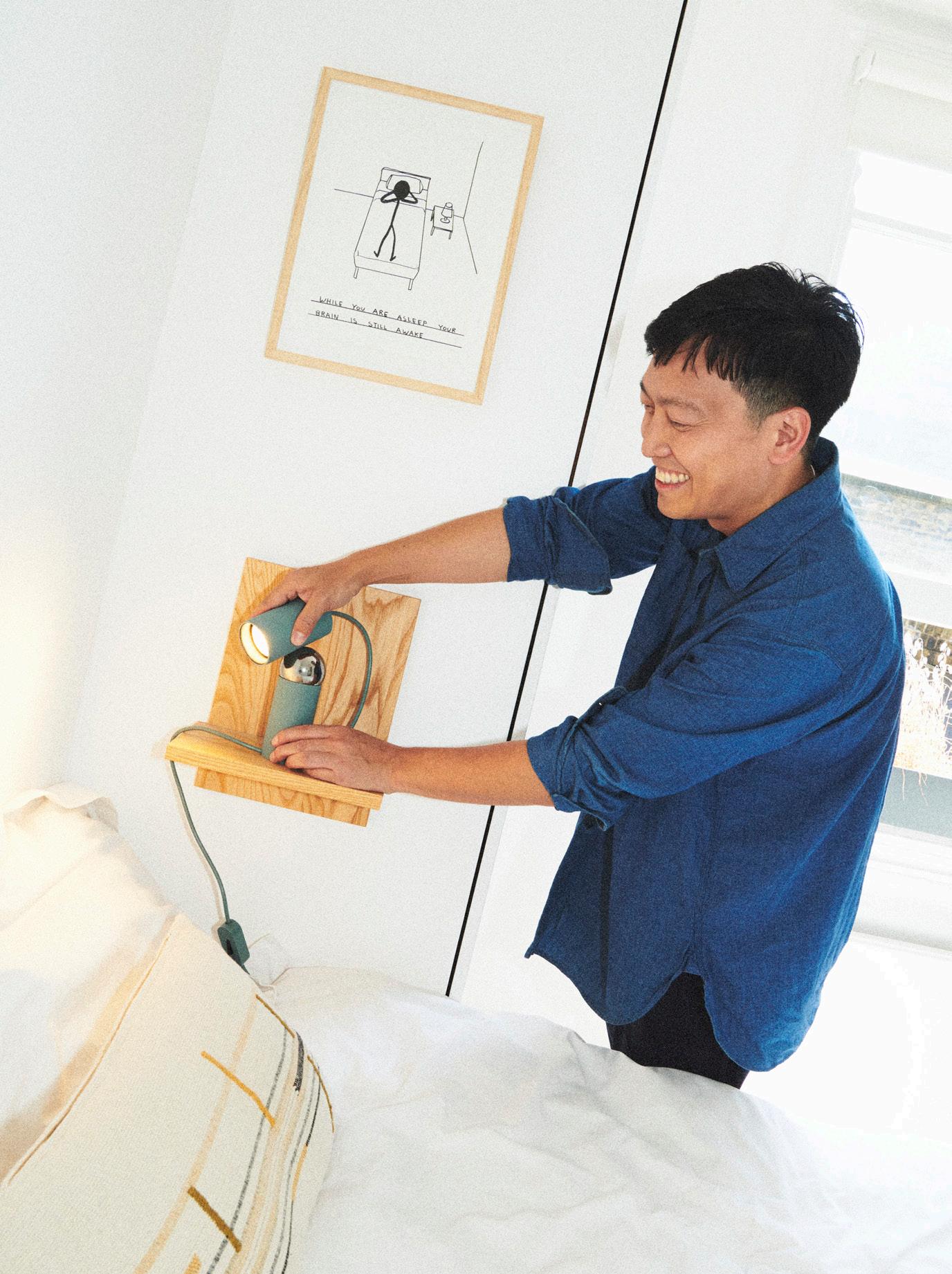
during my time in the city, but there is also David Waddington of [East London gastronomic destination] Bistrotheque. He's as much of a restaurateur as he is a cultural initiator; he fully understands what it is that I do, and also gives me feedback about working for commercial spaces.
ROSA BERTOLI Can you tell me about the role collaboration has had in your career? I noticed that when you talk about your work, you often use the word ‘we’, instead of ‘I’...
PHILIPPE MALOUIN I actually started my studio with Will Yates Johnson and then Eva Feldkamp came in, together the three of us decided to make the studio work, we joined all of our talents like a transformer. Eva was always a great motivator for my studio, and before she left, Julian Komosa came in, and there couldn’t be a bigger ‘we’ than me and Julian. He is a Heaven-sent, talented designer, a ray of sunshine.
And that's why it's ‘we’ because it was always collaborative. And now, for the first time, it's just me, because I am only doing furniture, no special projects. I’d like to have a more worldwide studio, working from different places depending on what I am doing.
ROSA BERTOLI Creating Bilboquet with Flos has also been a collaborative effort for you. What would you say are the most important things you’ve learned from this collaboration?
PHILIPPE MALOUIN I think it made me grow up a little bit as a designer, even though the project is super playful. Because when you design furniture, when you're younger, it can be quite contemplative. At the beginning, you really want to be noticed, and you do crazy things. But then you don't fully grasp how things are manufactured and how they're made, how to design for a specific audience, so all of these things really come with age.
This collaboration is the most industrial design project I've ever done. It looks so simple, but it's so complicated and detailed on so many levels. It's the most involved project I've ever done. The R&D team at Flos really helped me understand how things work; with Fabio Calvi, Paolo Brambilla, Francesco Rodriquez and Andrea Gregis, I feel that collaboratively we've made magic.
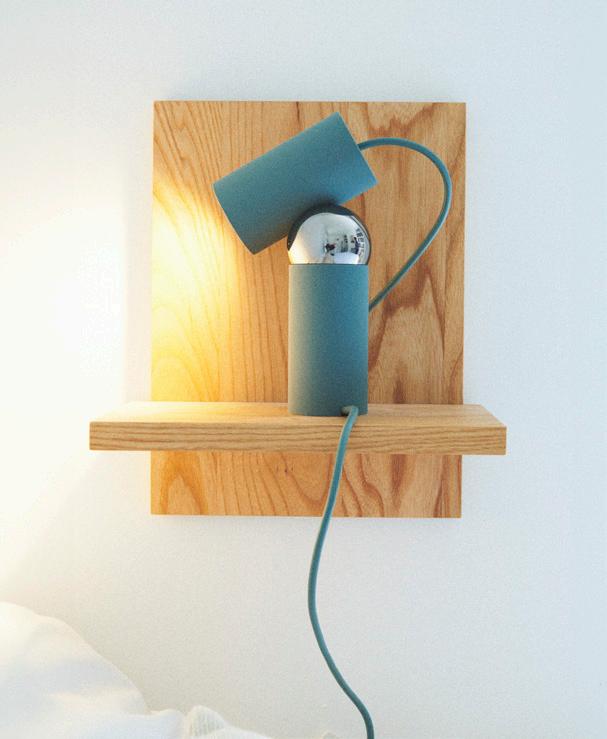
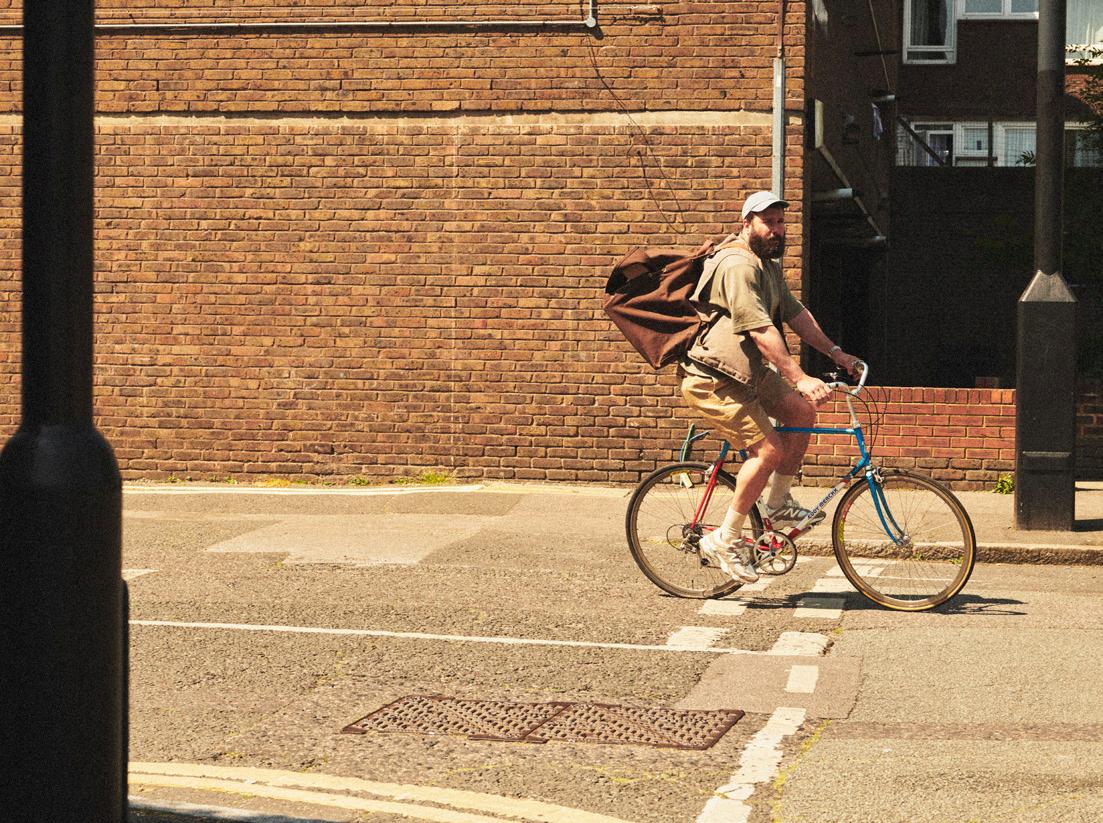

ON THE ROAD TO HACKNEY, 11.51 a.m.
Artist and filmmaker SAM ASHBY is best known for his work as an art director for iconic movie posters that include "Control", and he is also the founder of film magazine Little Joe.
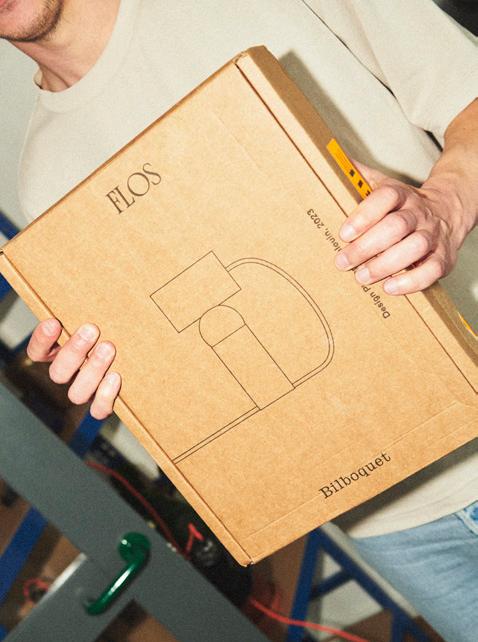
‘Sam is the premier graphic designer for movie posters, but also an artist, a filmmaker. Things such as rhythm, proportion, and pace of a three dimensional object can also be applied in a graphic form. Sam will give me feedback on anything from form to colour, rhythm and composition’.
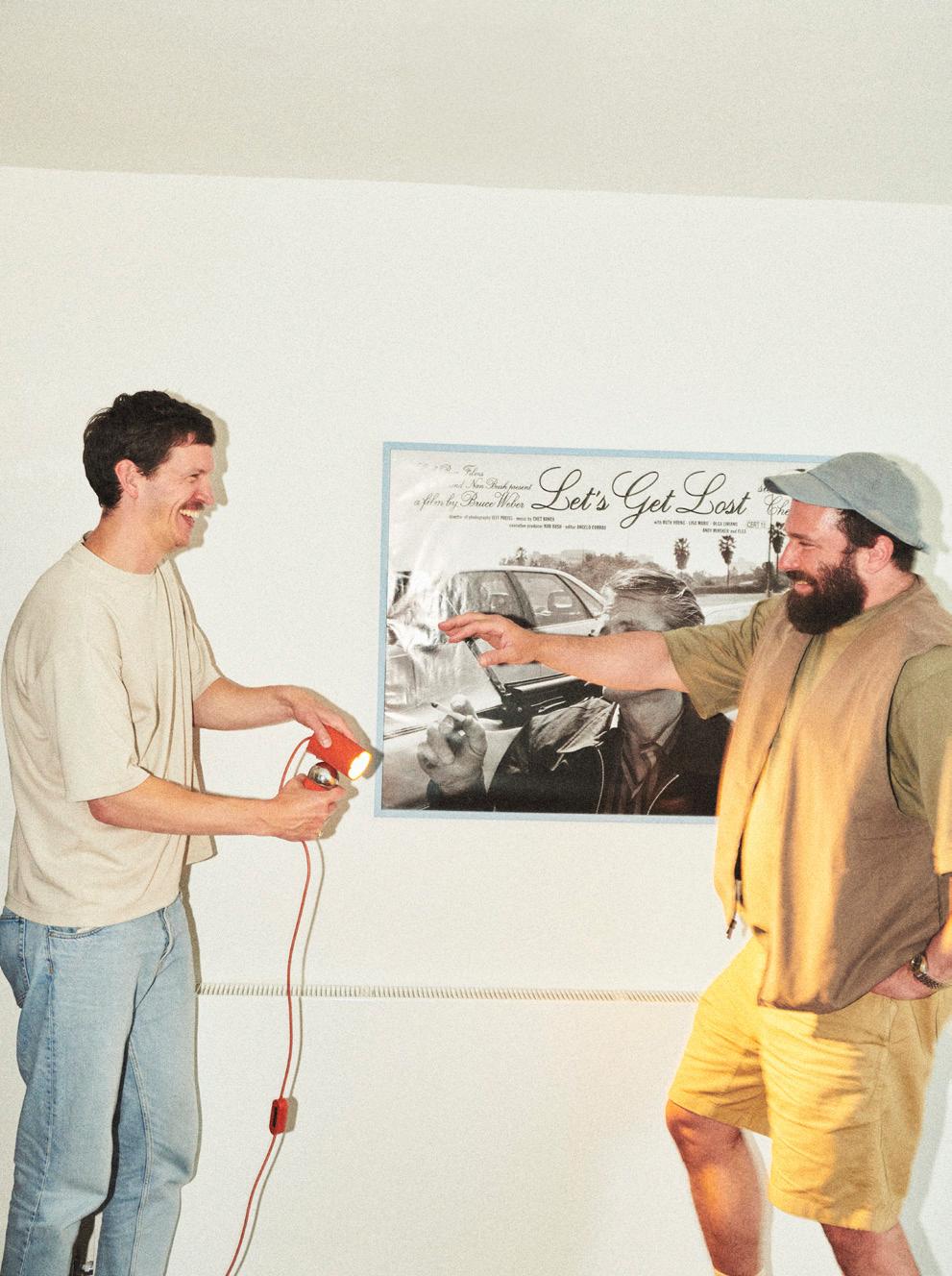 SAM'S PLACE, HACKNEY, 11.55 a.m.
SAM'S PLACE, HACKNEY, 11.55 a.m.
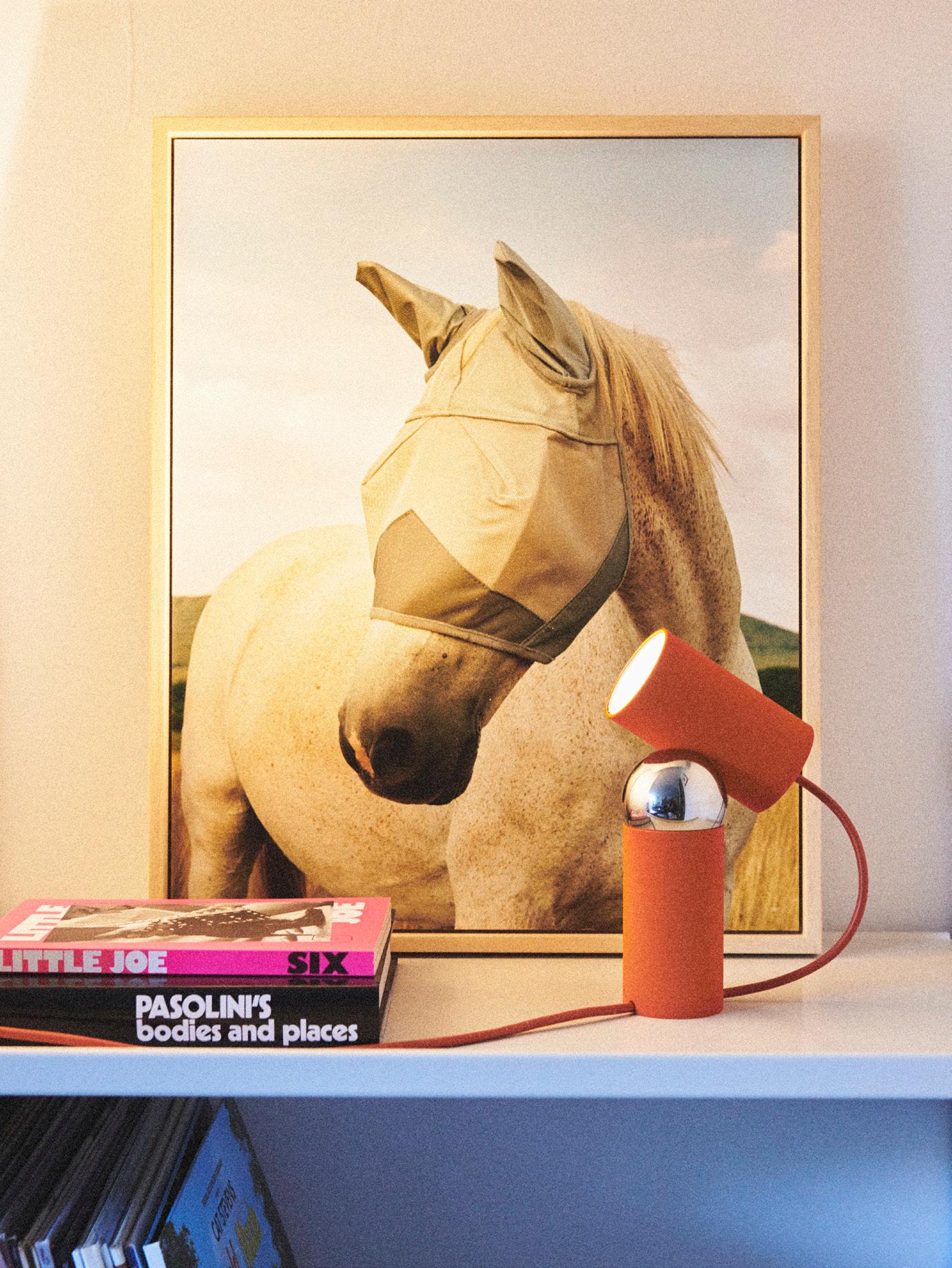
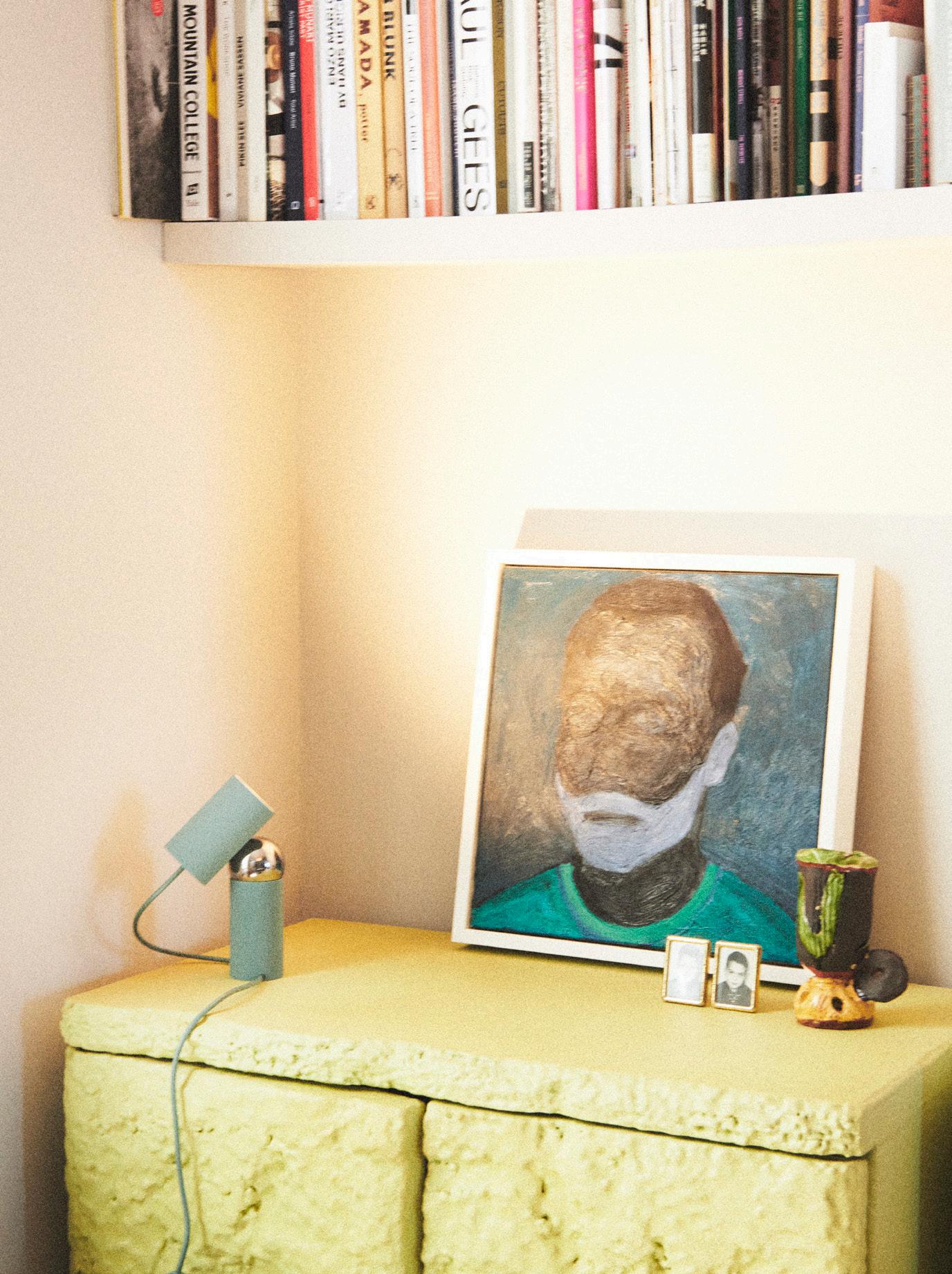
ISSUE EIGHT: FLOWING
Nothing in this issue is static. Not Philippe Malouin’s table lamp that, as he puts it, ‘does many things’. Not Konstantin Grcic’s telescopic Black Flag, a unique idea of a wall lamp that is both functional and a sculptural statement that can take over a space. Not Ronan Bouroullec’s Ceramique, marking Flos’ debut in ceramics and serving as an example of a series defined by subtle variations, where tradition meets formal sophistication and sensuality. And not Taccia, one of Achille & Pier Giacomo Castiglioni’s marvels that has defined Flos’ history, returning now in an matte, all-white version that elevates the original 1962 design.
People across these pages are also in flux: we follow Malouin across east London, as he rides his bike from his studio with Bilboquet in his backpack, to test it at his friends’ homes, exploring its potential. Inspired by Achille Castiglioni’s approach to functionality, Bilboquet serves as a functional illumination tool and ambient light in the same gesture to ‘achieve a lighting design that makes the most sense for whatever you're doing’.
In Berlin, German architect Sam Chermayeff opens the doors to Kufu 142, his modern day commune, where like minded creatives have conceived, planned and built a new idea of home
that eschews traditional boundaries and inspires new ways of living. We test Black Flag in the unique environments of this building; installed in three flats, it allows us to explore the design’s far-reaching possibilities in the context of domestic environments.
Movement is also at the core of Six Acts, a performance led by director Fabio Cherstich to animate My Circuit, Michael Anastassiades’ sinuous ceiling system. Based on principles of simplicity, balance and flexibility, the week-long performance took over the spaces of Flos’ showroom in Corso Monforte during Fuorisalone 2023, offering a welcome pause from the city’s intensity. The lamps and the people we captured across these pages embody a contemporary approach – to life, to objects, to lighting. The conversations in this magazine reveal that design needs to stay dynamic to stay relevant. ‘That is a key element in the work we do because of how dynamic we are as a society, we keep on designing things for changing needs’, Grcic told us. ‘The things that survive are adaptable to those dynamics. But some pieces don't work anymore because they haven't adapted to changing lifestyles. And this gives us opportunities to fill those gaps and find new ways to design the objects that we need, for the life that we live’.
FLOS STORIES 15
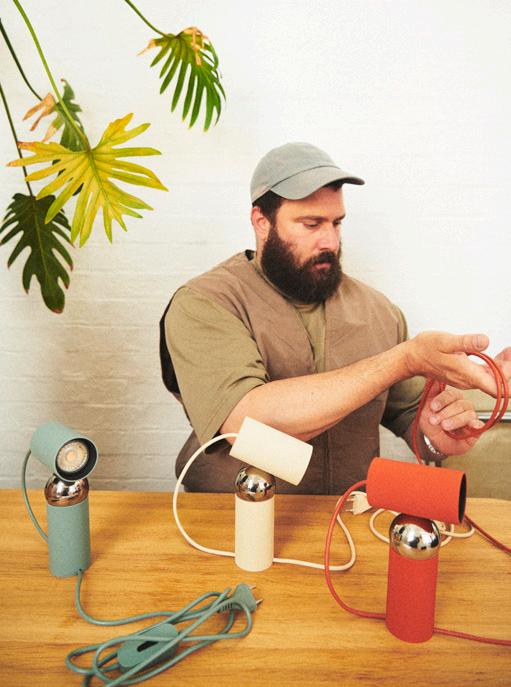



90 Some Light Entertainment by Sany 92 Questionnaire Guglielmo Poletti
↓ CONTENTS 50 Making Céramique ↑ 58 My Circuit in Six Acts ↑
Cover Around East London with Philippe Malouin, Bilboquet and Friends

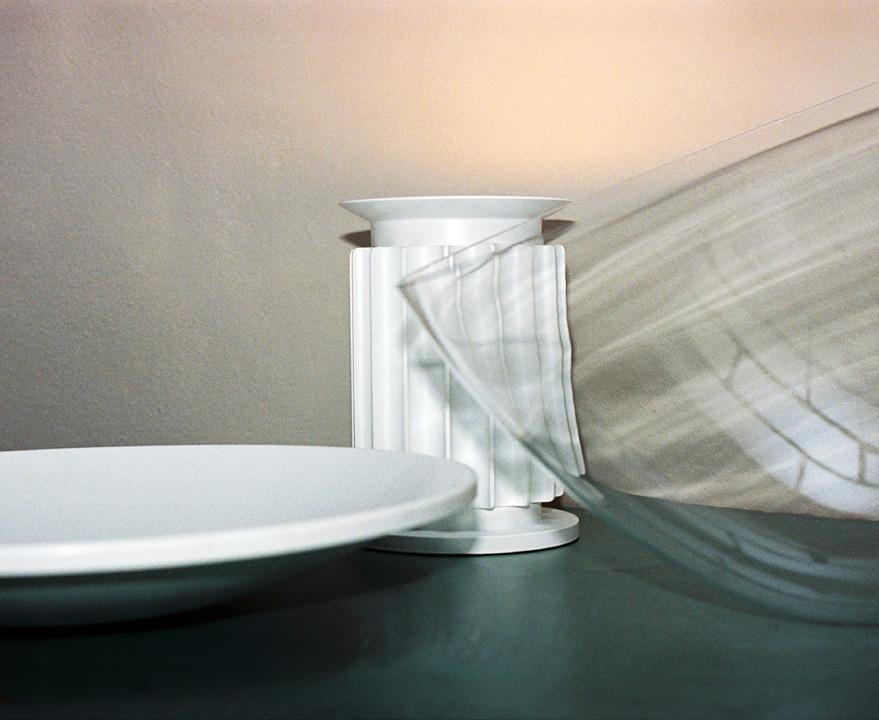
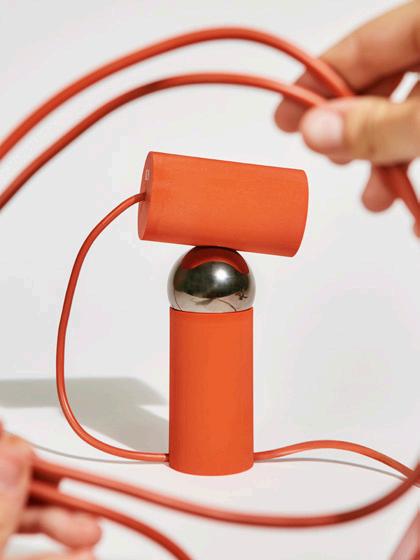
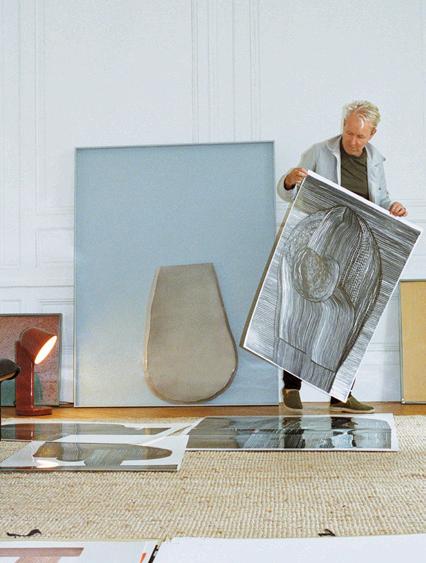

94 Credits 95 New Products 38 At home with Ronan Bouroullec and Céramique ↓ 18 Black Flag by Konstantin Grcic at Kurfürstenstraße 142 ↑ 82 Taccia Matte White ↓ 72 Everyday Bilboquet ↓
BLACK FLAG BY KONSTANTIN GRCIC

Berlin’s Kurfürstenstraße 142 is a communal living concept that redefines the idea of home for the 21st century. Inside, spaces merge, each double-height unit varying in size and interconnected with its neighbours. In this ecosystem of domestic architecture we test the possible applications of Black Flag, Konstantin Grcis’s latest design for Flos. An exercise in the way minimalism combined with technology reinvents functionality, Black Flag is an extendable wall light that offers flexibility of illumination thanks
to the expanding aluminium arm reaching up to 3.5meters from a wall-mounted frame of the same material. Wall lamp and sculptural centrepiece, Black Flag embodies Grcic’s industrial design expertise and demonstrates the experimental opportunities of his approach mixed with Flos’ technical expertise. Black Flag nods to American Punk Rock the lamp’s narrative potential expanding beyond that of a traditional product. We ask Grcic to unpack the lamp’s cultural significance as well as its design concept.
18
AT KURFÜRSTENSTRASSE 142
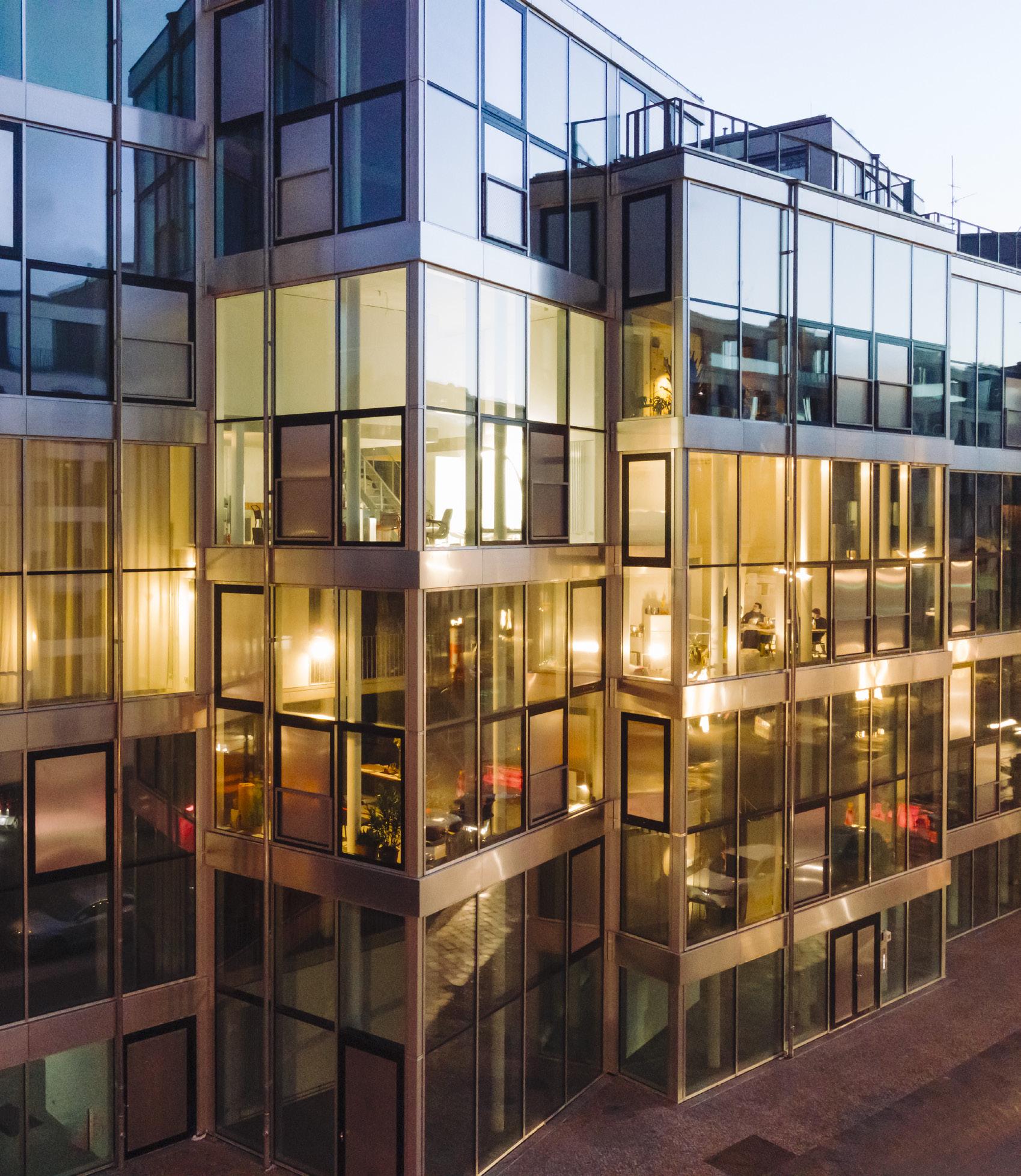
19
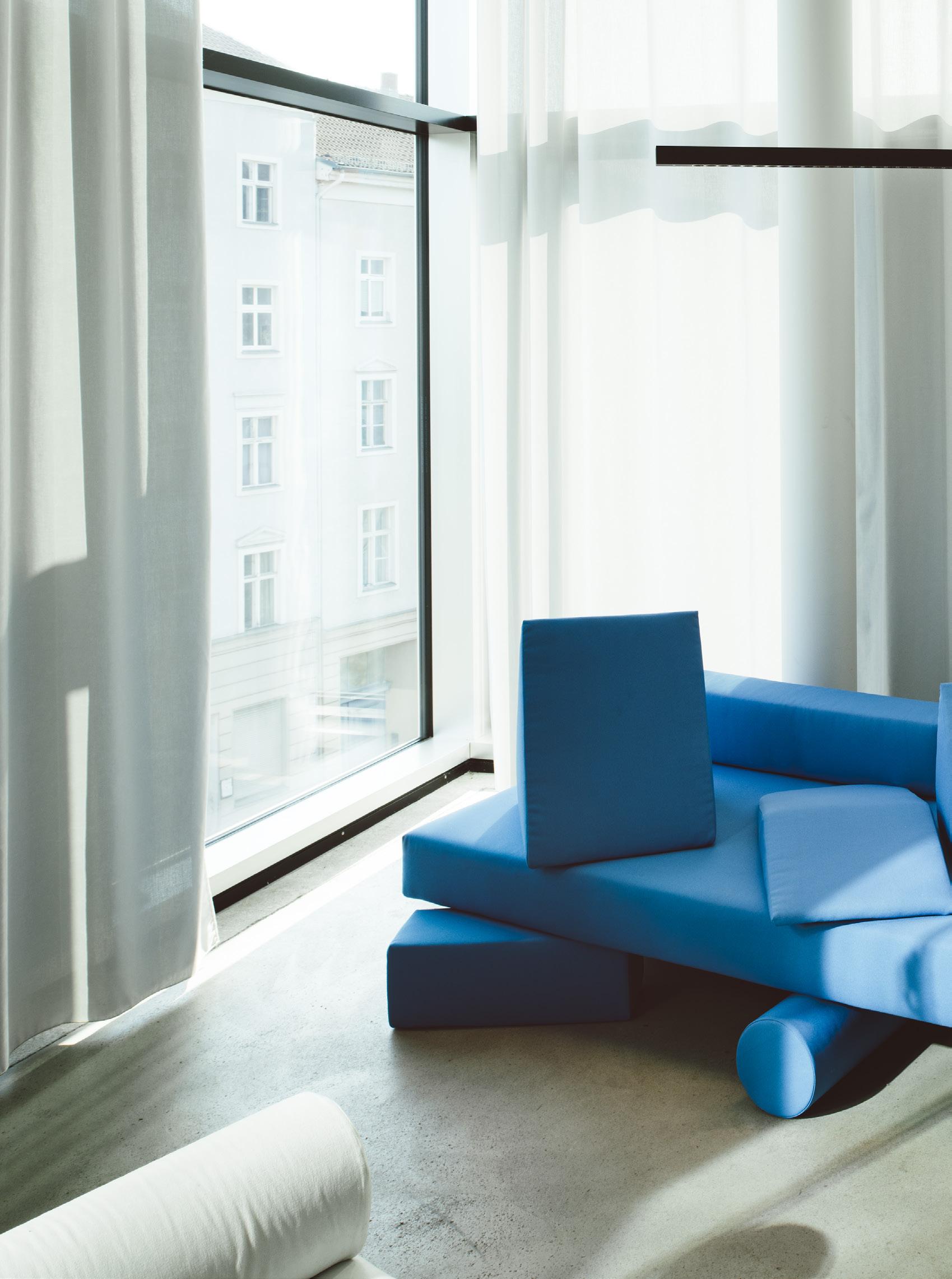

ROSA BERTOLI Can you tell me the story of Black Flag –where did the idea come from, and how did you execute it?
KONSTANTIN GRCIC The project started with a number of design proposals that I presented speculatively to Flos. We took the initiative, proposed several projects –one of them a wall-mounted lamp with a very long reach. The initial idea was to make it in a very light and strong material like carbon fibre, to have a good structure supporting one long arm. Then the project really took many turns. And in the end, we got to Black Flag, which still has a long reach, but it also has a mechanism. It’s not one long arm covering a radius. Black Flag has three pivoting arms, and that results in many more possible adjustments than the original idea, with just one swinging arm. Thanks to Flos, we made that initial idea into a functioning product made of aluminium extrusions, incorporating a lot of technology. That’s the advantage we gained from using these profiles. Suddenly, we had storage for technology.
ROSA BERTOLI What are some examples of what this lamp can do?
KONSTANTIN GRCIC We have uplighting, downlighting, and several different elements that can be controlled in quite sophisticated ways, separately or in conjunction; you can dim the light, change the temperature. There are sensors that detect if you’re near the lamp or not. It gets very technical, it has become quite a beautiful machine. And I love machines.
ROSA BERTOLI Is there any previous work you have done that has informed this concept?
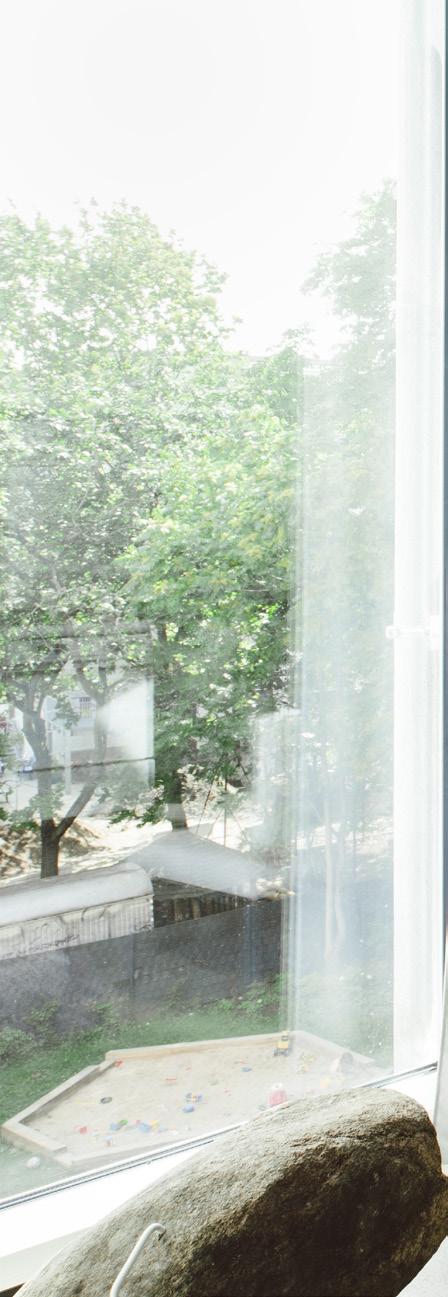
KONSTANTIN GRCIC For Black Flag, we kind of started from scratch. When a project takes as many turns as this one, you take a side road and you go past a place where you’ve already been with another project. There was one concept many years ago, maybe as far back as 20 years ago –an exaggerated big large table lamp that could reach over the span of a long big table.
And I have also done other projects where I am using the colour black and projects where I have not been afraid of experimenting with machines, of making an object that is at first edgy. I would say that Black Flag has an aura. The lamp does have an impact on the space, simply by the presence of this big object. It doesn’t give away any comfort, it doesn’t even give away being a lamp. When you see it you may like it or not, it’s either “Wow” or “What is this?”. In both cases, I think you’d be cautious. You would approach it with care, try to understand how it works. And this psychology has been part of a few projects. I like how creates an intimate, a very direct relationship between the user and the object. I see caution as something interesting, and this kind of relationship usually turns into something really good.
22
SAM CHERMAYEFF
‘All the internal boundaries of my house are really flexible,’ says Sam Chermayeff, who worked on the building as part of architectural practice Meyer-Grohbrügge & Chermayeff. Conceived by a group of like-minded individuals, the building consists of six asymmetric towers with glass facades. ‘Rooms are not rectilinear, they’re folding into each other and are able to accommodate different situations. You start out with a flexible space and then change it over time. The home gets a little bigger when you have neighbours suddenly present. It allows for a slightly expanded field of home. I like that Black Flag can expand in its own field: at first, you can just illuminate a wall, or a small corner, but you can also make a bigger space. The way it grows, that works really well here’.
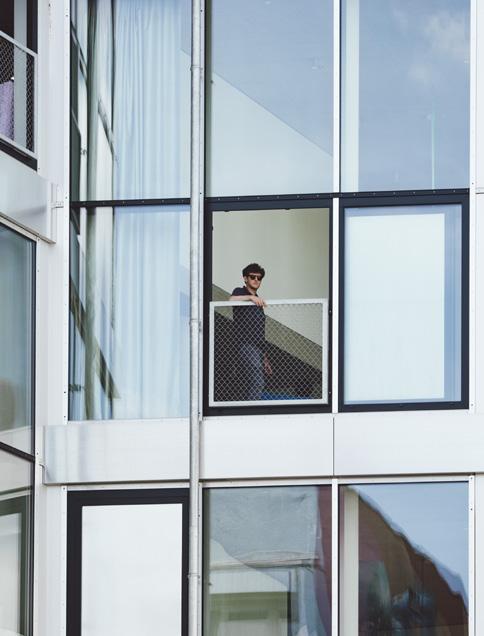
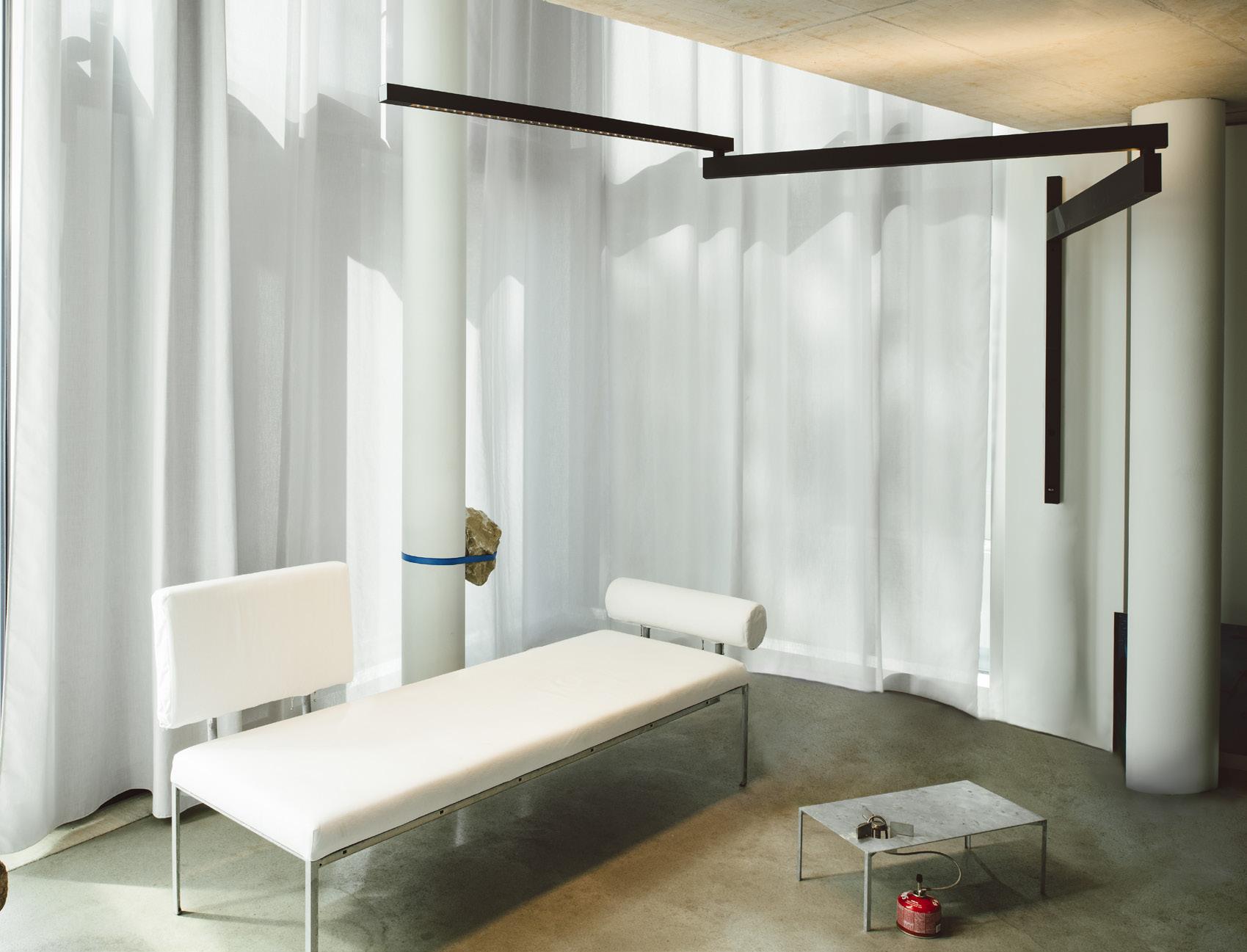
23
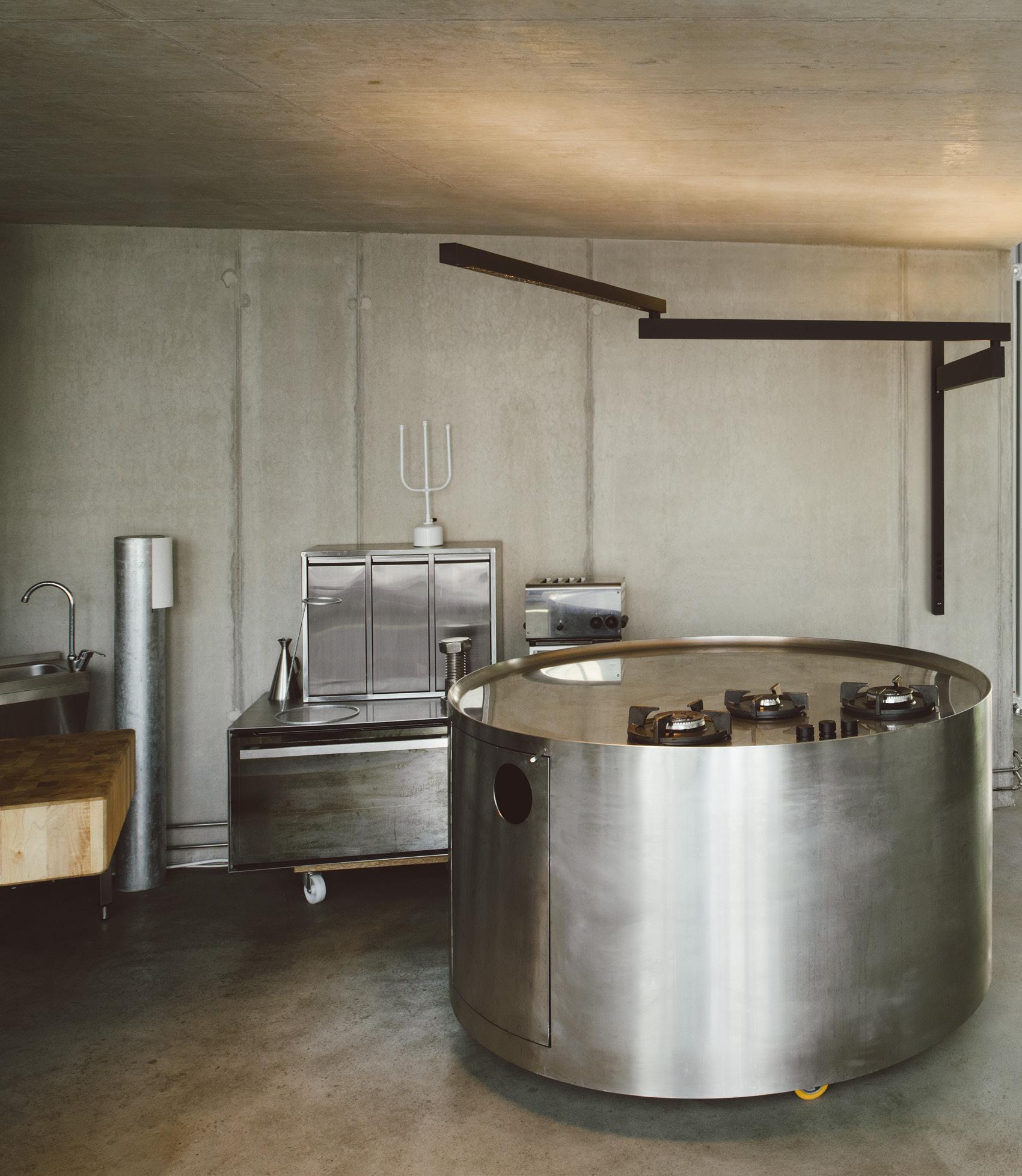
24


25

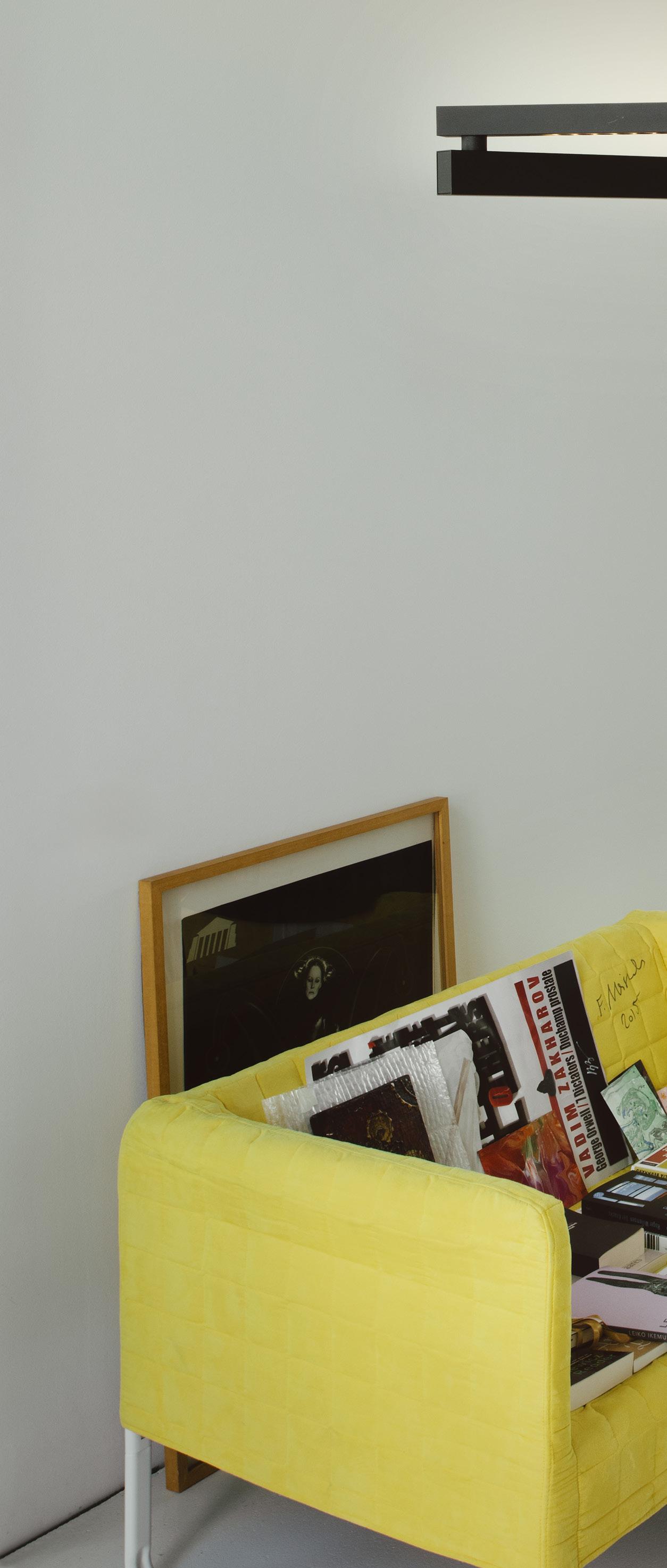
26

27
ROSA BERTOLI I have heard you use the word ‘rebellious’ to describe Black Flag. And you don’t often hear that word referred to a lamp.
KONSTANTIN GRCIC Rebellious is a word I have used because we are calling it Black Flag. The image of the black flag kind of happened when the lamp became what it is, but Black Flag was also a very famous American punk band from the West Coast. Henry Rollins was the singer, and they were straight edge –that's what they called themselves. No drugs, no alcohol. Straight Edge is a movement within punk where everything is very pure, direct. So this name came up, and I loved it.
ROSA BERTOLI Its use is also not straightforward, I’d perhaps call it a hybrid lamp, its functionality is so multifaceted. It’s a lamp that’s attached to a wall but it’s not a wall lamp, it’s a statement lamp but also functional. It’s hard to define.
KONSTANTIN GRCIC That was an interesting turn that the product took: an object that I initially conceived as raw and a bit brutal became a very sophisticated lighting tool. It offers a lot of interesting lighting technology, different modes, but the mechanism also allows this lamp to change the mood according to your needs inside a space.
And then when you come back to the name Black Flag, it was really unexpected that the lamp in this totally closed position resembles a flag. The black flag is a protest tool and it’s unexpected and unusual that a lamp becomes that. At Euroluce, we played with the idea of the protest flag in the exhibition. There was one lamp that carried the words ‘ACT NOW’ on it. In its closed position, you see one of the words (depending on which side you approach it from), and when the lamp unfolds, it dissolves. But I thought it was interesting to play with a domestic object; it's not a political lamp but I wanted to see what happens if you put words like that on a product. It’s about this moment in time. ‘Act now’ is really something that could be true for so much of our current world situation. We need to act. And also, this is a lamp, but it needs the user to act with it. It doesn’t work unless you have a very physical interaction with it.
ROSA BERTOLI How do you imagine it in a space –have you thought about how people will use it?
KONSTANTIN GRCIC One application would be a space within which different things happen depending on the time of the day. So the lamp moves along with you and your activities, from being the lamp on the desk where you work to being the lamp over the kitchen to cook, over the table to eat and then to the sofa to relax. A radius of activities within a space. Another scenario would simply be a large space, with only a few objects holding the strength of such a space. Sometimes you have big spaces and the lamps simply get lost –Black Flag is strong enough to hold a big environment.
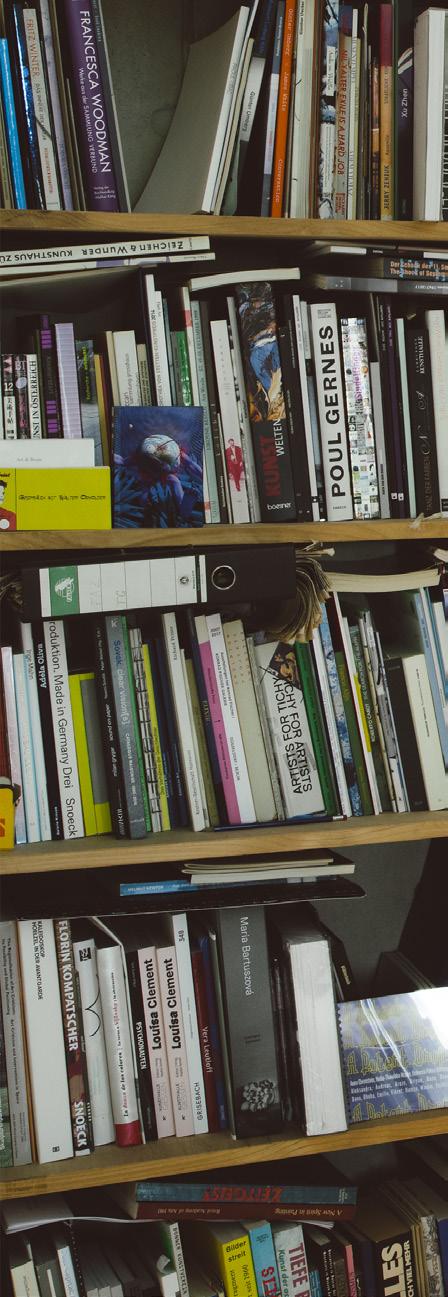
28
NOEMI SMOLIK
Art critic Noemi Smolik was looking for a loft space in Berlin when she came across the group’s project and joined in. ‘In my apartment, I don't have many objects: a table for writing, a dining table in the kitchen where I host my friends, and a place where I can sit down and read. I asked Sam to build me a mezzanine for my bed.’ In her apartment, Black Flag is able to illuminate the entire space in a few sweeping gestures, from sneaking over the dining table to reaching over the bookcase and reading corner.
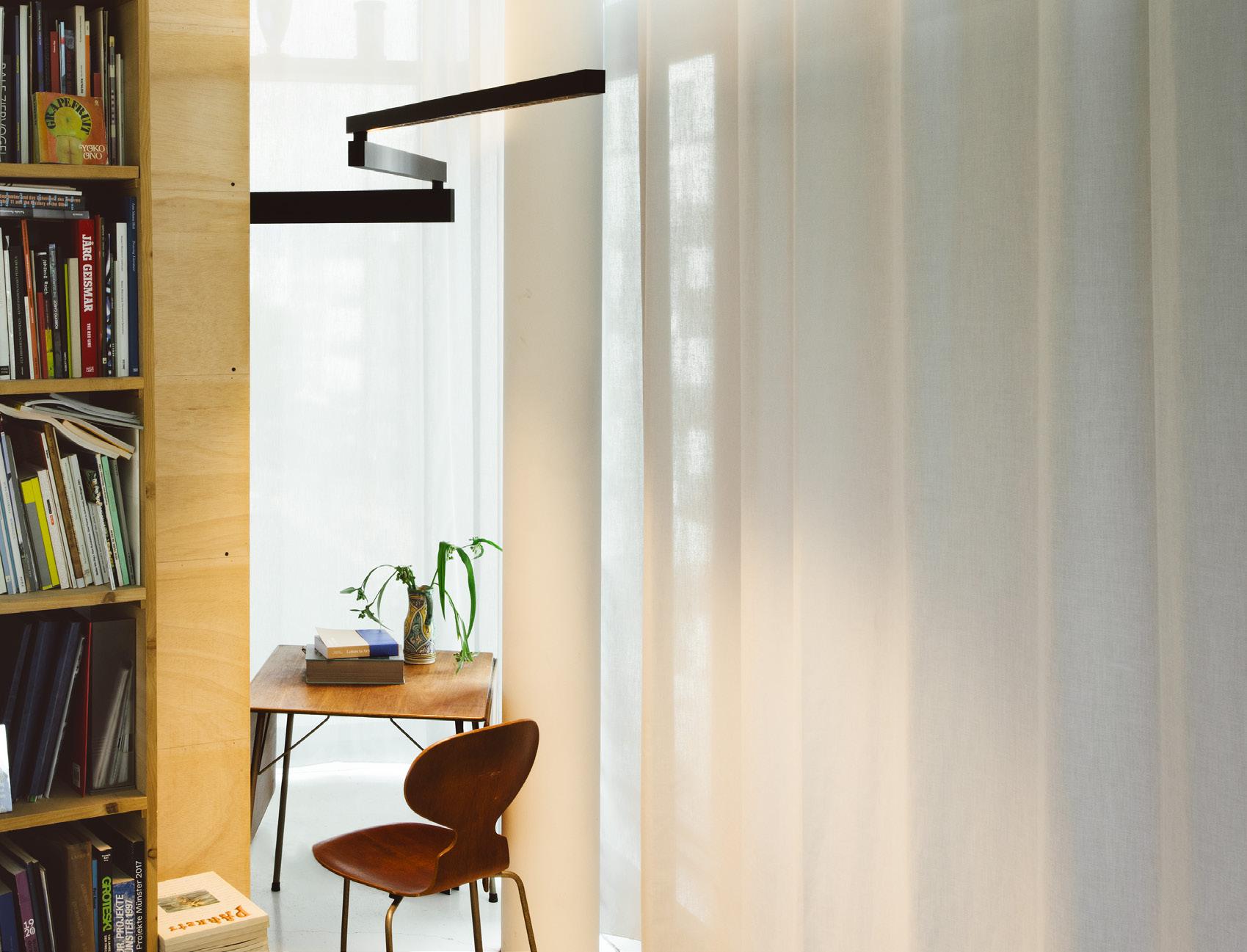
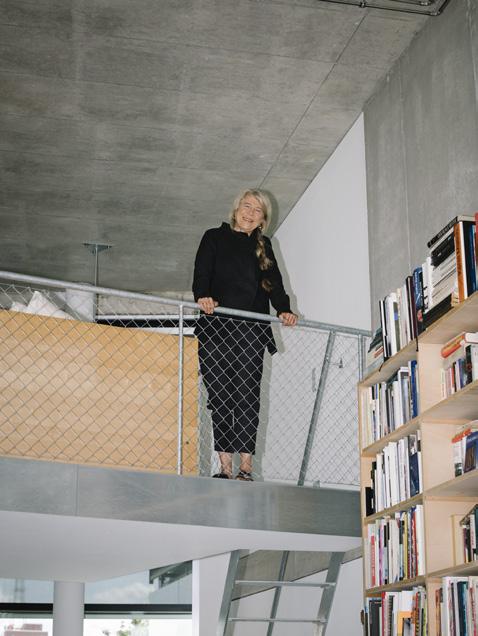
29
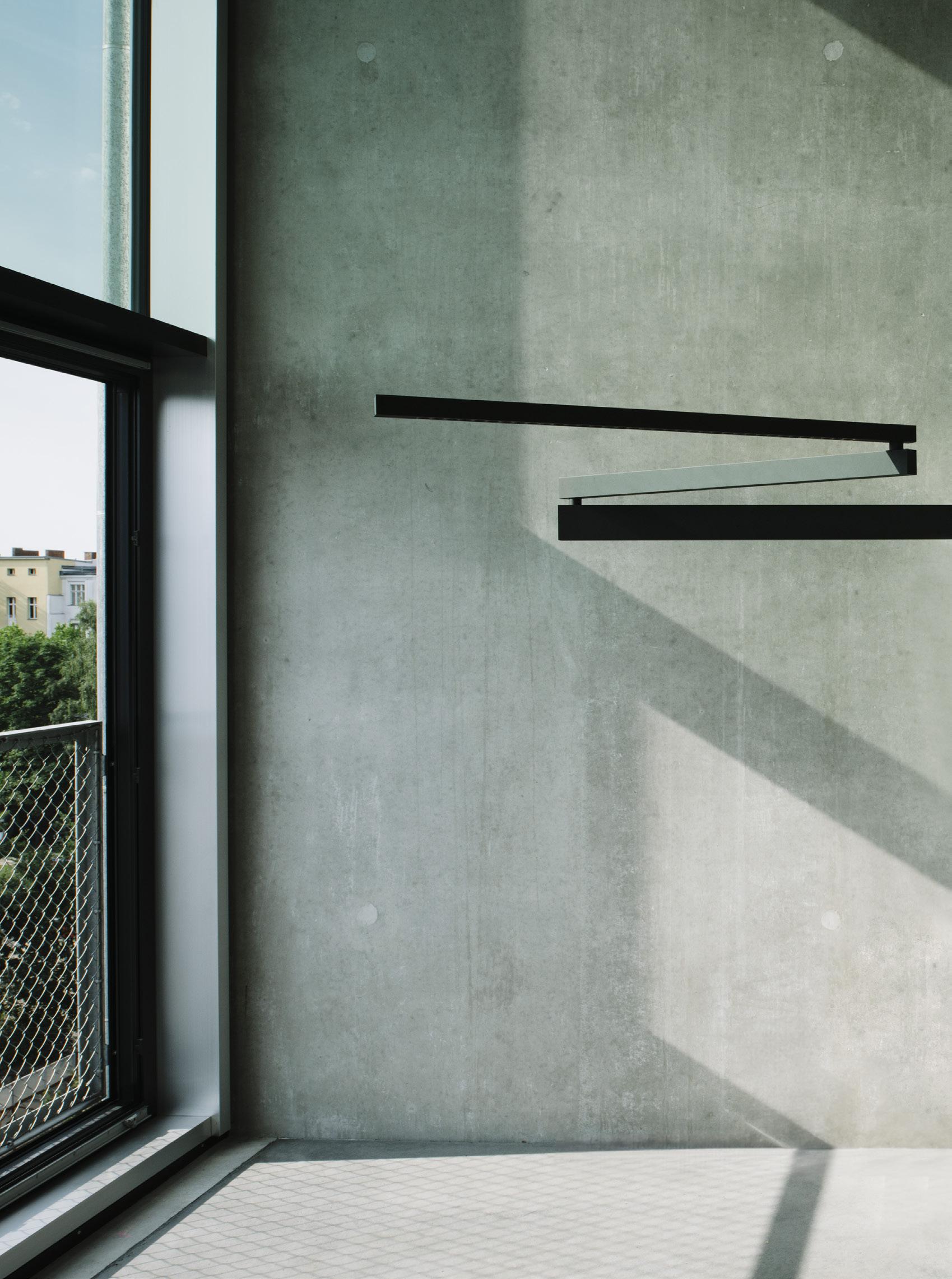

And whether it's a public or domestic –I have never been concerned about these distinctions. They don’t really exist anymore; there is a soft transition between these typologies.
ROSA BERTOLI Black Flag is one of the designs that inspired us to call this issue ‘Flowing’, to talk about movement and flexibility in design. How much of your work is dynamic, whether in intention of use or in the design itself?
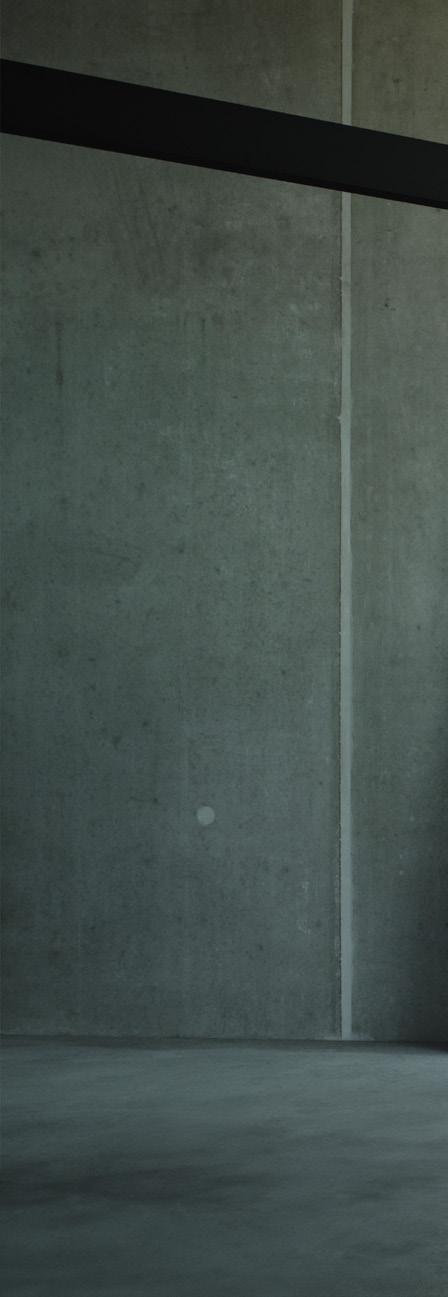
KONSTANTIN GRCIC Very early on, I started to put handles on my furniture, whether it’s a hole to put your hand in, or like in Mayday, a hook and a handle to really encourage people to pick things up and drag them or carry them from one place to another. Another level of dynamics is how you use an object not in one prescribed way. I want to give the user control of how to use my objects, and for that to happen, the object should give some clues –not precise instructions but a hint of what you could do. Mayday is a good example of this, the hook is a clue, the long cable is another, the cone-shaped protector is another clue. They give you ideas of what to do with the lamp without making any prescription.
That is a key element in the work we do because of how dynamic we are as a society. As people, we are constantly changing, and this is the reason why we keep designing things, because we keep on designing things for changing needs. Of course, we can live happily with old things, and the old things that survive are adaptable to those dynamics. But some pieces are really old fashioned and outdated, they don't work anymore because they haven't adapted to changing lifestyles. And this gives us opportunities to fill those gaps and find new ways to design the objects that we need for the life that we live.
32
OLIVER HELBIG
‘We, who built the house together as a "construction group", have known each other for a long time, as the planning started back in 2012’, says Oliver Helbig, who also captured Black Flag in the space to create the images across these pages. ‘The production with Flos and Black Flag was interesting because I photographed it in the three flats, and they all have a very different floor plan. The different room heights in particular are exciting and depending on how you place the lamp you get very different moods. I like that it can look around the corner like a curious animal’.

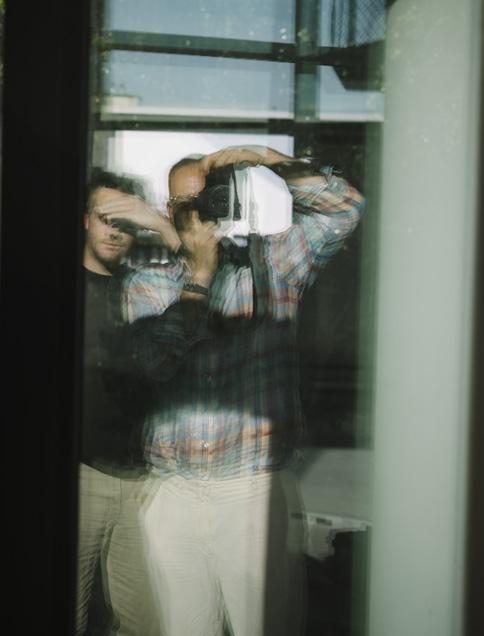
33
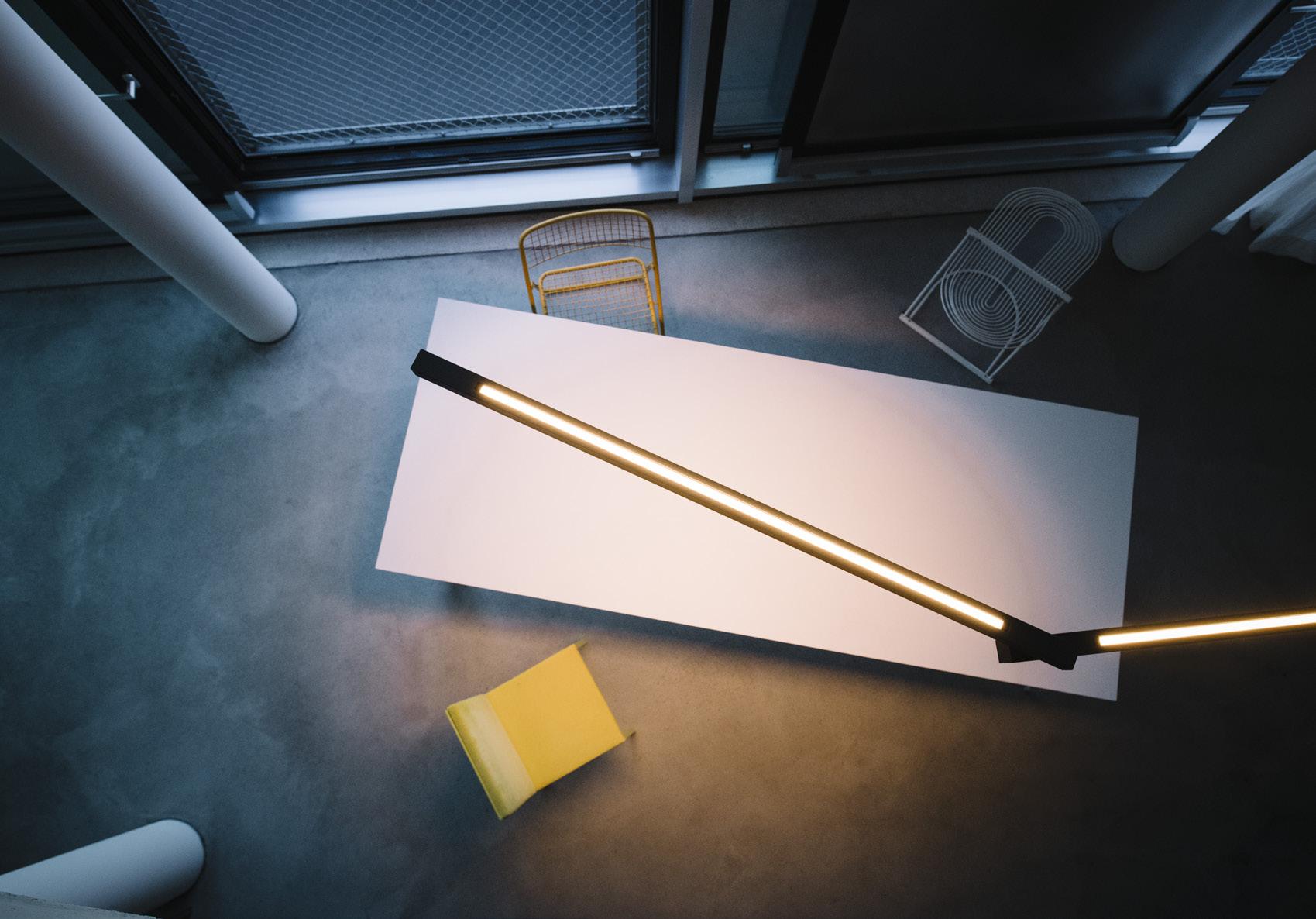
34
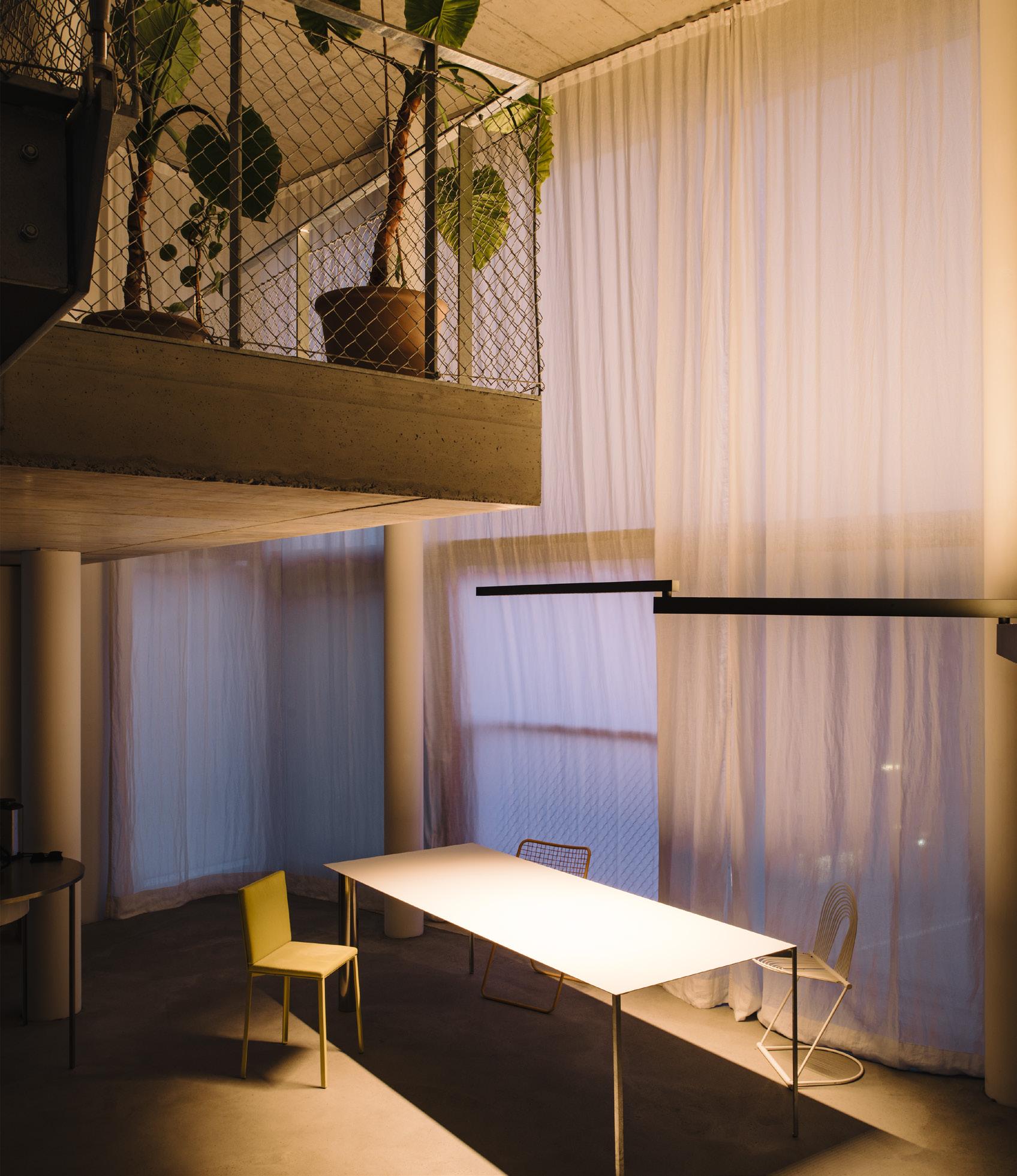
35
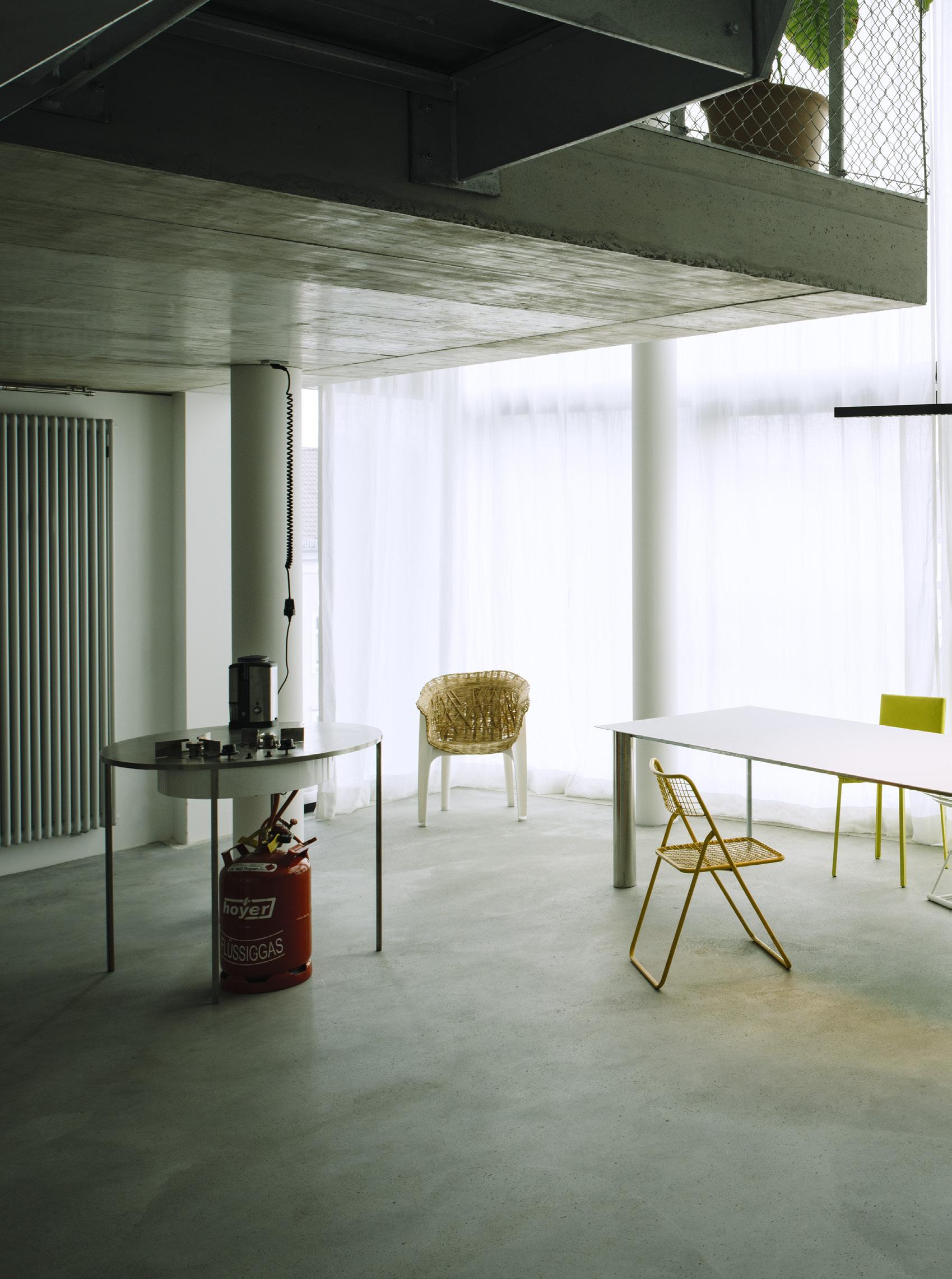


AT HOME WITH RONAN BOUROULLEC AND CÉRAMIQUE
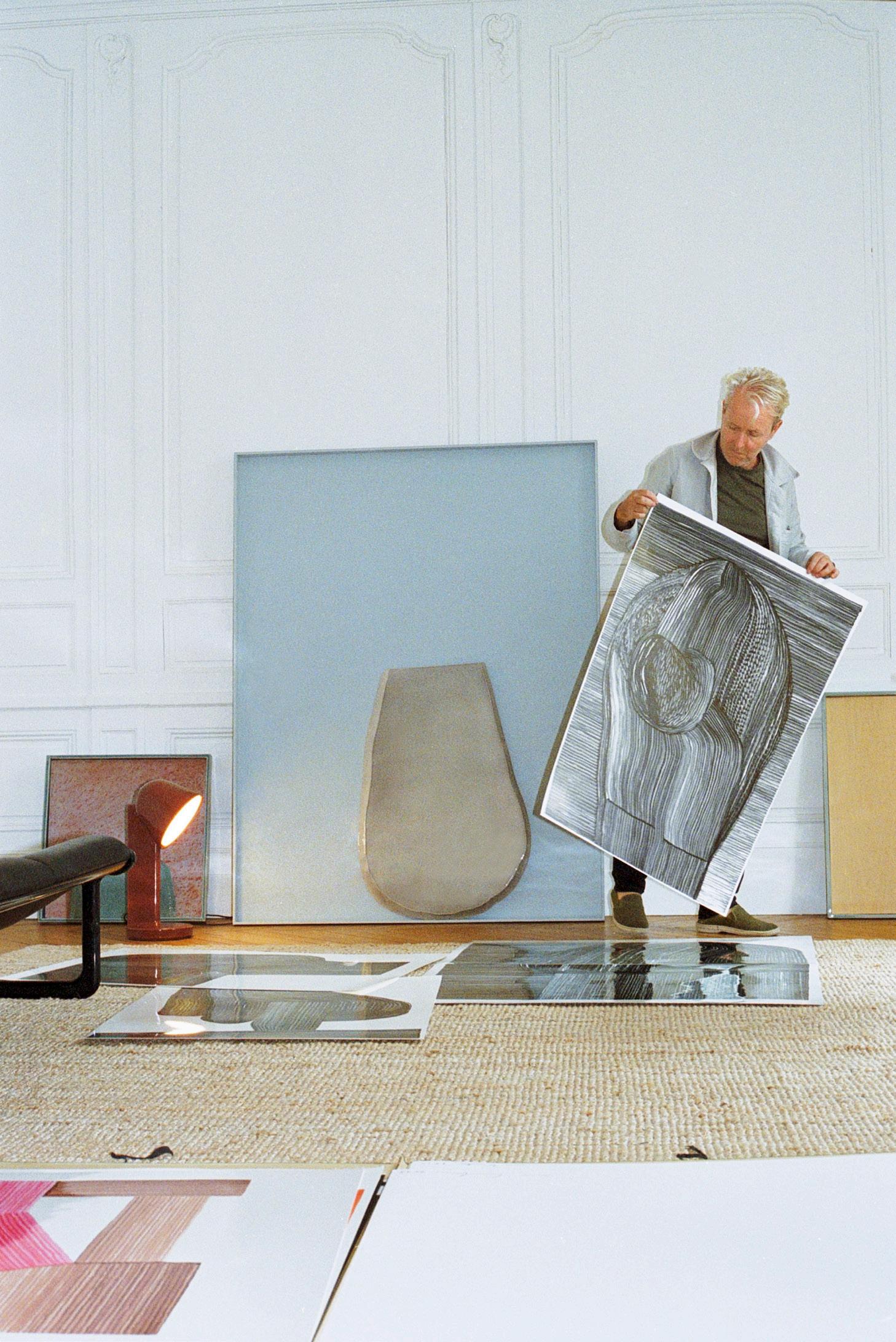 Interview
by Rosa Bertoli
Interview
by Rosa Bertoli
39
Photography by Angèle Châtenet
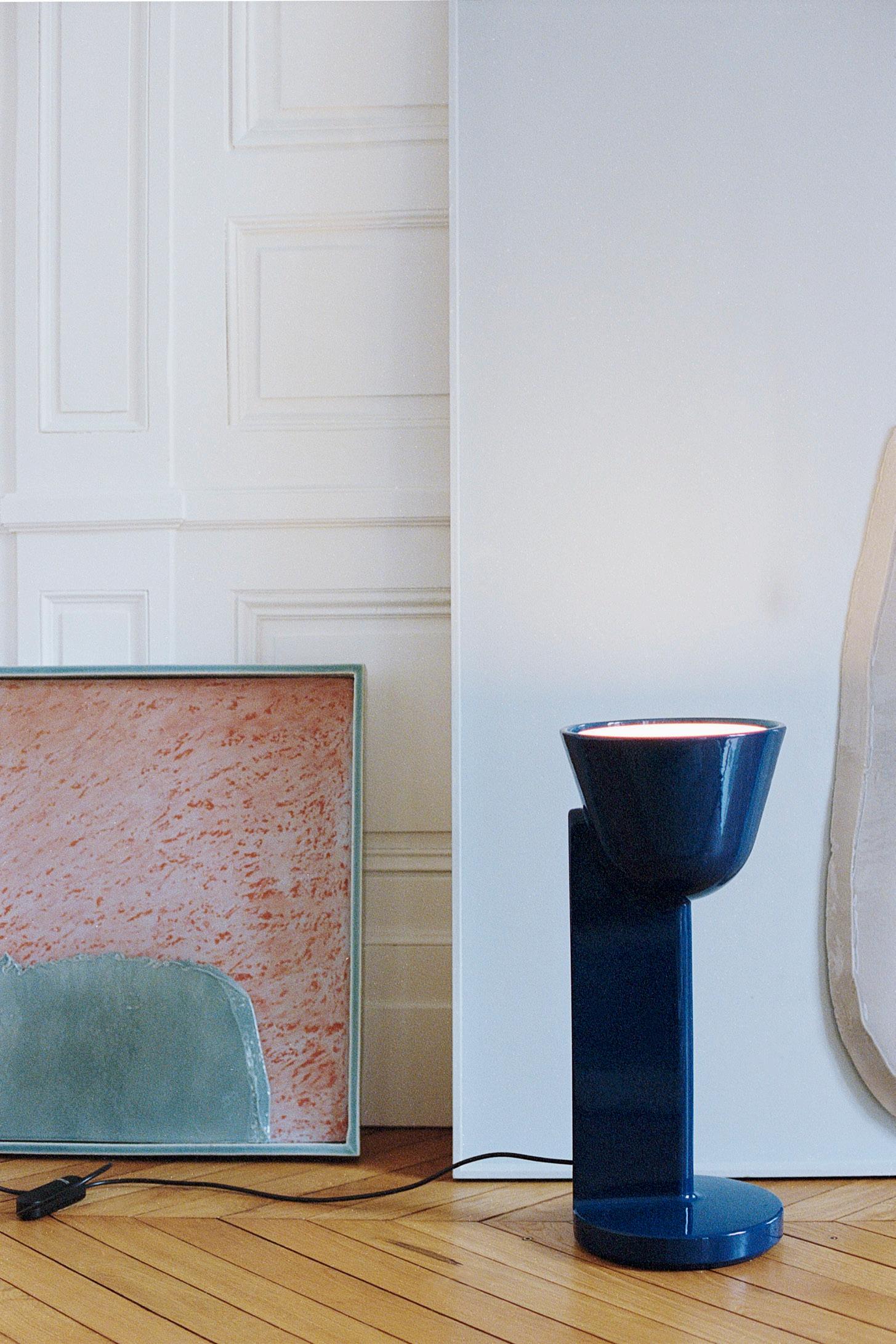
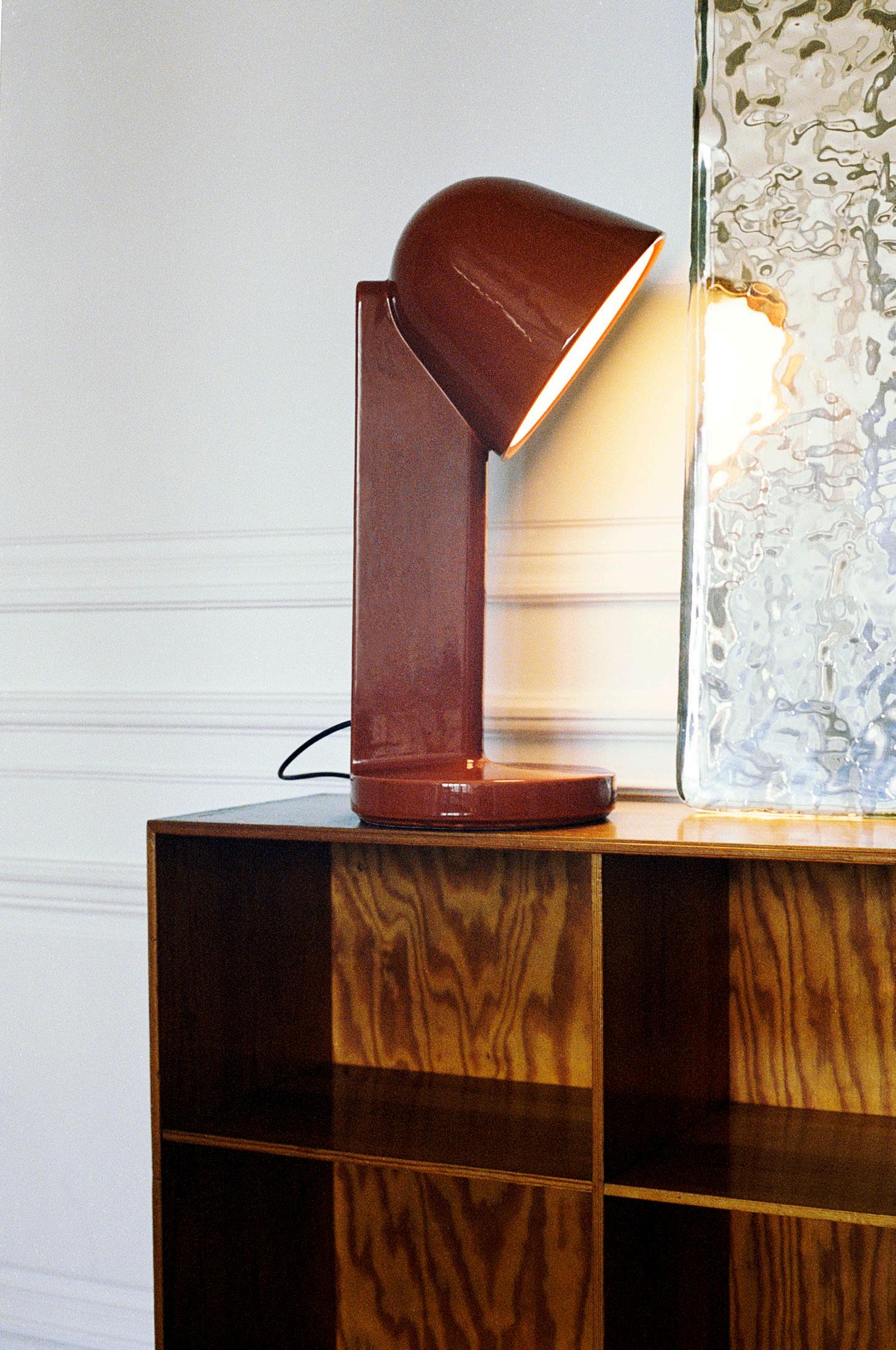
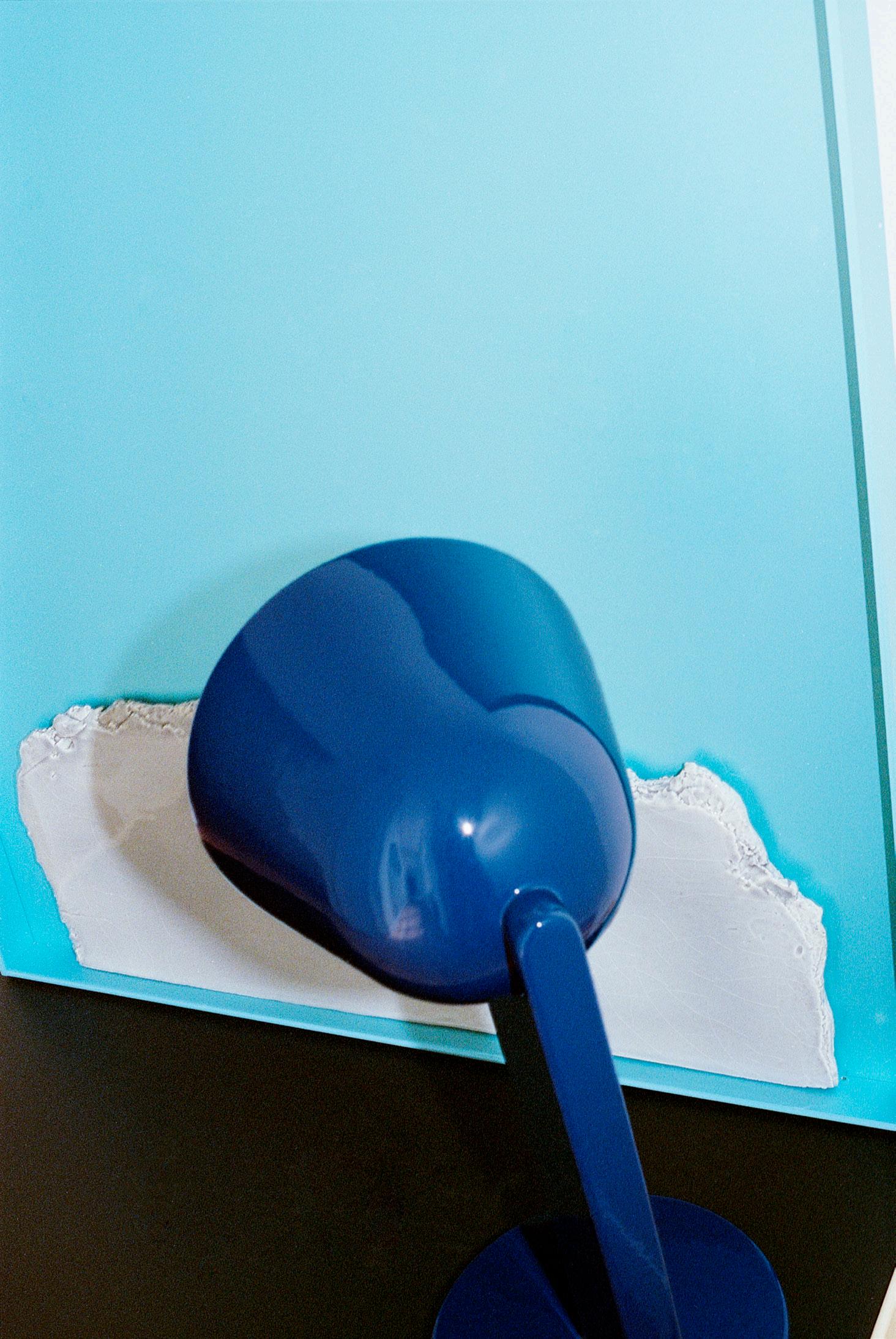
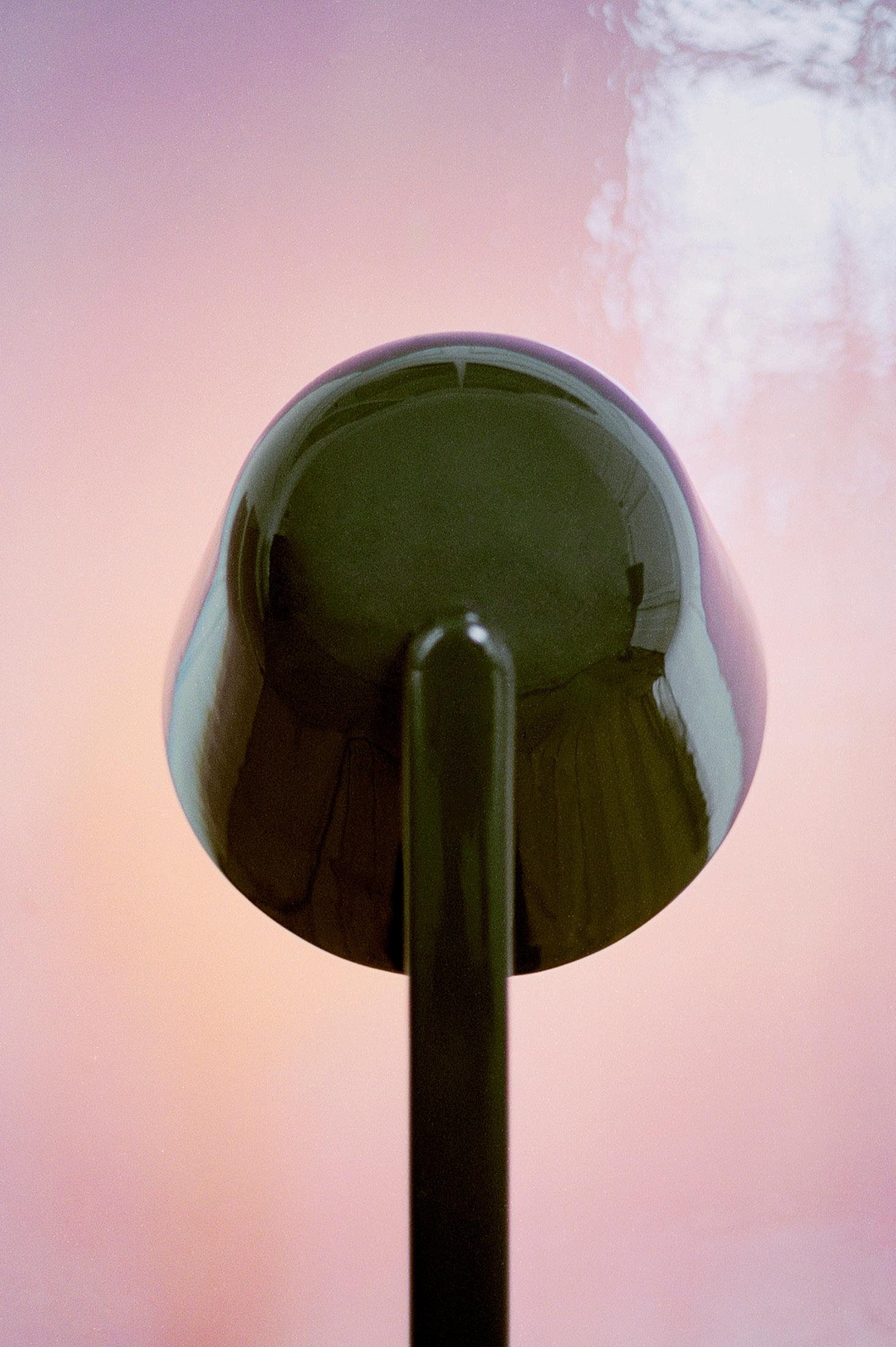
Ronan Bouroullec’s passion for ceramic was the catalyst for Céramique. A first for Flos, this lamp is the pure expression of a material, a union of the hands of a designer that can create visual poetry and the savoir fair of a company that can translate it into an object. We visit him at home, in Paris, to see Céramique in this intimate space and delve into his passion for this material and its evocative potential.
ROSA BERTOLI Ceramic has been a key material in your work over the past several years, and you have used it both in a bidimensional way for your bas-reliefs and for three dimensional designs, such as vases. Where does your passion for ceramic come from?
RONAN BOUROULLEC Ceramic has always been in my life. I grew up in Quimper, in Brittany, which still today is an important place for the manufacturing of ceramics. As a kid, one day a year the manufacture would open and I would go visit, and I was very fascinated by their methods and processes. Then one of the most important projects I did, one of the first, was in ceramic. At the beginning of my career, in 1999, I was spending every weekend in Vallauris, in the south of France, where I worked with a craftsman turning clay to create the Torique collection of objects and furniture.
I wanted to be an industrial designer but from the beginning I started working with craftspeople, and I was always fascinated by this ability of doing things in ceramic. It’s a bit like drawing, you can do things immediately. You need to cook it or draw it of course, but in principle it’s something easy to manipulate.
Ever since this initial period, I have done objects in ceramic at the studio, for Mutina for example we made industrial bricks or tiles, and more craft-like objects in Japan, with Tajimi Custom Tiles. I have a strong fascination for this material: it’s a soft, organic, dynamic and unpredictable magical thing. The way it is glazed, the way the colour appears, that the colour is not exactly how you want it to be, never totally right, a bit shifting –I like that.
ROSA BERTOLI When you introduced Céramique, you said ‘ceramics are about desire and sensuality’ –can you tell me more about that?
RONAN BOUROULLEC In this day of synthetic industrial production where shapes are perfect, lines are well done and we use systems to reproduce exact shapes, I think ceramic has something more sensual. It’s always moving a bit in the kiln, and the way the glaze melts is often unpredictable. What makes ceramic interesting is the small variation in each piece and in the industrial world perfect reproduction, I am interested in this variation, these little differences.
ROSA BERTOLI And now you've taken this material and you've brought it into a company that is very serious about its industrial processes, and the way it produces things. Where did the idea come from to use ceramic for a lamp with Flos?
RONAN BOUROULLEC The idea for Céramique comes from a period when I was working on huge complex systems, projects like the Luce Orizzontale for the Bourse de Commerce, and I felt like something was missing. I think in the past 10 years lighting design has been moving very rapidly towards intelligent technical systems. But I wanted a beautiful lamp, something like the designs that Tobia Scarpa and Achille Castiglioni had created for Flos: objects with interesting geometries that are producing simple light, that can fulfil a simple need like illuminating your bedside or a table. Something that is well done, full of pleasure. An object that you love.
ROSA BERTOLI How did you develop this idea with Flos?
RONAN BOUROULLEC I thought it was interesting to do something that wasn’t a new system or a complicated exrtrusion, something that would be coming back to a basic starting point of light. The idea was to make lamps that are made of just one piece of ceramic, and with just simple bulbs that you can screw on. Not a complex system to dismantle, you unscrew the bulb and you’re done.
44
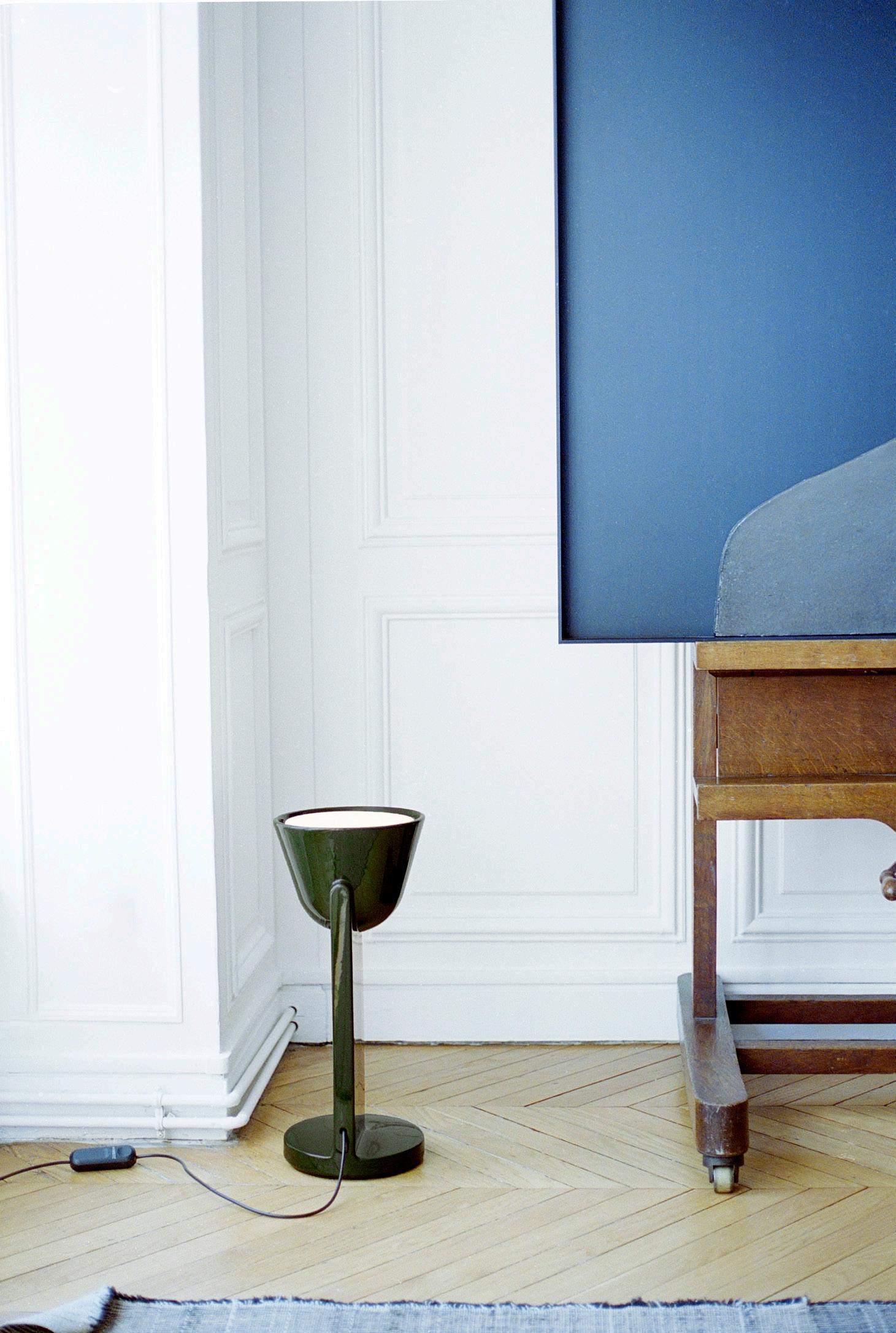

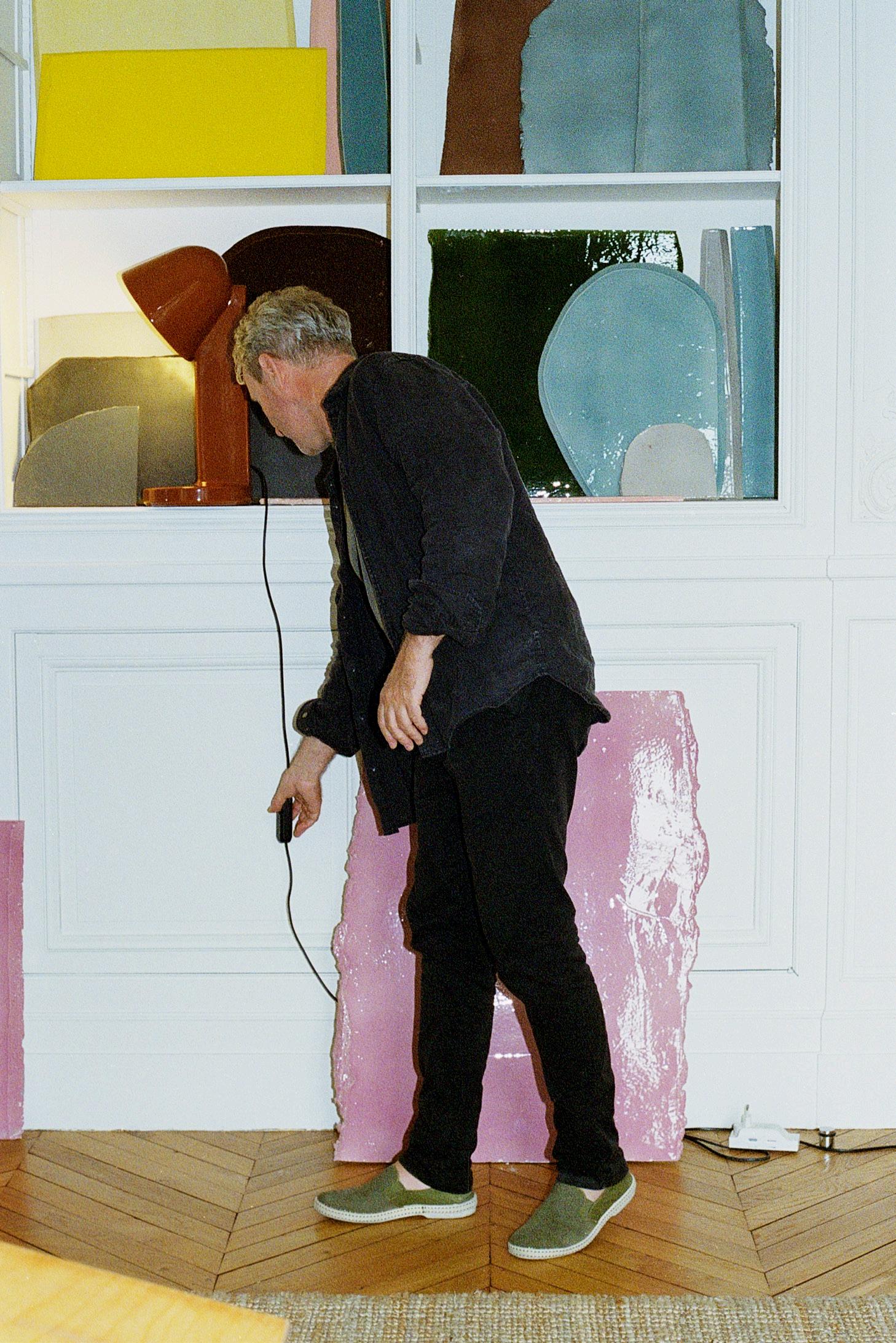
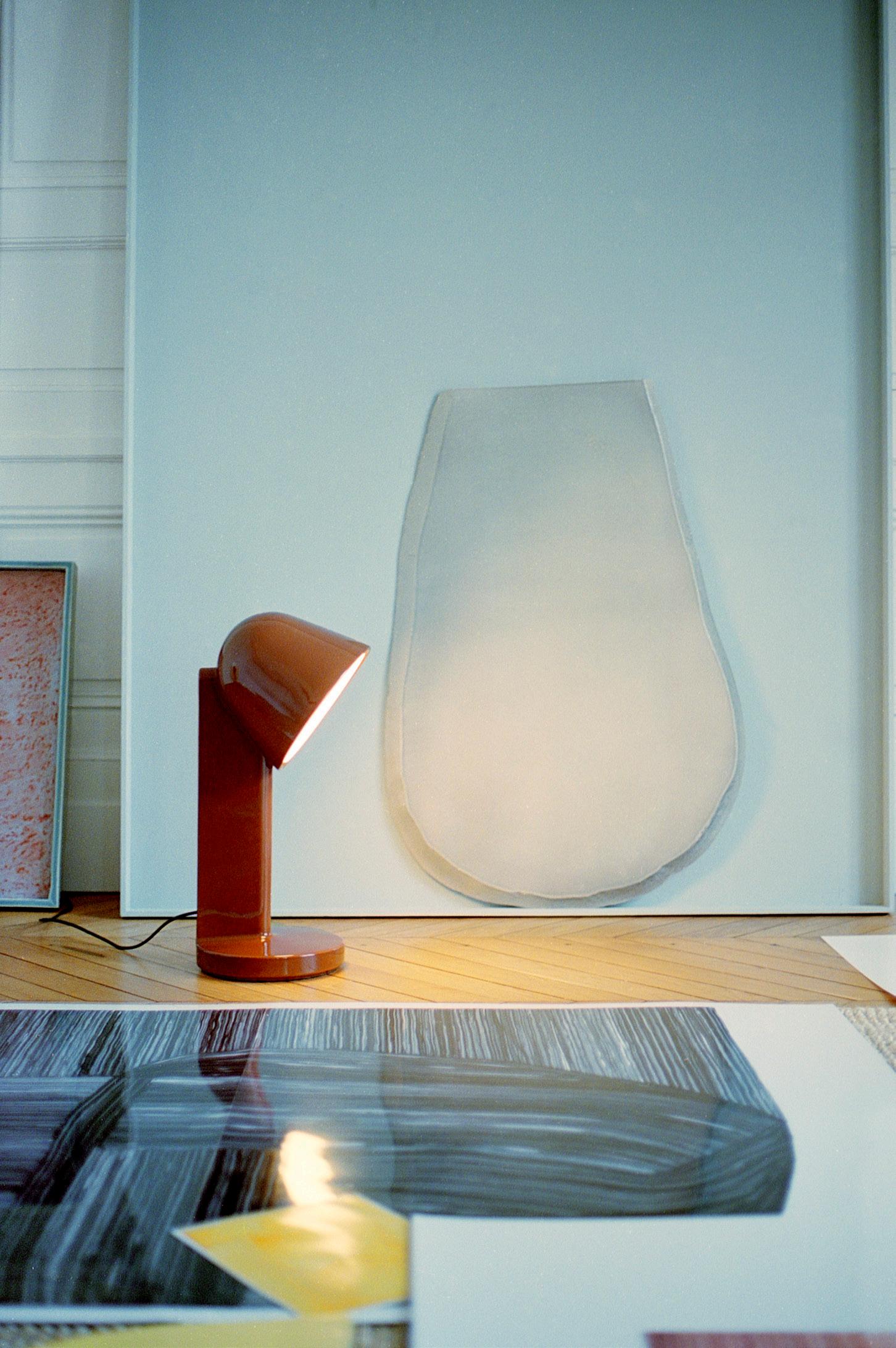
Céramique is a very basic object that has charme, because sometimes we need a simple thing like that. Of course it will not solve all the lighting problems in a space, but it solves a lot of the basic needs in an apartment or a house, when you need a good atmosphere and want to be surrounded by beautiful objects.
I also thought ceramic was a relevant material because Flos is located in italy, a country rich in different artisanal techniques, full of companies of different sizes, from craft ateliers to medium workshops to big companies. And I think it's part of the role of a designer to find a way to save these small manufacturing locations, and enroucage them to continue to produce, so they don't disappear. I think this kind of Italian company making nice objects in ceramic needs to be protected, and this was an important point of the project.
ROSA BERTOLI The design of Céramique is reminiscent of what we would consider a traditional table lamp, but then it also has an entirely different character, which is partly a result of it being made in this material. Can you tell me how you arrived at this at this shape?
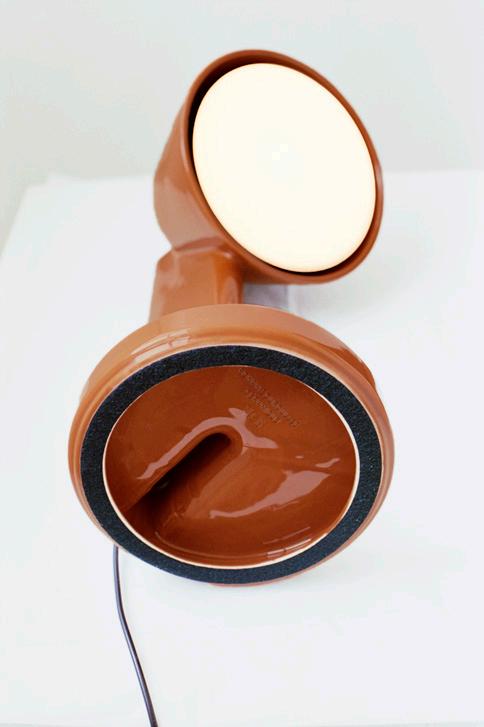
RONAN BOUROULLEC It was a very long process, I think I designed 50 lamps before I arrived at this one (laughs). The starting point is both technical and poetic. I wanted the final design to express a poetic language, but what I wanted to achieve simplicity, a lamp made of just one piece of ceramic. I went through several solutions, some that were intelligent technically or intelligent in terms of geometry but maybe not intelligent in terms of light. The starting point for the final design was the first shape I felt happy with: a vertical piece of ceramic that looked like a beautiful vase. And just looking at it, using it in my apartment, understanding what light it would produce, I thought it could be interesting for the light to have different directions. So as the design progressed, I realised that it would probably be more powerful as a collection. To find shapes and dimensions that could work in three different orientations was a long process, it was extremely complex, and Flos solved several technical aspects of the design. In a design culture of cutting metal and extruding plastic, ceramic is not something you can capture, it’s like a wild animal, it needs a lot of calm and a lot of time. Céramique is big and heavy, not easy to put in the kiln - the first try was a disaster. I thought, why did I design something so complex? But we solved it, and to me this is Italy, this marvellous quality of research and development of companies like Flos.
ROSA BERTOLI The lamp's design almost gives an illusion of a dynamic head and it has the three options but it is fixed. How does the function change with each model?
RONAN BOUROULLEC The function is clearly defined by each version of the design. When the cap is up towards the ceiling, it generates a general lighting for a space, when it’s on the side, it can illuminate a wall in an indirect way, and the down direction is more for a table top or for being in a bedroom.
ROSA BERTOLI It’s a very archetypal lamp, but unexpected because of its material.
I think what is also unexpected because is its size.
RONAN BOUROULLEC People who have seen it in pictures think it’s a small lamp but it’s very big, it’s like having a nice big vase on the shelf, and this is an important aspect. It’s not a gadget, it has a strong presence in a room.
49
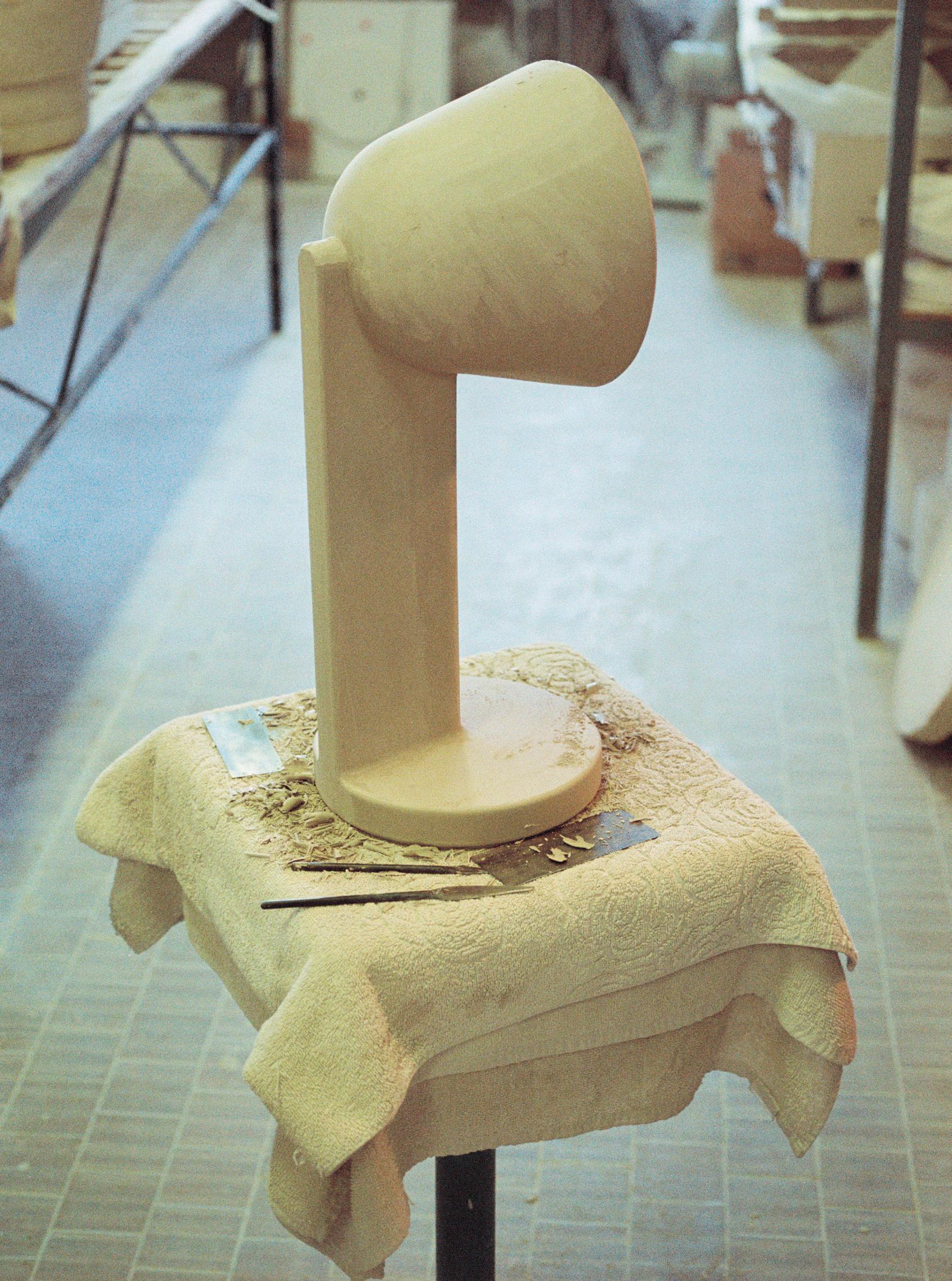

MAKING CÉRAMIQUE

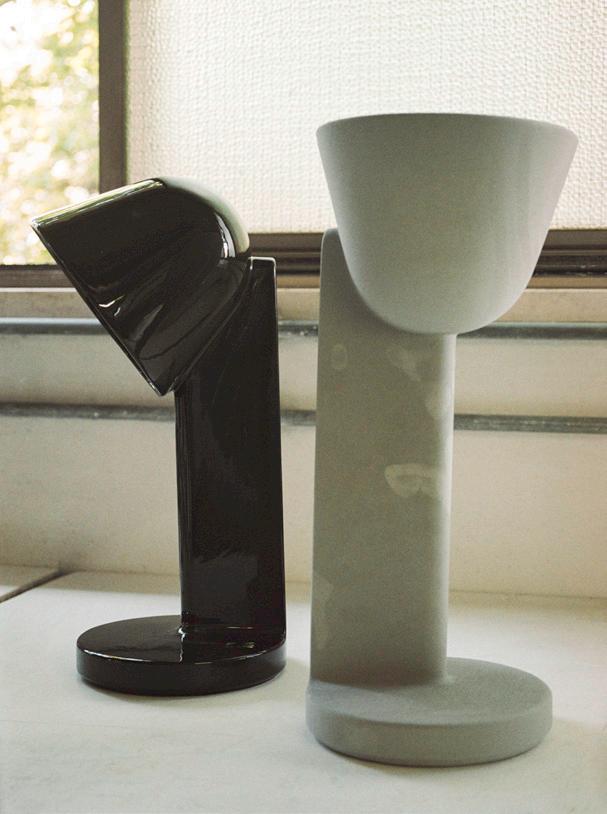
51
Text by Rosa Bertoli Photography by Anastasia Pavlova
Flos’ debut in ceramics, Ronan Bouroullec’s Ceramique is a trio of sculptural lights that merge the French designer’s sensible approach to volumes and silhouettes with the company’s push towards innovation.
Ceramics have been a key focus of the designer’s creative journey over the past few years, as his personal design explorations have ventured into the abstract. Using ceramic as a pictorial medium, the material has become the subject of a series of bas-reliefs and vases that are as much expressive compositions as they are functional vessels. ‘I love ceramics, flames licking the earth and enamel flowing over to envelop the form,’ he says. ‘Ceramics are about desire, sensuality. I think that my work is increasingly moving in this direction; producing objects that are functional, certainly, but looking for a kind of elegance, of pleasure.’

Testifying the novelty of its material from its name, Ceramique is an entirely handcrafted collection made of a leadfree crystalline lacquered finish. The collection’s colours, Moss Green, Navy Blue and Rust Red, enhance the smooth surfaces, reflecting the material’s richness.
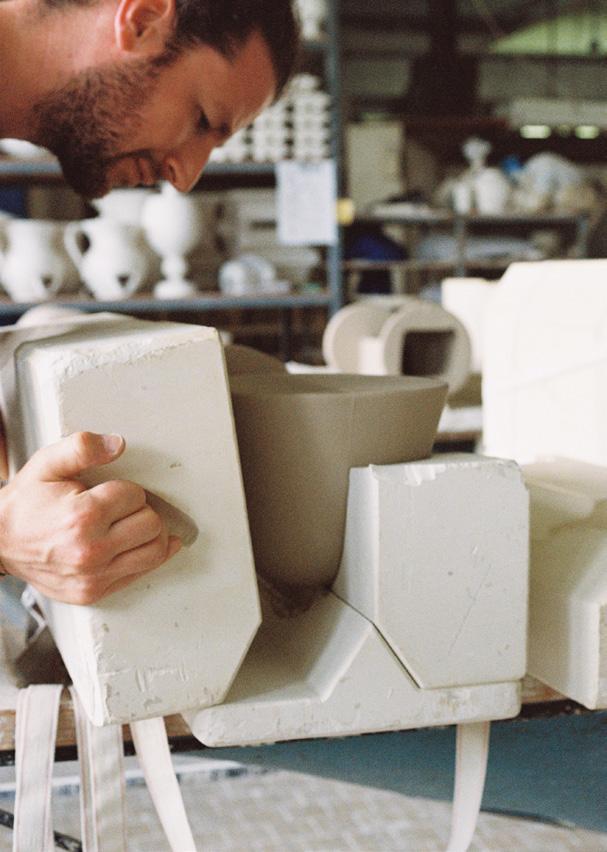


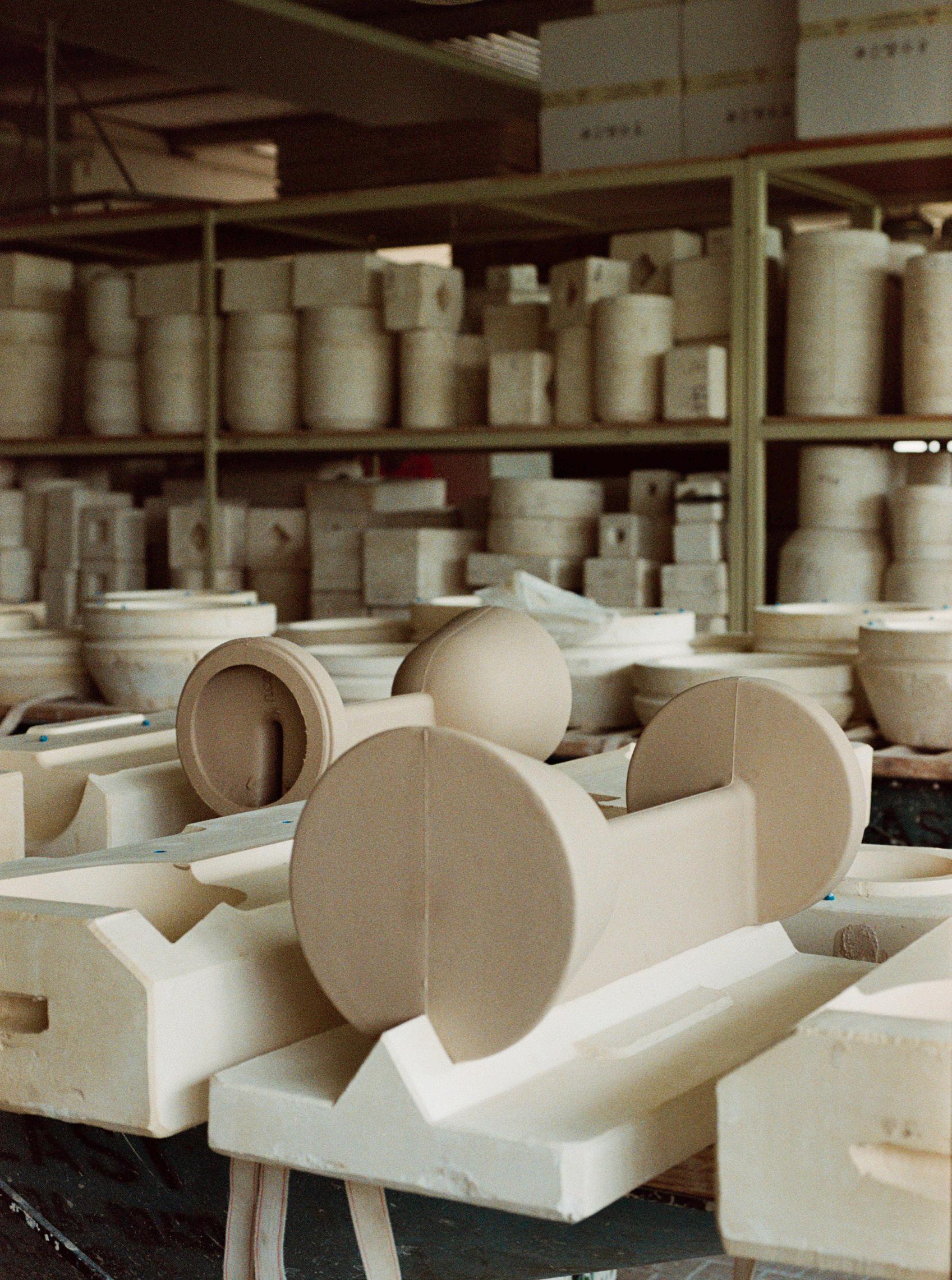

The design’s starting point is the essential composition of a lamp: base, stem and a cap, declined in three table lamps, bearing the same design with subtly different orientations, and each featuring a configuration gently suggesting a specific illumination. While a down version is an ideal reading and table lamp, the lamp featuring a side orientation is imagined to illuminate a corner, and the uplighter creates an ideal ambient lighting.
‘Flos is intimately linked with Italy’s extraordinary panorama of skills, unique in Europe. Italian ceramics had to be investigated, a first for the company,’ he continues. ‘I feel that this wealth of skills and rigorous craftsmanship constitute an expertise that must be kept alive and developed, and I am very happy to try to contribute to this.’

DESIGNED FOR SUSTAINABILITY
The lamp’s iconic ceramic body features a leadfree lacquered crystalline finish that complements its handcrafted surface.
TIMELESS DESIGN
The best way to be sustainable is by creating a product that will last forever, something you will want to share over the generations. Every element can be easily dismantled for any repairs or replacements.
Learn more at flos.com/en/sustainability
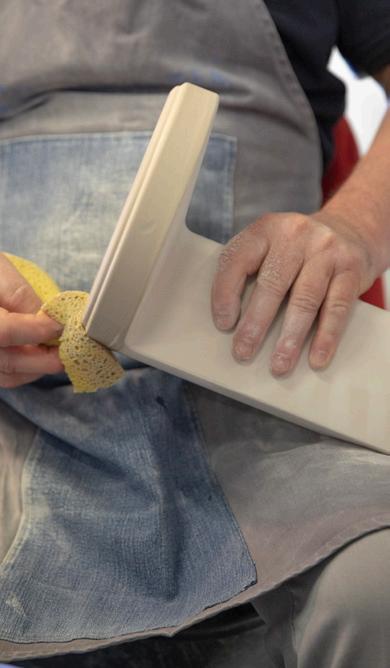
55
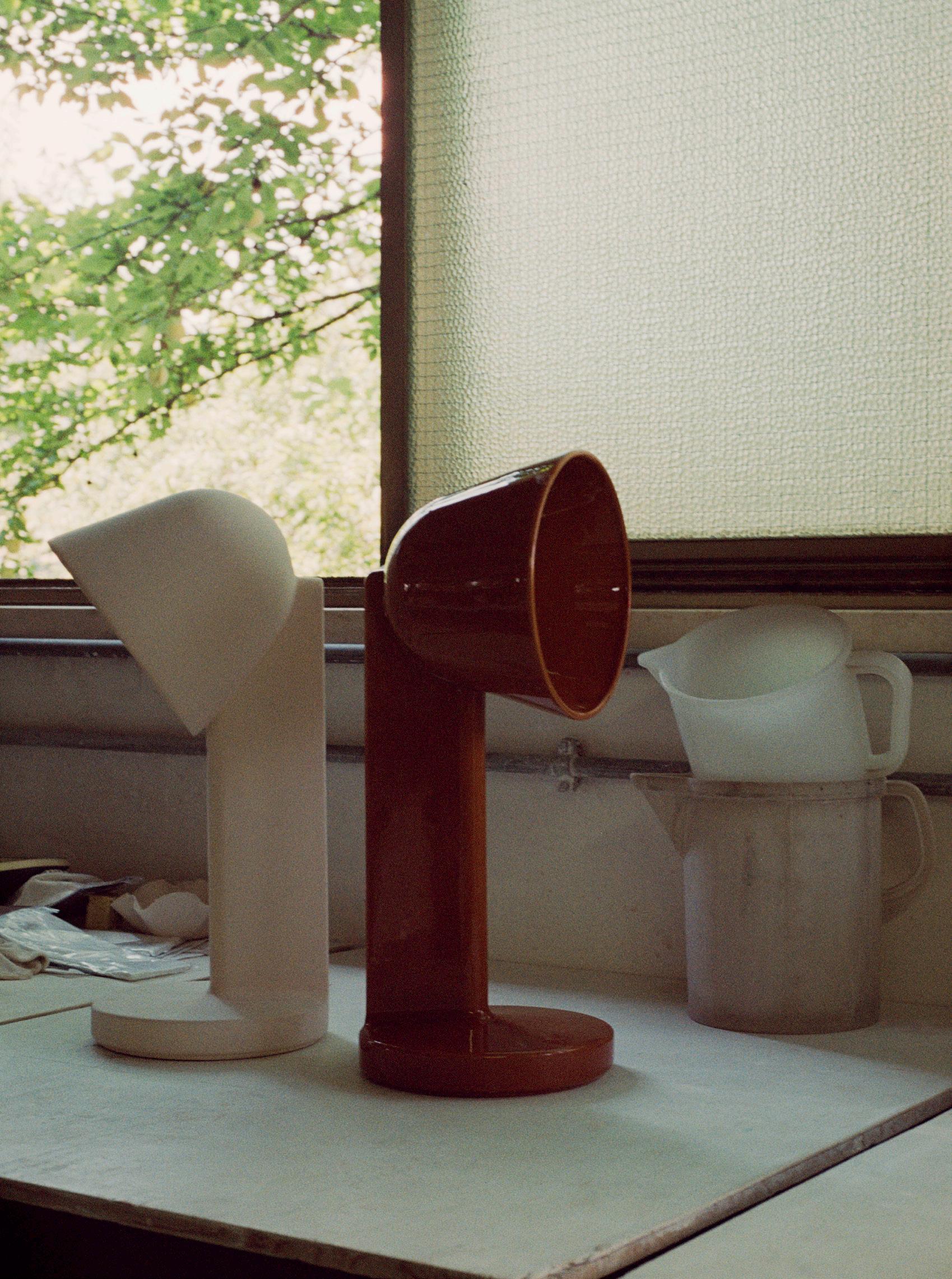


During Fuorisalone 2023, Theatre and Opera Director Fabio Cherstich was enlisted to animate Michael Anastassiades’ My Circuit at the Flos Project Space on Corso Monforte, working closely with the designer and Flos to bring the lighting to life through movement and sound. Here, Cherstich tells us about his experience conceiving the performance, whose combination of poetry and technical skill was captured by Mattia Greghi's photography.
My Circuit in Six Acts
59
Act I

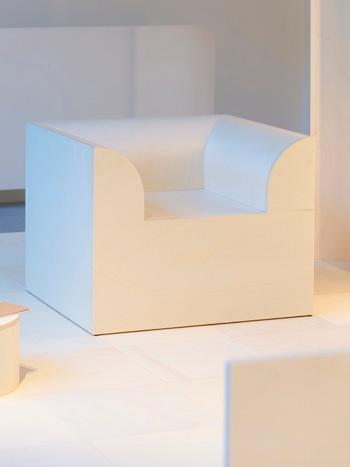
60
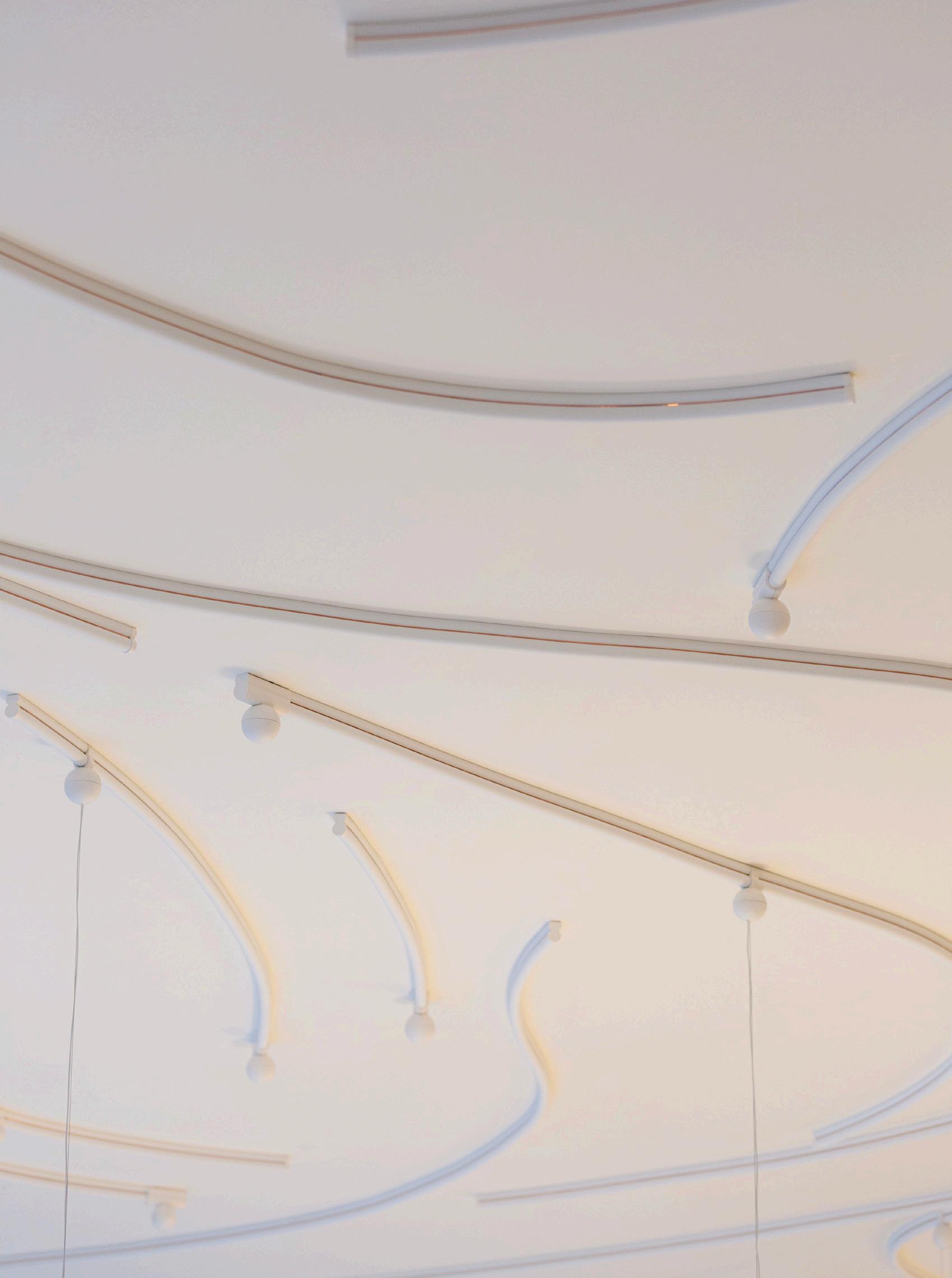
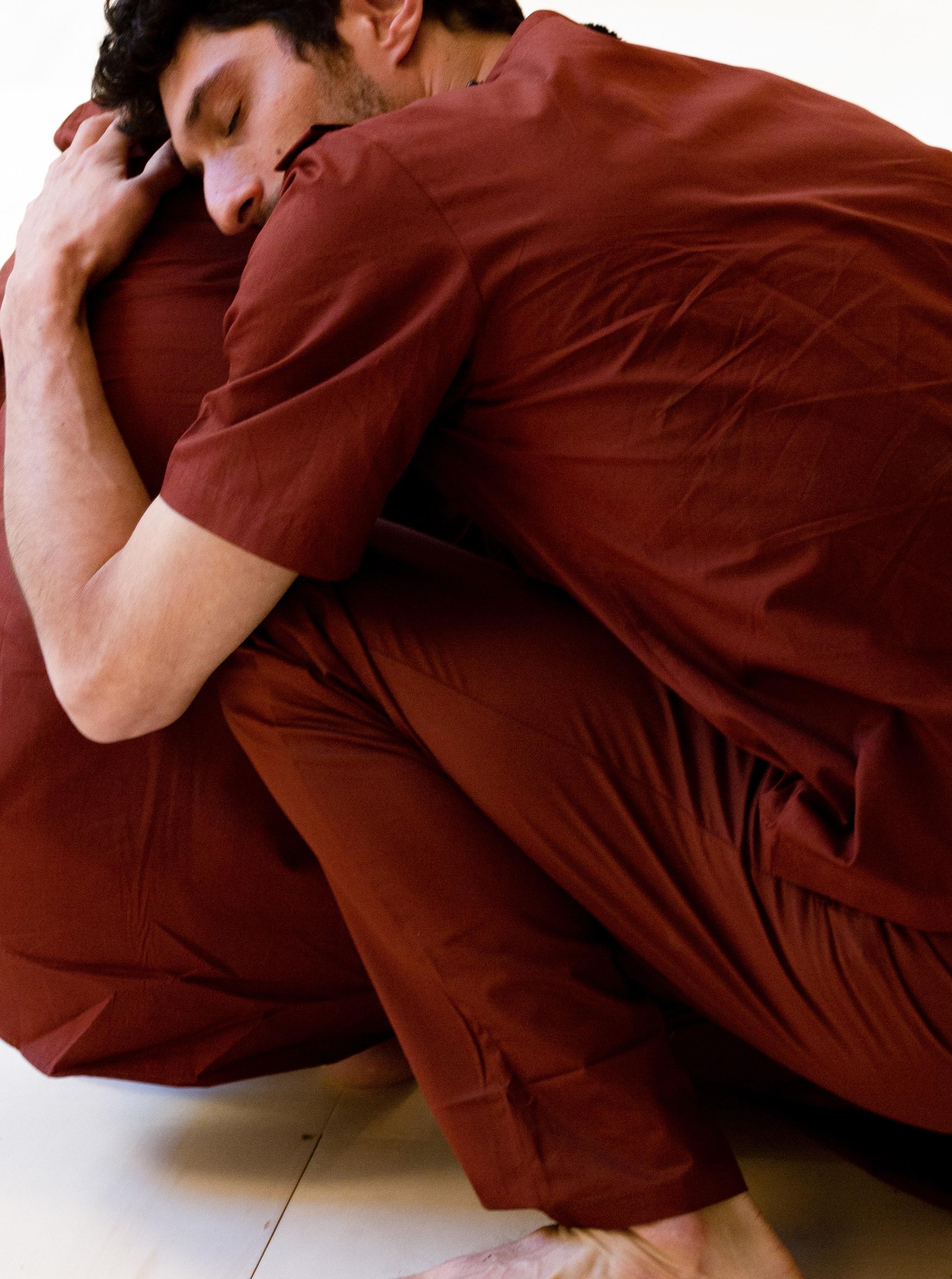
I still remember the enthusiasm of my first meeting with Michael Anastasiades to talk about the performative project linked to My Circuit and its activation during Fuorisalone in the Flos showroom space in Milan.
I knew Michael's work well but I had never worked with him, so it seemed logical for me to listen and try to understand the principles on which his new creation was based: simplicity, balance and flexibility are the words I wrote in my notebook. The product is very beautiful and versatile and the project of activating it with a theatrical performance was a great challenge.
Michael told me that the set-up would include six scenes with minimalist furnishings specially designed by him. These would be presented in the space with as many compositions of lights in variations that would completely transform the luminous showcase, and with it, the story of a domestic environment that is never realistic but rather only suggested by the layout, as Michael put it.
Each act showed a different domestic environment: a large table surrounded by chairs, a stylized version of a living area, a sleeping area, while one act showed only the lamps installed in the space, without furnishings. An armchair, a sofa, a stylized carpet, a screen. Cylindrical volumes at various heights serving as tables. Essential and refined objects defined by the taste that has always distinguished the work of Michael Anastasiades.
Act II
‘I don't want anything markedly theatrical: From the texts to the scenes, nothing should be melodramatic or excessive’, Michael said, a very clear indication of research on his part. I immediately thought it might be interesting to see how the six environments could be inhabited in a pure and essential form through the work of a group of performers that would inhabit the space. Few props and a sequence of concrete actions in which the different position of the furnishing elements and of the light in the space changes the dynamics of the performers and the sense of their actions.
First of all, I asked myself what the energy of the space should be, the type of atmosphere it should give back to the public and the emotional temperature of the performers. It was immediately clear to me that I had to work on a score of actions dictated by the passage of time, on sequences of gestures repeated in themes and variations, to compose a visual fresco that could transform before the eyes of the public over a prolonged period of time. An anti-everyday timeline, expanded and suspended to find a clear break between the installation and its surroundings, between the chaos of the streets of Milan crowded for the thousand events of the Fuorisalone and the rarefied, ritualistic energy that I wanted to restore with my performance inside the Flos showroom.
This resulted in the idea of using a metronome to mark the rhythm of the actions, a very simple tool that immediately

63
Act III

64
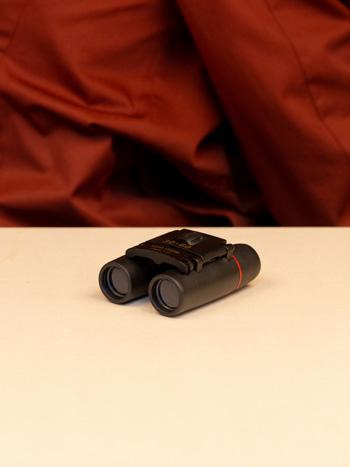
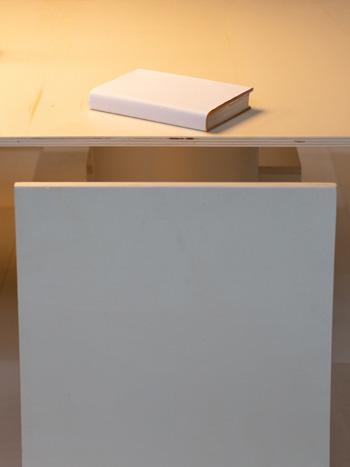
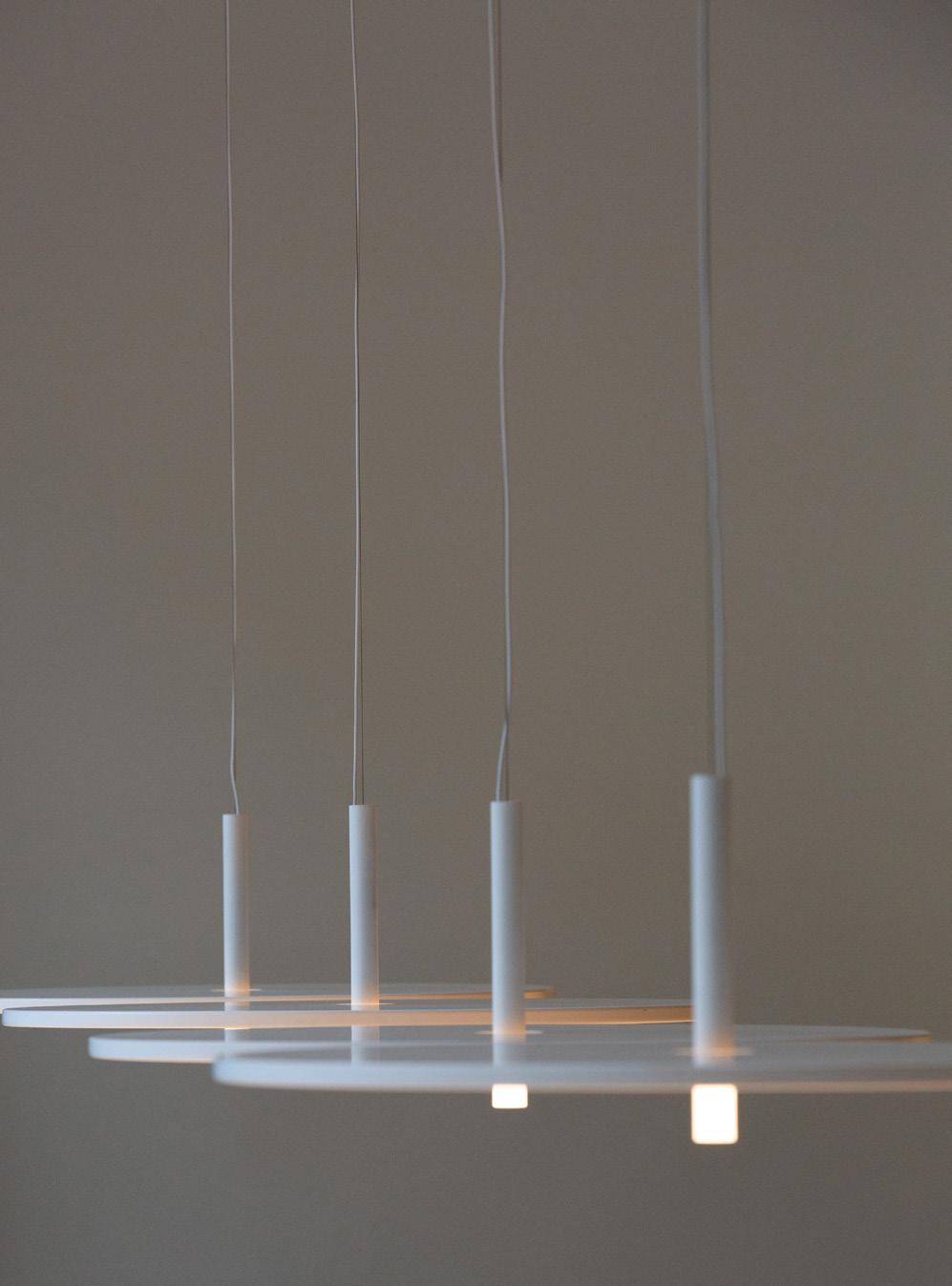
65
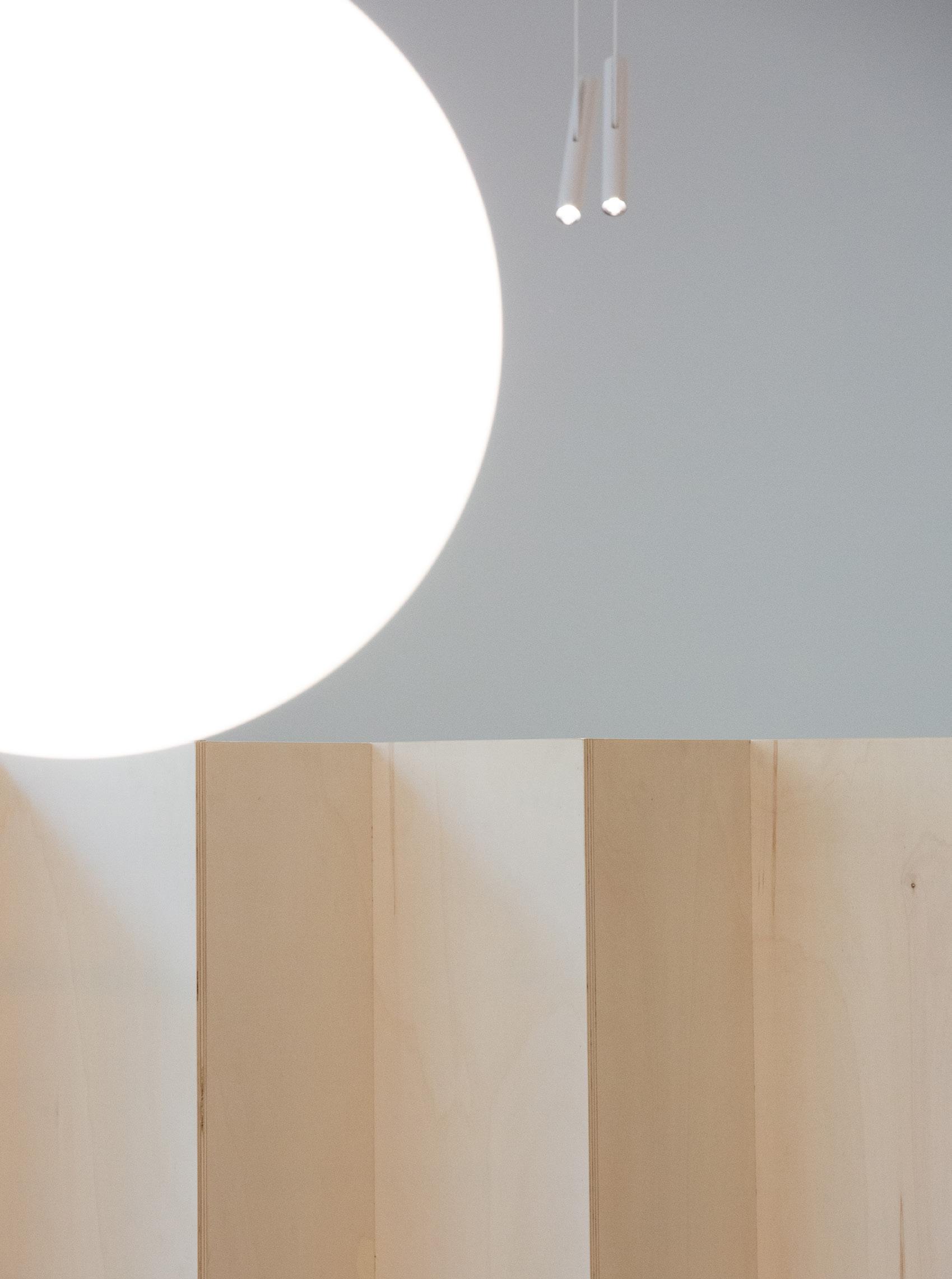
connected audience and performers by marking the ‘breath’ of the entire space. Its almost hypnotic swing and the dilated atmosphere of the actions put the audience in a state of listening and concentration that I was very interested in investigating.
In order to construct a material that was in some ways anti-theatrical or even anti-naturalistic, I decided that I would not have characters on stage but rather, real people in the space: the body, the energy, the scenic truth of the participants. Not actors but male and female dancers, performers who, from experiences, related to the world of visual art or oriental disciplines.
Another choice was that there should be no conflicts between the inhabitants of this space, no psychological tensions in their actions, or anything that could offer an ambiguous reading. This would exist as a utopian space, a single large human mechanism, perfect and harmonious.
A central element was the research on performative rules: action in its honest truth, the word expressed only through song, repetition as an alienating tool, energy always varied by an external element that enters the space, changing the dynamic between objects and people, between stage and audience.
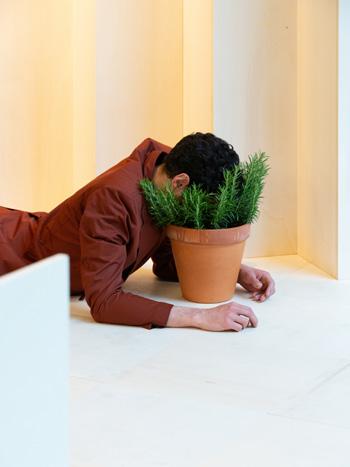

These choices were in line with the artistic references that I had shown to Michael after our first meeting and that had found our tastes merging: the visual theater of Robert Wilson, the performances of Tino Segal and Meredith Monk and certain works of pure action by Bruce Nauman. With these assumptions, I faced the casting together with Riccardo Olivier, a choreographer and my collaborator, who was present on stage for the entire performance with a role of master of ceremonies. Nine performers with diverse experiences and backgrounds alternated on the stage during the six days of the Salone, creating an autonomous community that lived and existed only for the duration of the action, three hours a day.
Act IV
Every day, the performers arrived in the space an hour before the start of the act and received a sequence of actions related to the objects available on that specific day. The instructions included: operate the metronome, change the rhythm of the metronome, play chess, drink milk, rest, lie down, measure time with an hourglass. Jump, relax, dance to a song played with headphones. Record a dream and listen to it again, look outside through the windows. Observe the audience with binoculars. Hug a partner, sleep, take polaroids for yourself and for the public. Breathe the plants, point to an imaginary constellation on the ceiling. Draw the My Circuit line in a notebook, or point to it with your finger. Draw the space. Describe the lights in a low voice as you look at them. Sing a song related to your childhood. These are just some of the actions in the score, ranging from the most elementary to the most poetic and extravagant.
67
Act V
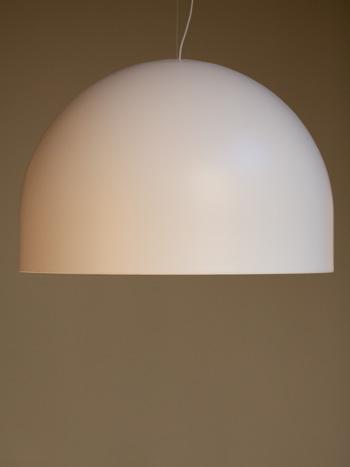

68
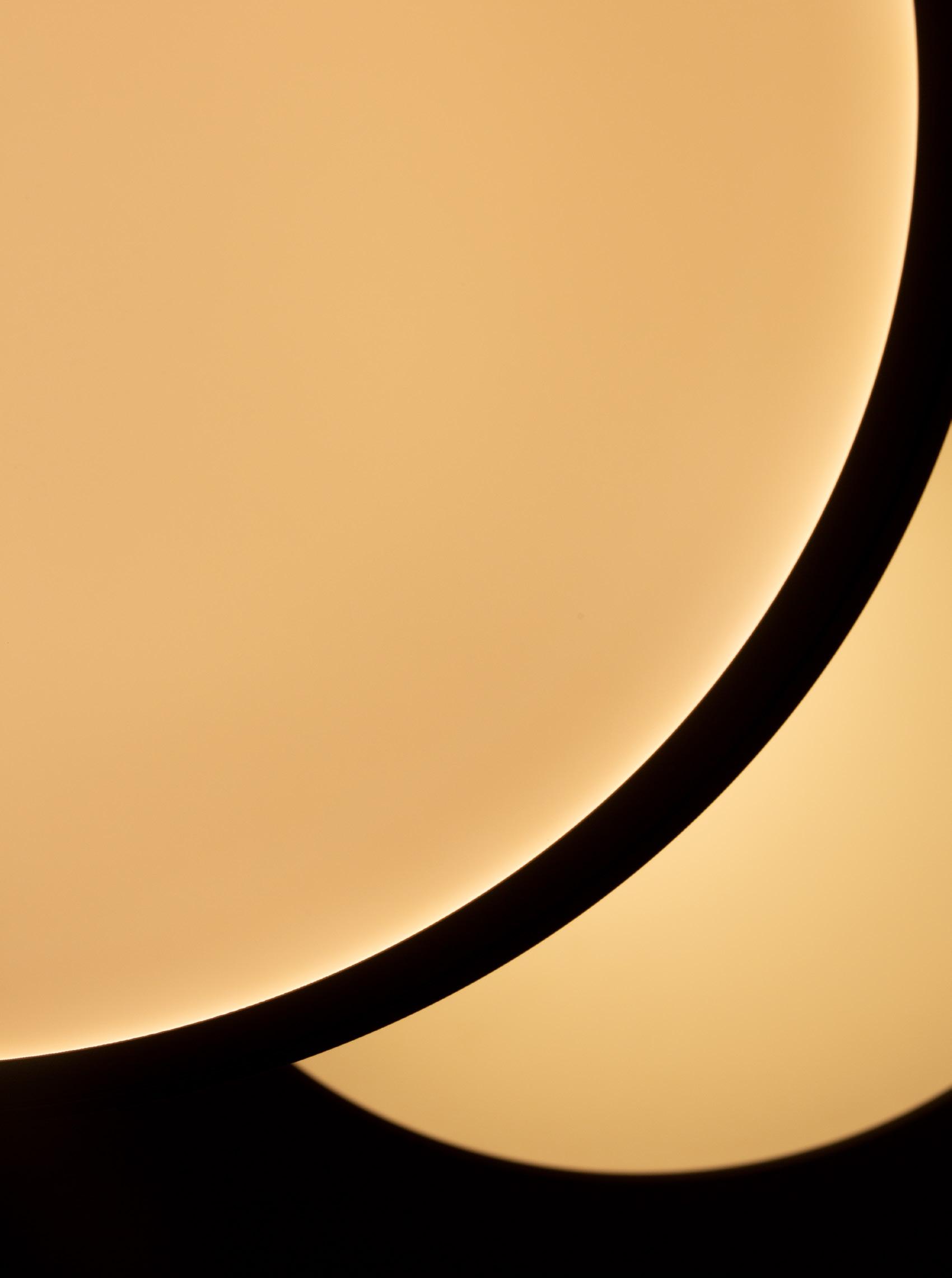
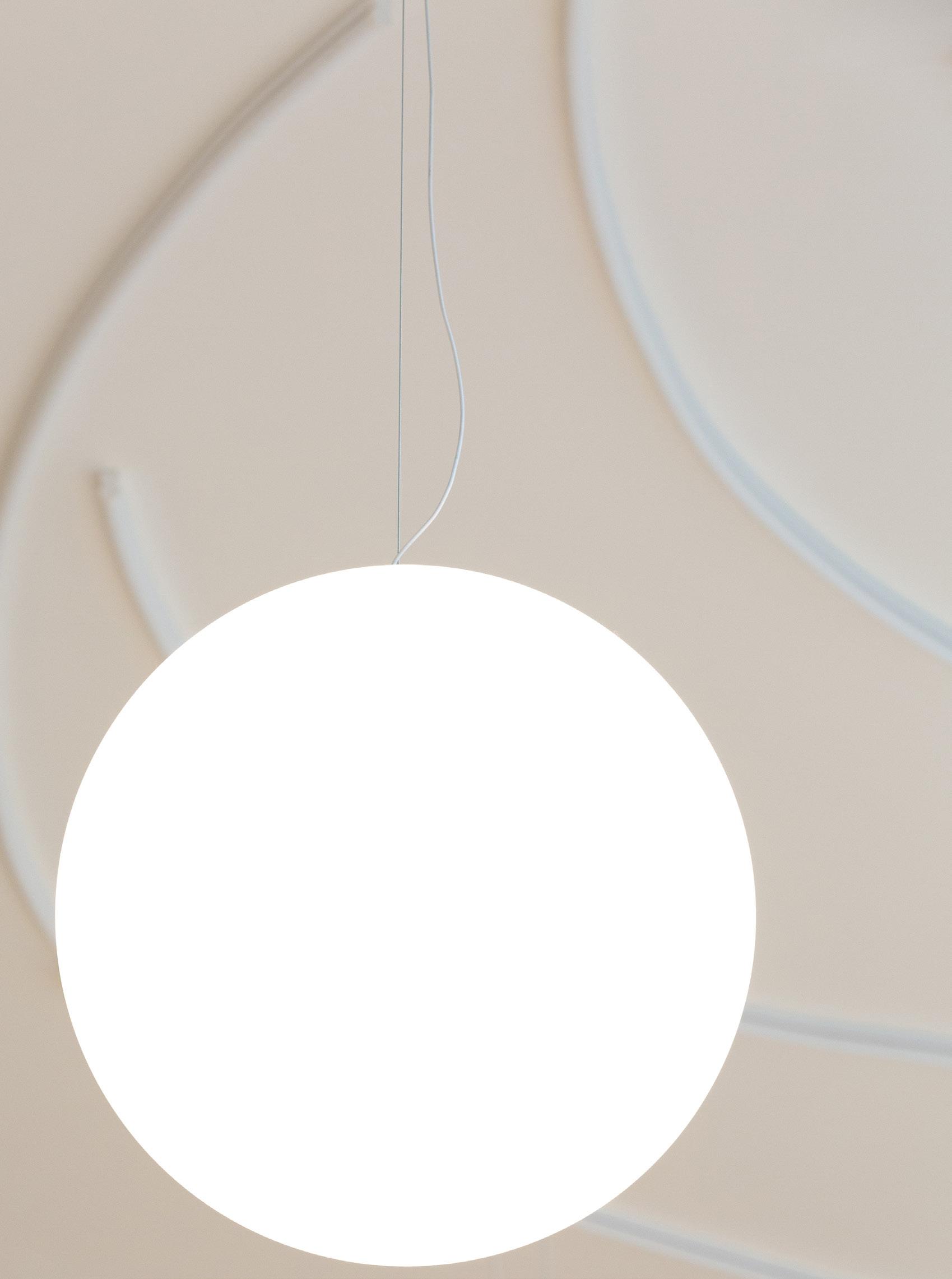
The result was a very long and organized improvisation that generated an internal photographic documentation: The polaroids were exhibited in the space at the end of each day, creating a narration of the various acts which could be consulted by the spectators, acting as a memory of previous days and layouts.
My happiness in seeing the audience's reaction of surprise and concentration to the magic that had been created in our ritual was so impactful that for the first time in my career as a director, I decided to get involved as a performer too –but for just one day and for about an hour, before shyness and routine replaced my enthusiasm. I too wanted to live the experience of inhabiting those spaces and those splendid luminous objects from within.
In our Six Acts, thousands of people witnessed a poetic and collective domestic ritual, essential but full of nuances and surprises, offering an idea of acting and inhabiting a space different from our routine, conveying that magic that the language of live performance still has over other languages.

‘In the hypothesis of maximum computerization of society and maximum standardization of men's living conditions, we will go to the theater because there are still human beings there who simply and truly sweat, cry, cut themselves, fall, despair and are happy. We will go to see this event as something that cannot be manipulated, that cannot be two-dimensional.’ With these prophetic words –written in 1992 by Antonio Neiwiller– in mind, I composed the performance of Six Acts for Michael Anastasiades. This fortunate experience will remain in my memory as a unique (but hopefully repeatable) example of teamwork in a state of grace, where designers, company, project management (led by Barbara Corti, an extraordinary travel companion), and performers create a project capable of making one lose the boundaries of languages, giving the public a new way of discovering the formal and conceptual beauty of My Circuit. I will be forever grateful to Michael Anastasiades for the trust he immediately had in me and for the road traveled together in this creation, which I hope will be repeated as soon as possible in new common challenges, in new research and experimentation in the name of the great Flos tradition.
Act VI

71

EVERYDAY BILBOQUET
series of eclectic and colourful vignettes.
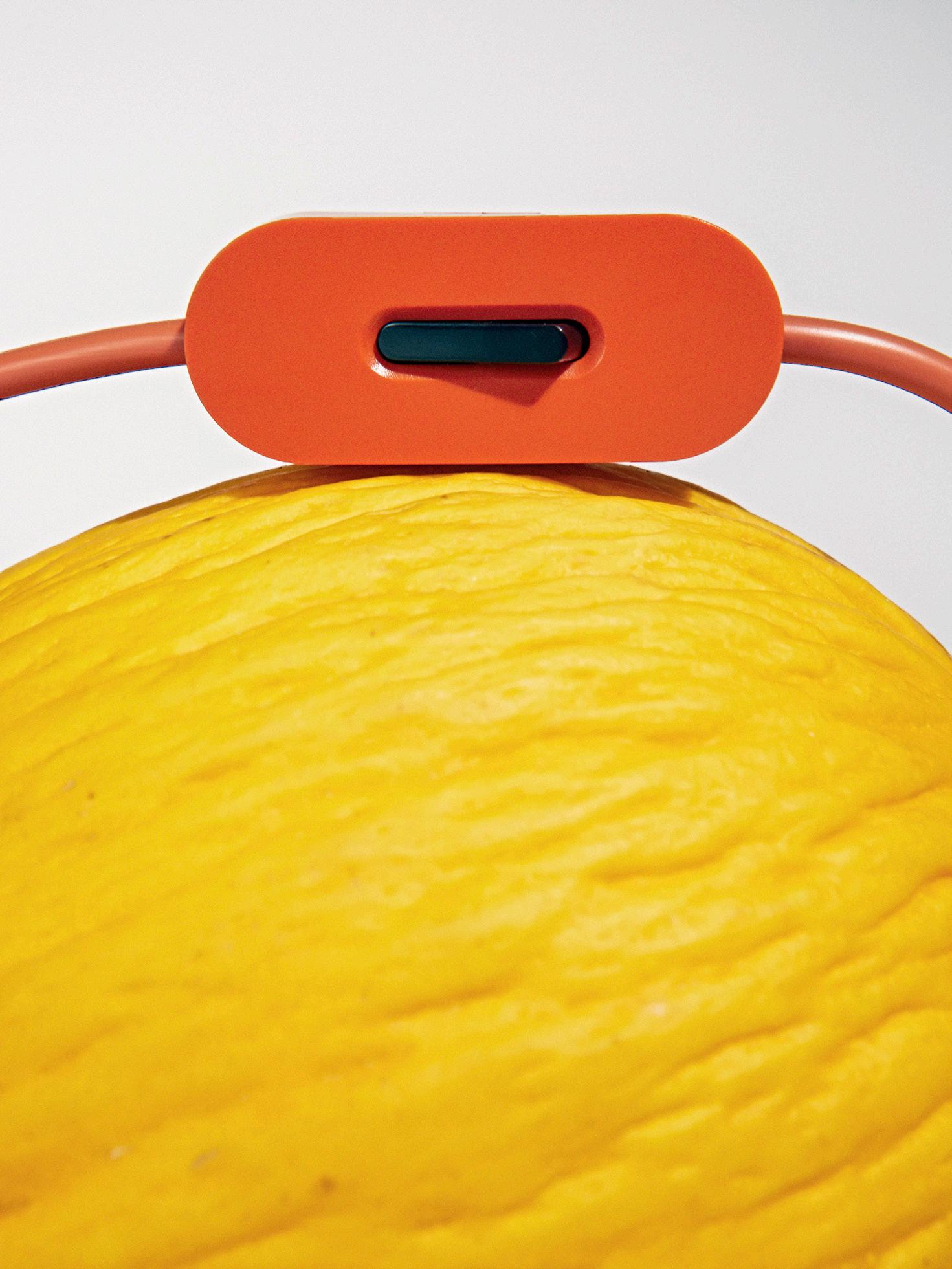 Photographer Leonardo Scotti and set designer Alessandro Mensi explore the playful possibilities of Bilboquet by Philippe Malouin with a
Photographer Leonardo Scotti and set designer Alessandro Mensi explore the playful possibilities of Bilboquet by Philippe Malouin with a
73
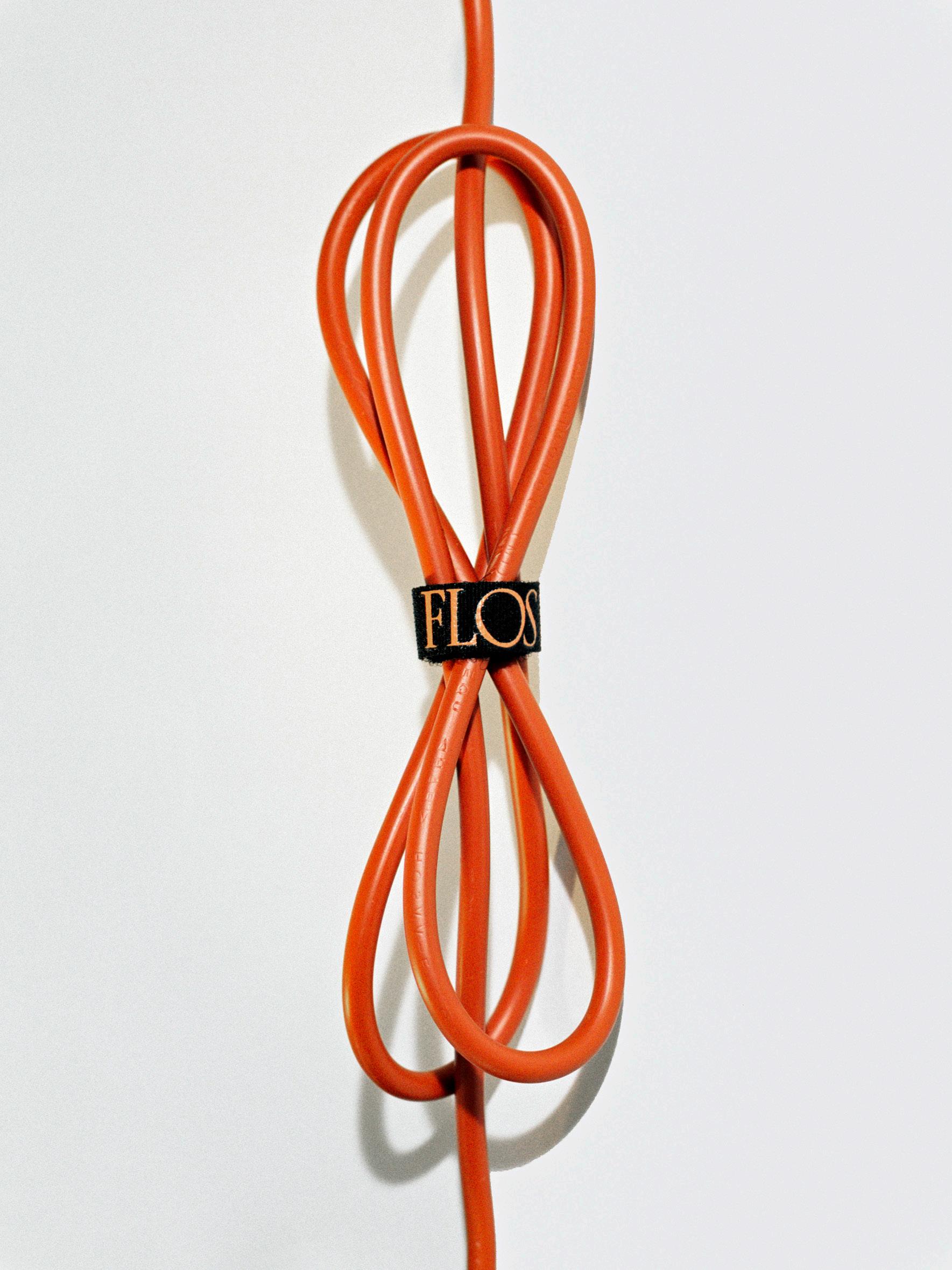
74

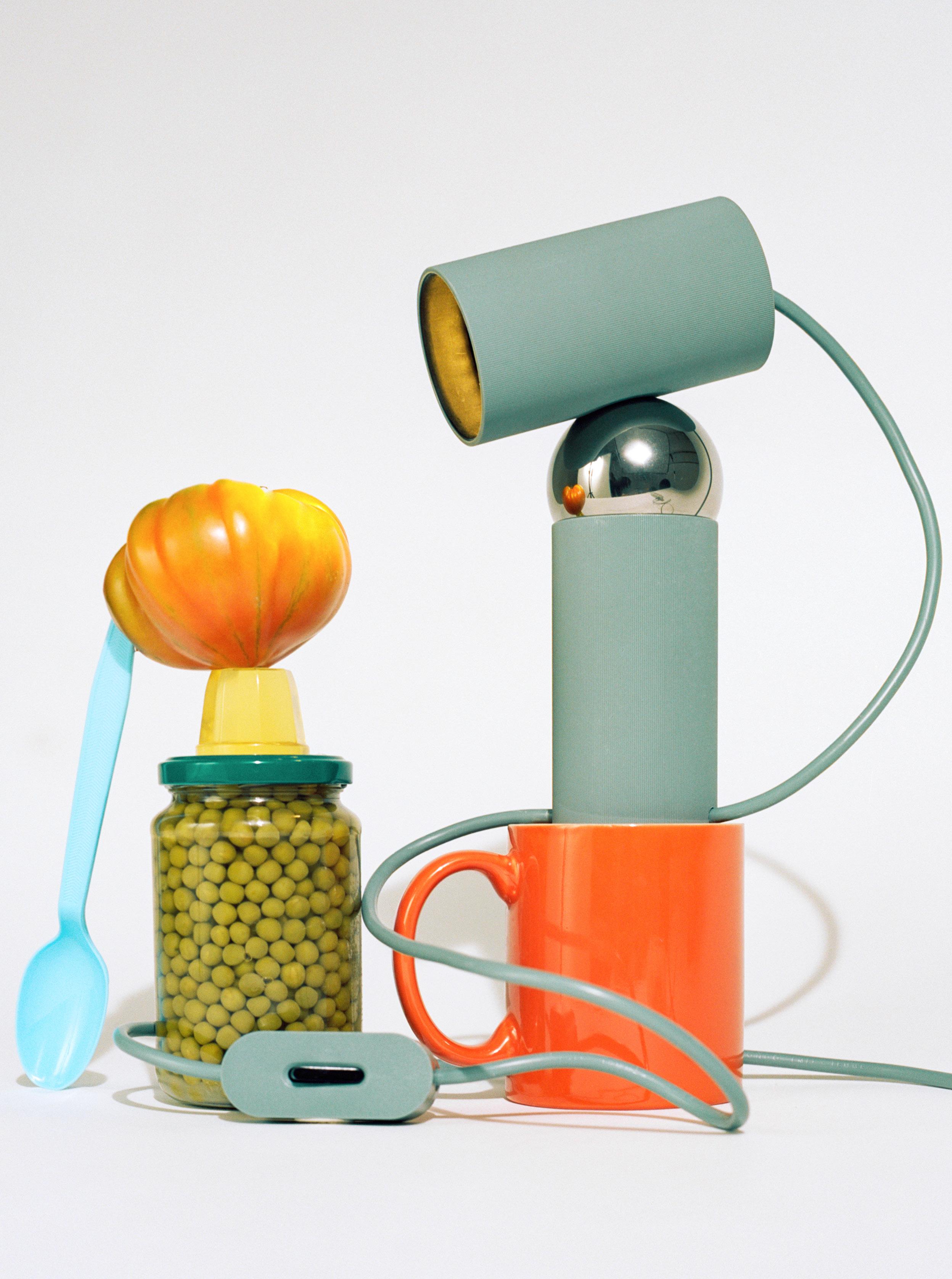
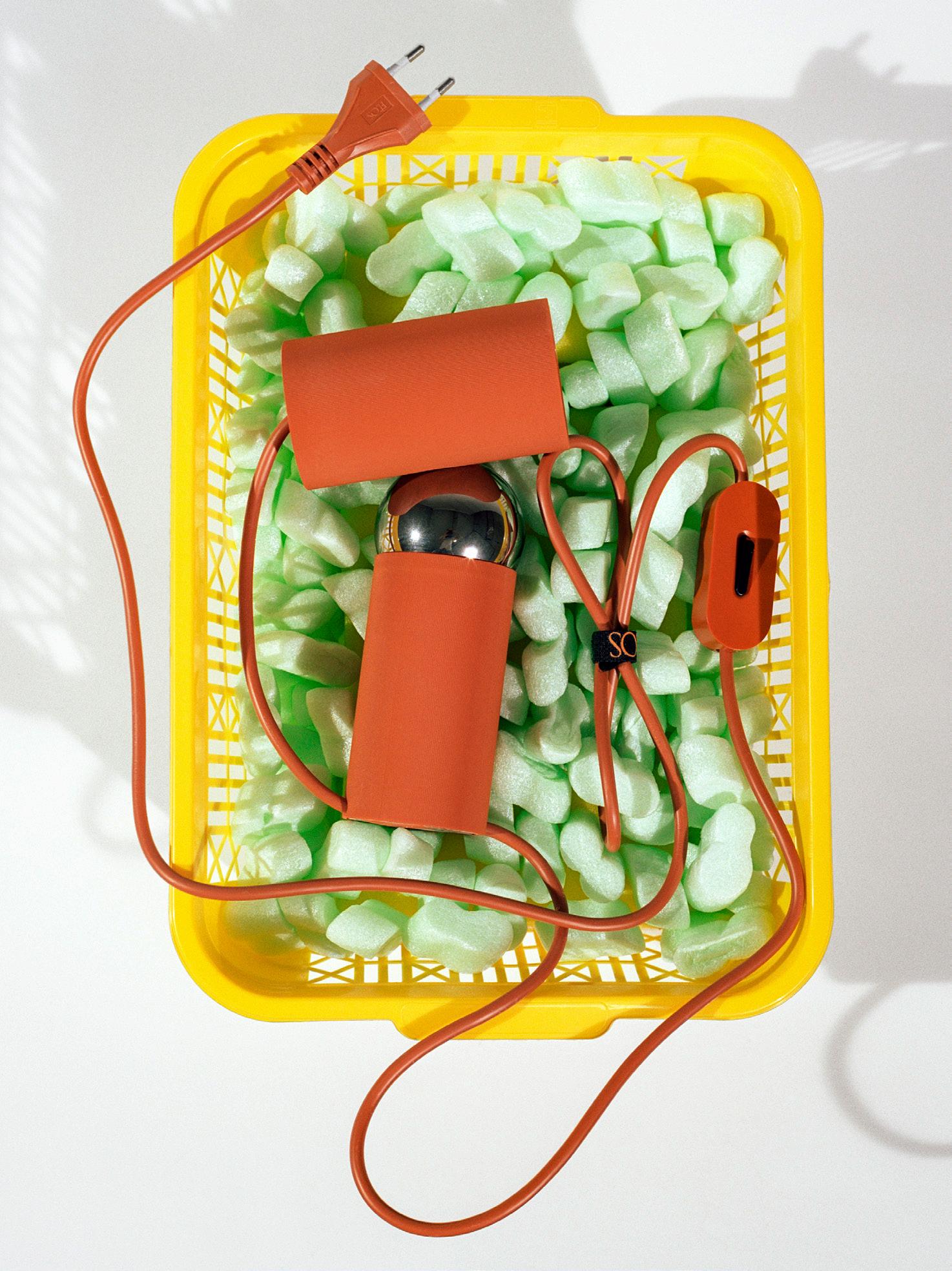
77
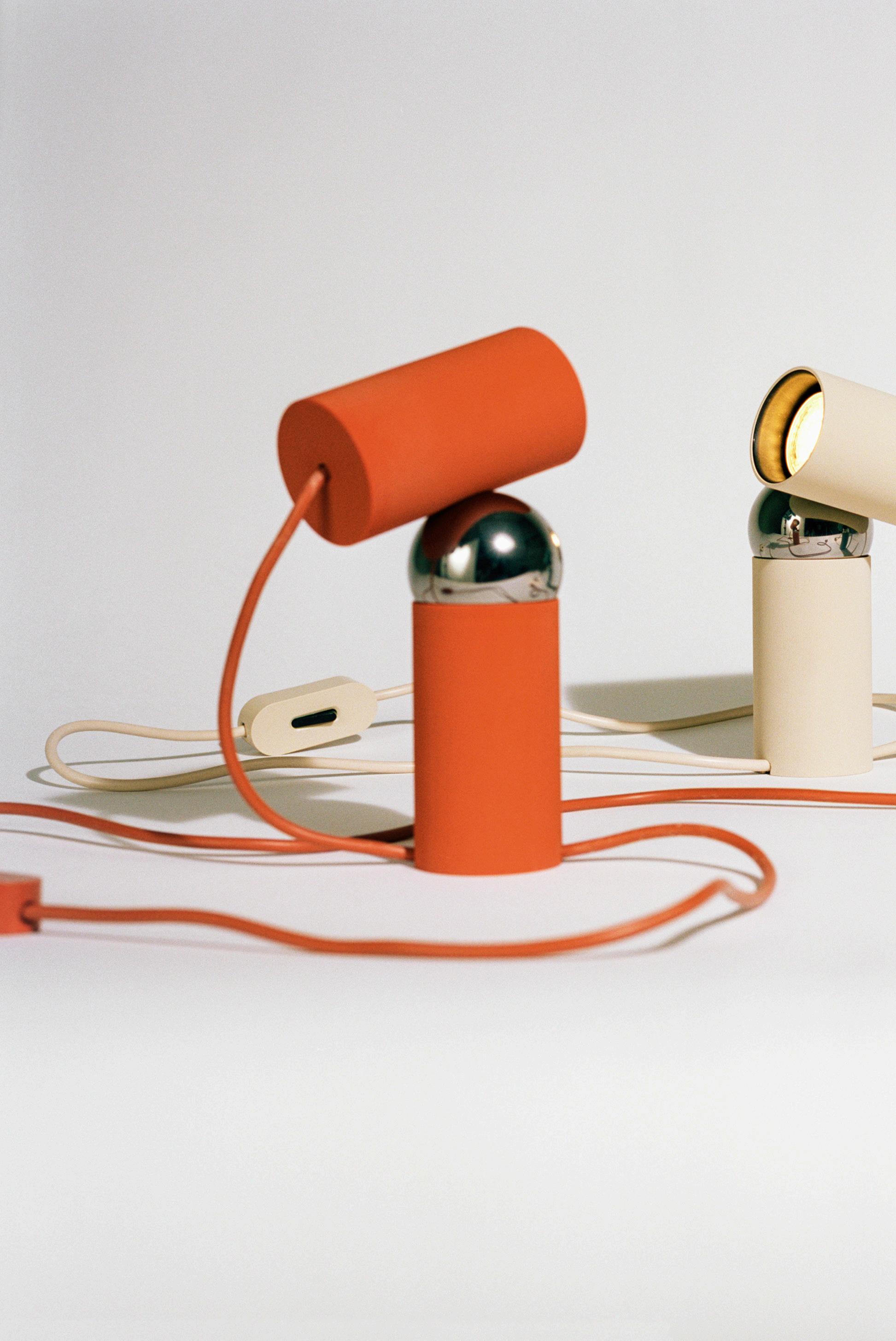
78
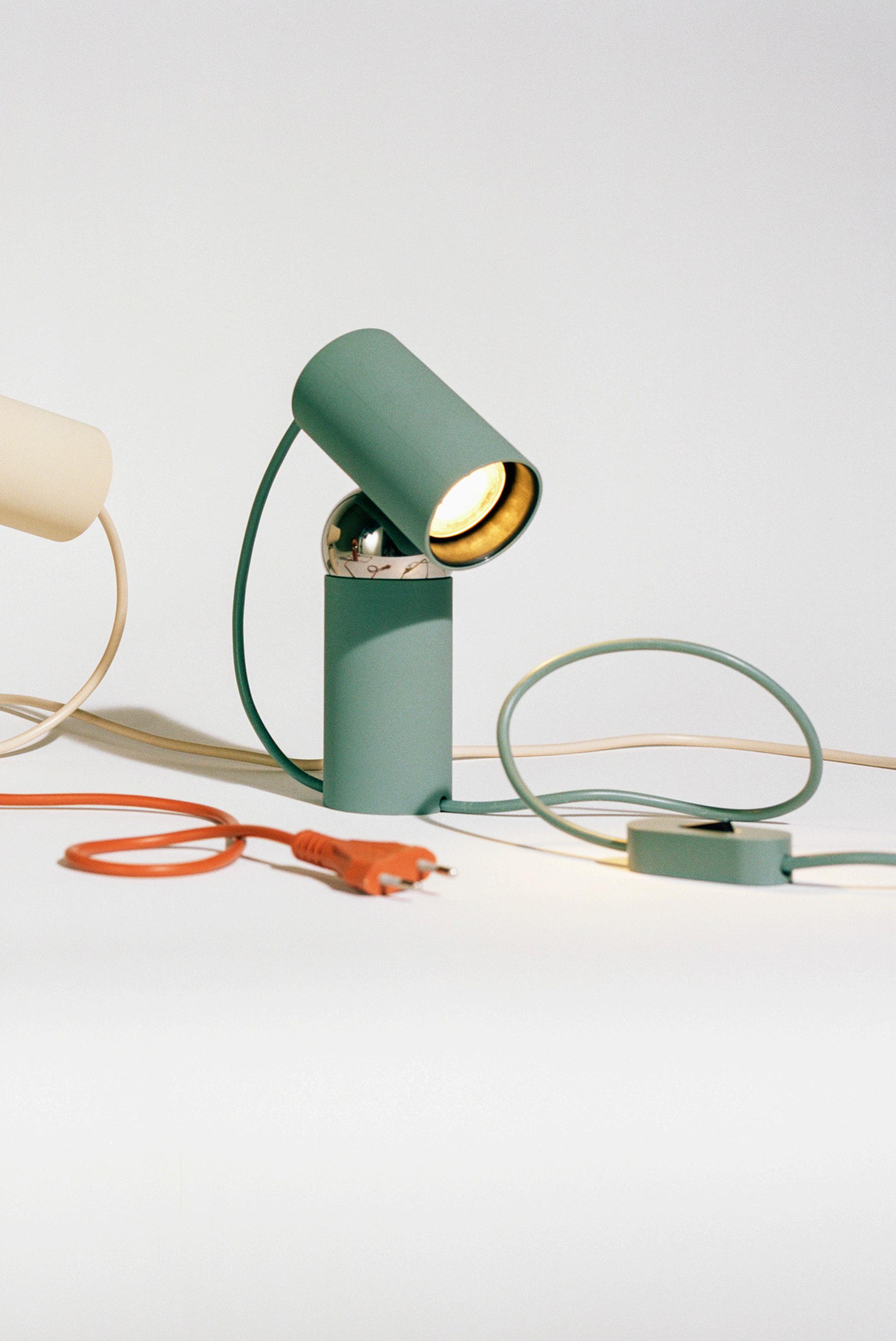
79
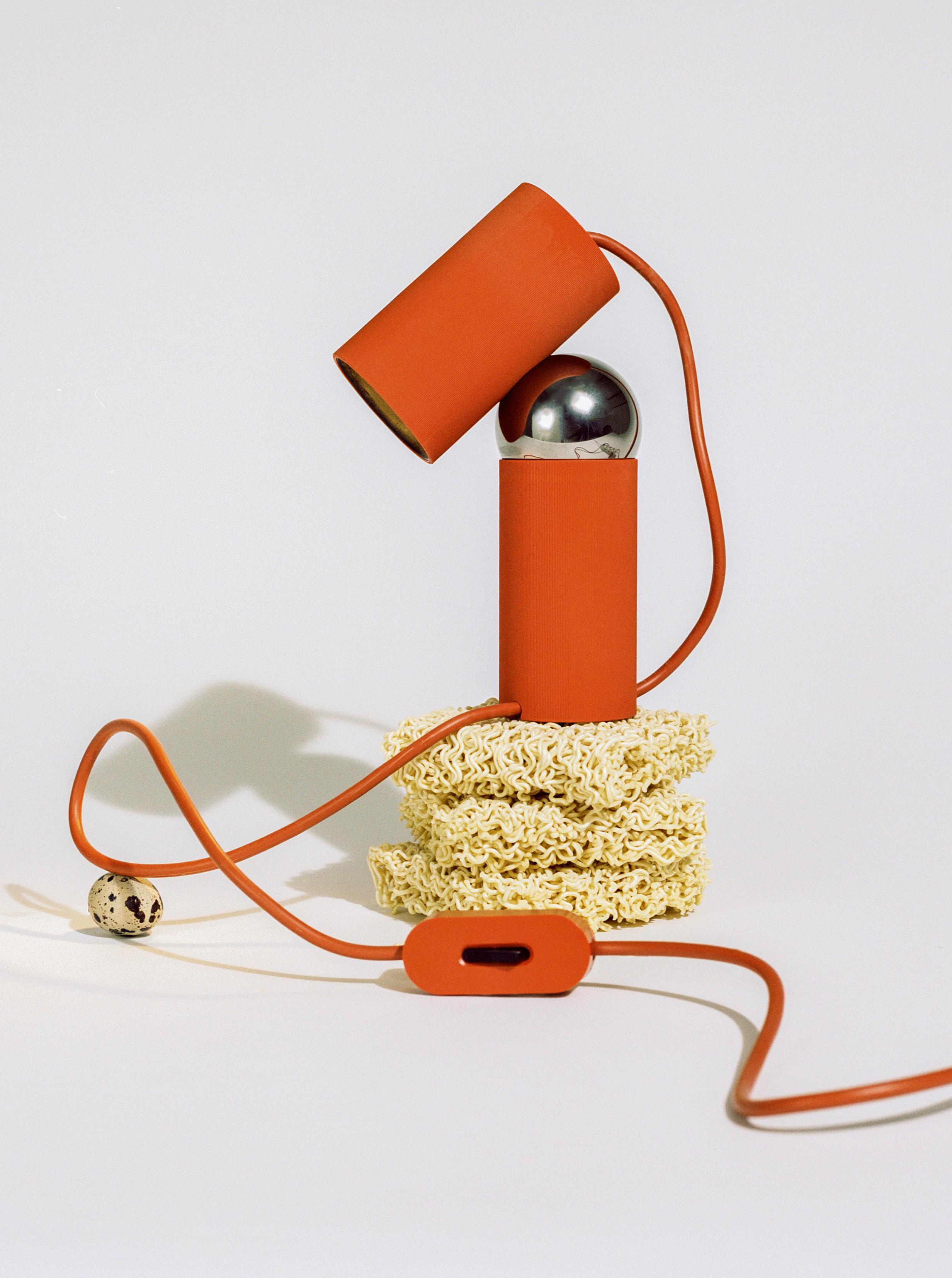
SUSTAINABLE DESIGN
Head and body are made of sustainable polycarbonate derived from a by-product of paper production rather than petroleum.

FUTURE PROOF
The lamp has been designed to be future proof. All parts can be easily replaced in case of need for a long-lasting life.
Learn more at flos.com/en/sustainability
81

TACCIA MATTE WHITE
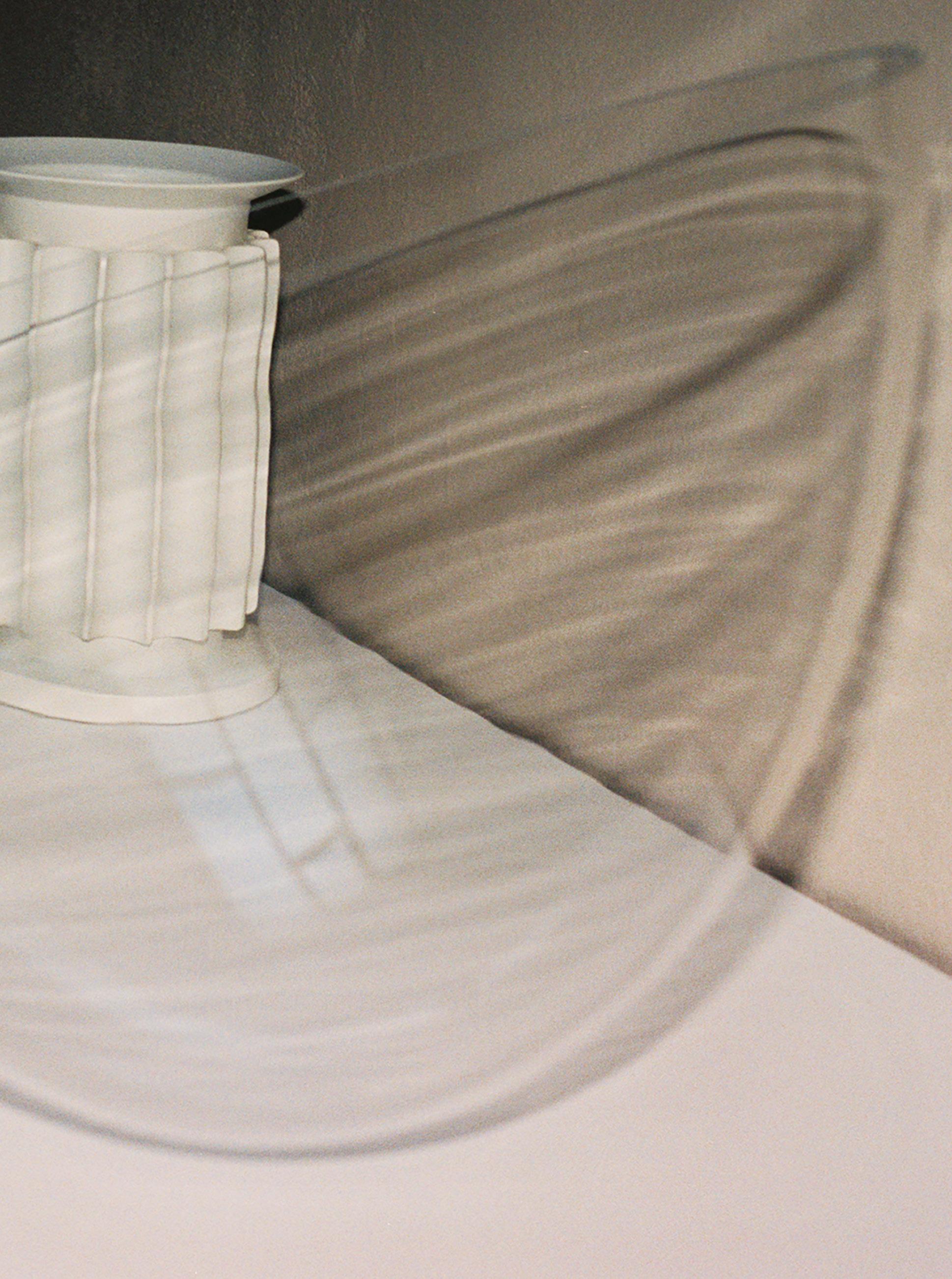
We revisit Achille & Pier
Giacomo Castiglioni’s design as it returns in an matte white version.
83
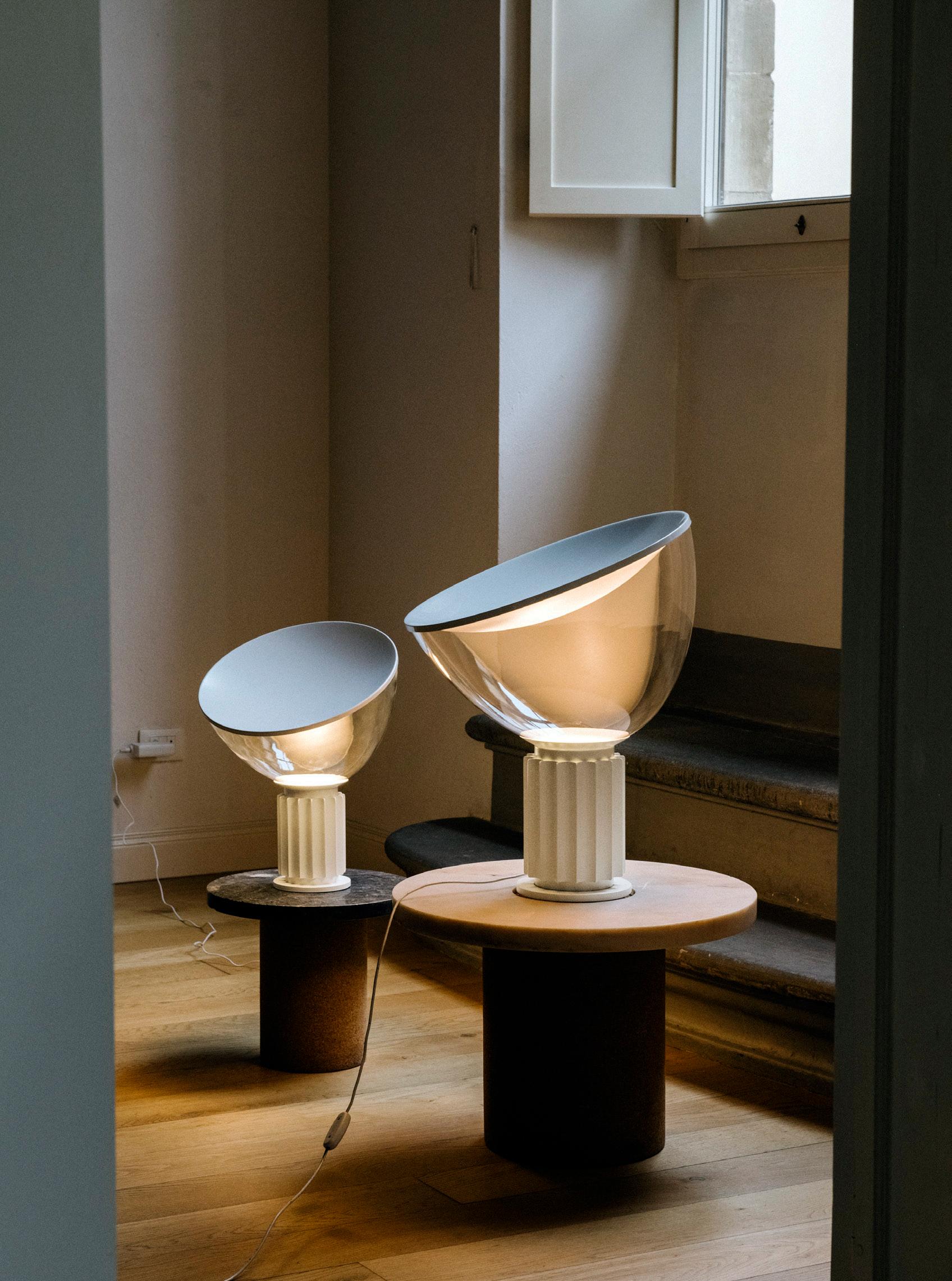
NAME Taccia
DESIGNER
Achille & Pier Giacomo Castiglioni
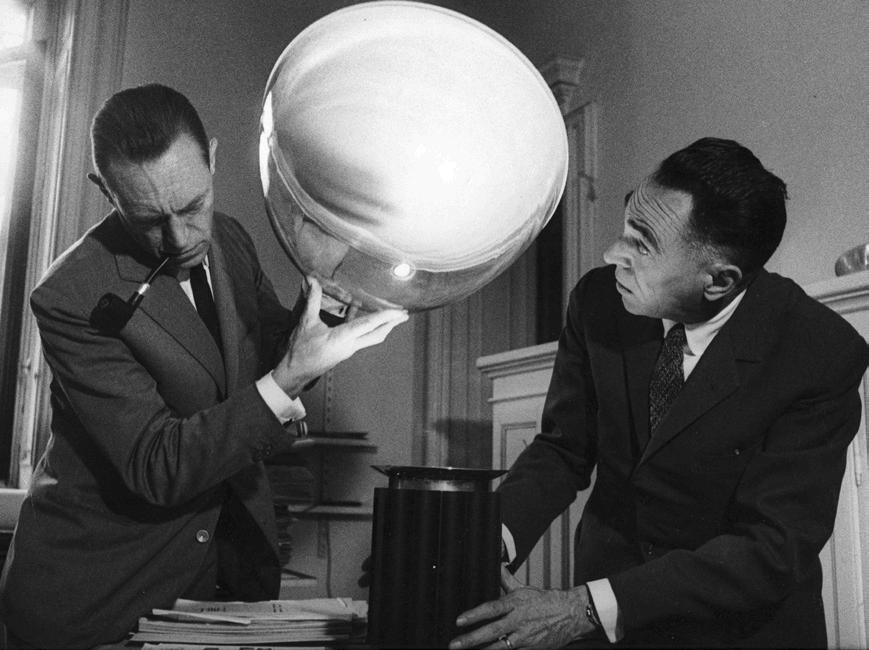
YEAR
1962
FEATURES
A table lamp providing indirect and reflected light, Taccia features a directionable diffuser in transparent mouthblown glass holding a reflector in painted aluminium, gloss white on the outside and matt white on the inside. The glass diffuser stands on a column-like object concealing the lightbulb, traditionally in black, bronze or anodized aluminium. Today, Taccia is equipped with a bright LED, making the light dimmable.
HISTORY
Taccia was originally conceived by Achille and Pier Giacomo Castiglioni in 1958, and a year later the first prototype was presented at The Illinois Institute of Design in Chicago, during a conference on Italian design. Over the following three years, the designers worked on several experimental models to reach the final design and manufacturing solution, initially working with plastic to create the directionable diffuser and later changing course to work with glass. In March 1962, Flos committed to producing the project,
85
Photography Ugo Mulas © Eredi Ugo Mulas. All rights reserved
which was presented to Marcel Breuer in its final version in June of the same year. In November, Flos presented the lamp as part of the company’s inaugural production series.
CURIOSITY
The glass component of each lamp is mouth blown and hand finished, using a combination of traditional and hitech methods. First, the sand goes into a refractory brick oven, becoming an incandescent magma at 1000/1600 degrees Celsius. Using 2.5 metre long stainless steel pipe, expert glass blowers blow this magma into an underground mould, the very same that was used in the '60s. Detached using water from the pipe, the bowl is then deposited into a ‘Muffola’ oven for 24 hours, slowly reaching ambient temperature. This bowl is then sent to be manually cut, obtaining the final shape for the lamp.
WHAT’S NEW
Taccia white is the latest interpretation of this contemporary classic: The monochromatic, matte version of the lamp enhances its silhouette and honours the pure expression of its functionality.
TACCIA ACCORDING TO ACHILLE CASTIGLIONI
‘The story of this lamp is rather interesting, because someone mistakes it for a postmodern object: This is funny because it's from 1962, and my brother
86
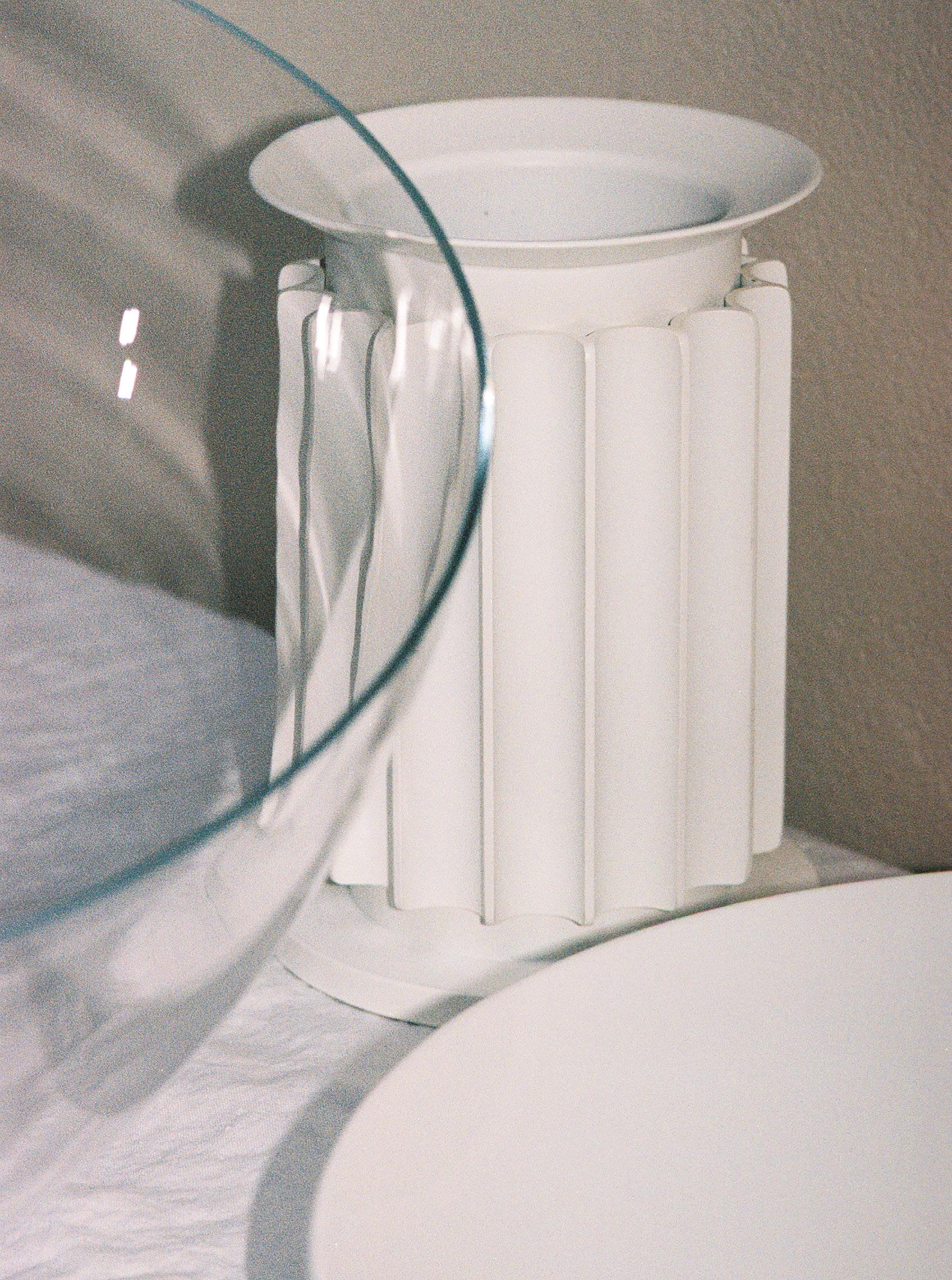
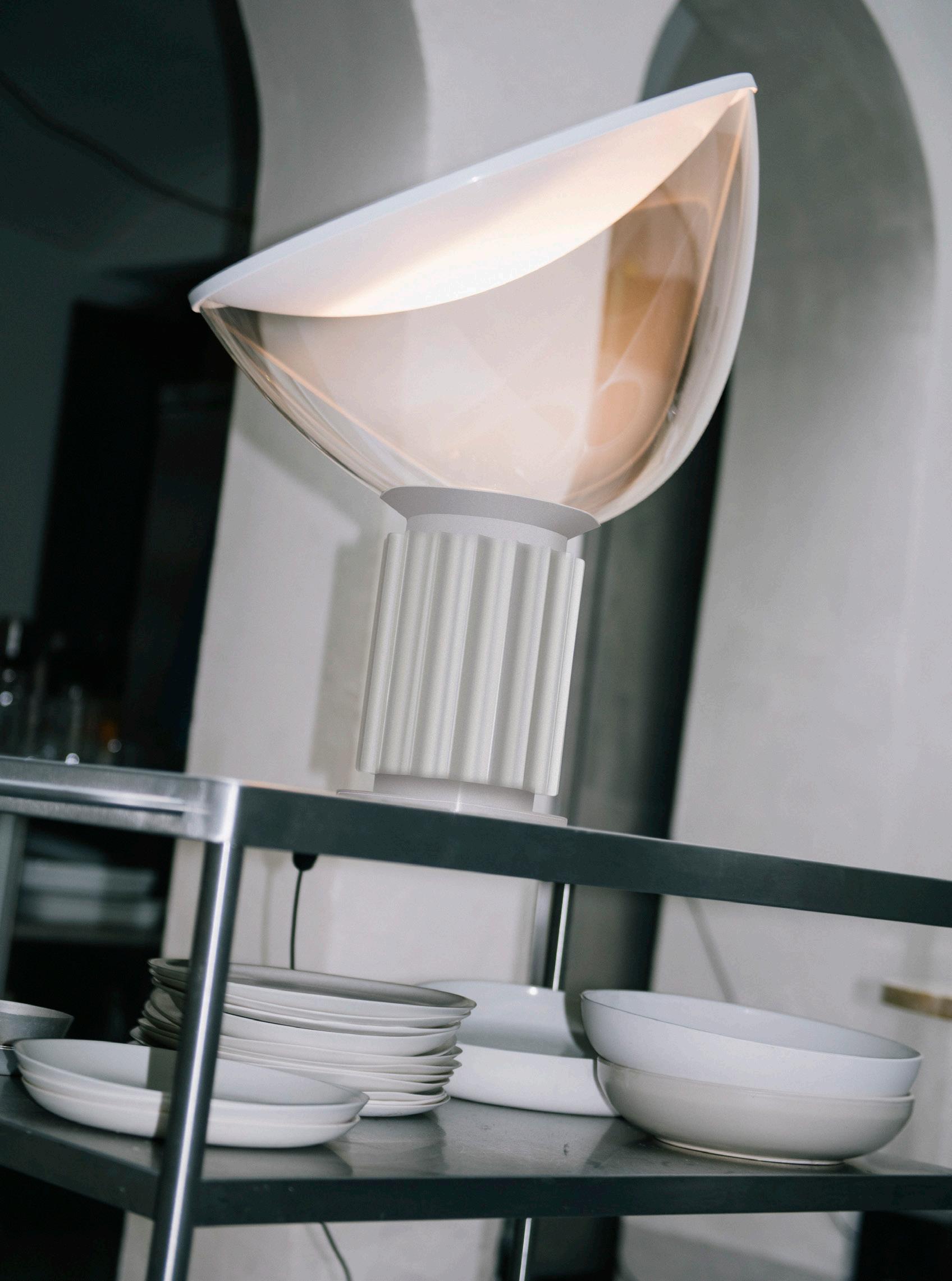
and I had no intention of creating a postmodern lamp’.
‘I have to admit that this lamp has been conceived in the wrong way: A transparent plastic material was initially used to make this bowl. So when we tested the object we had a nice surprise: Heating up, the plastic went fiuuuu, becoming flat. Our first project was completely wrong –so we made it in glass’.
‘That column-shaped base is like a shirt that helps cool that sort of glass cooker: At the base of the object, there is a heat so intense that increasing the surface volume means cooling it down more efficiently. It’s like the fins of a motor’.

89
Words by ROSA BERTOLI Photography by Flos archive (p. 83, 84, 87) and ADRIANNA GLAVIANO (p. 80-81, 82, 85, 86)
GAMES
SOME LIGHT ENTERTAINMENT
by Sany
What’s the best way to help team B winning the game:
4. Change to another Céramique model
3. Turning the basketball court 90º /

2. Foul play /
1. Hard practice /
by Ronan Bouroullec
Illustrations
90
Céramique
How many full Bilboquet can Florian and Flavia construct with these components?
 Bilboquet
Bilboquet
91
by Philippe Malouin
Guglielmo Poletti
Guglielmo Poletti’s essential design language is the result of a precise study of outlines, tension and intersecting surfaces, combined into cleverly minimal compositions that suggest a function while being aesthetically essential.
‘I'm not interested in conceptualising my work, I'm interested in the work to be self explanatory,’ says Poletti. Case in point his project with Flos, To-Tie: an exploration on the potential of lighting as a tool to frame empty space. In this intuitive design, a glass cylinder supports an anodised aluminium rod concealing an LED source, the cable doubling as the structural element holding them together. Here, he tells us about his day-to-day life and illustrates the things that spark his interest. Photography by Bea Di Giacomo.
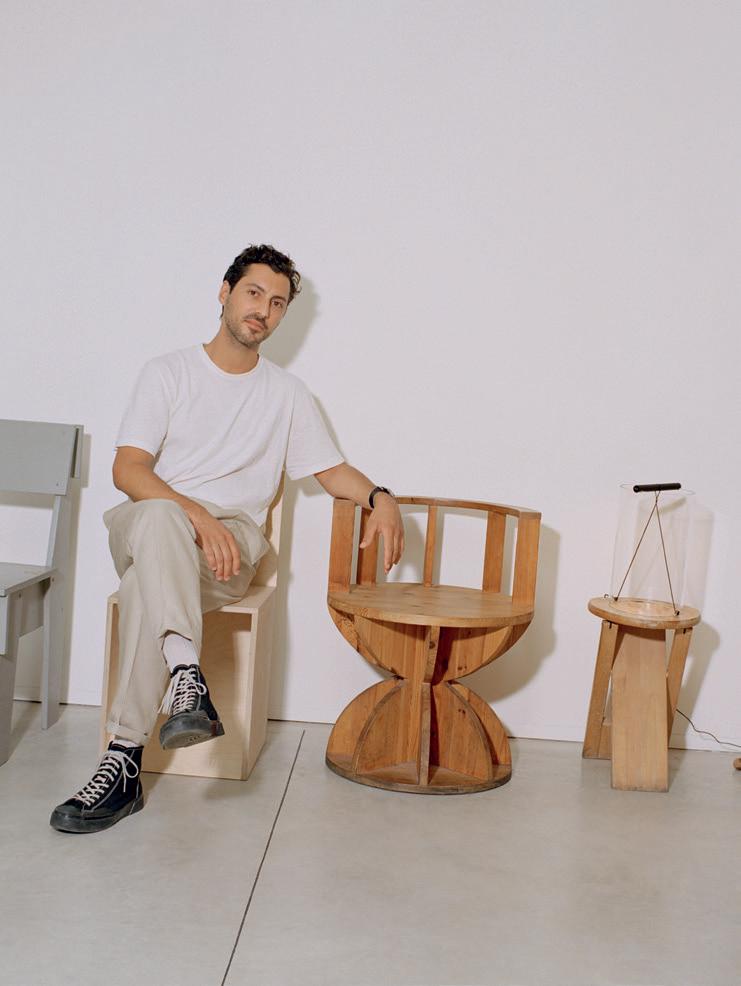
QUESTIONNAIRE
92
Draw your favourite tool.


What is an object you wish you had designed?
What’s on your bedside table?
If you could live anywhere, where would you go?
How do you start your day?


What was your last meal?
What do you collect?
What makes you happy?
The last book you read. Tell us something you’ve never done.

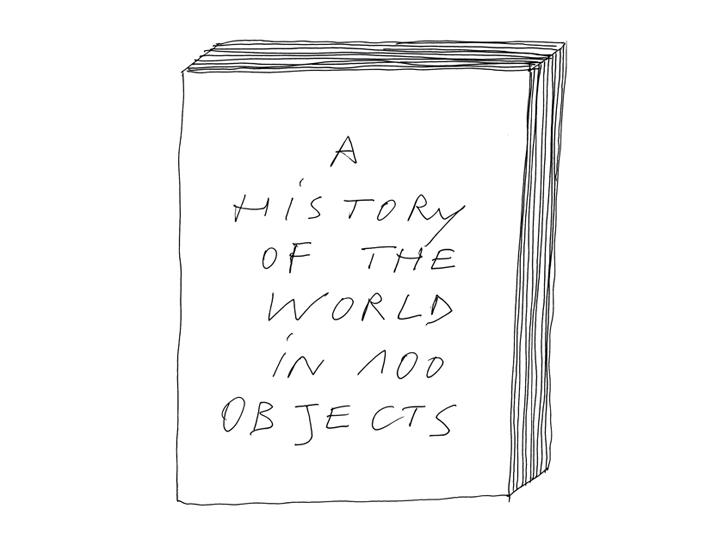
93
CREDITS
Contributors
In Paris, Àngele Châtenet photographed Ronan Bouroullec at home with Céramique, Flos’ ceramic debut (p. 38)
Theatre and Opera Director Fabio Cherstich wrote a text about his experience of animating Michael Anastassiades’ My Circuit during Fuorisalone (p. 58)
Pablo Di Prima followed Philippe Malouin as he tested Bilboquet, his Flos debut, across East London to the homes of his friends (Cover)
New York-based photographer Adrianna Glaviano created a series of images of Taccia, illustrating Achille & Pier Giacomo Castiglioni’s ingenious design for our Identikit (p. 82)
Over the course of one week during Fuorisalone, photographer Mattia Greghi documented Fabio Cherstich’s performance that elevated and celebrated Michael Anastassiades’ My Circuit (p. 58)
Photographer Oliver Helbig captured Konstantin Grcic’s Black Flag at his home and that of his neighbours Sam Chermayeff and Noemi Smolik in Berlin (p. 18)
Italian creative director Alessandro Mensi showcased Bilboquet’s ingenious design in a series of images that illustrate Philippe Malouin’s lighting idea (p. 72)
Anastasia Pavlova went behind the scenes at Flos’ ceramic factory to document the making of Ronan Bouroullec’s Céramique (p. 50)
Stockholm-based illustrator and artist Sany, aka Samuel Nyholm, created some fun and games for this issue, inspired by Céramique and Bilboquet (p. 90)
Milanese photographer Leonardo Scotti shot Bilboquet in a series of playful images that celebrate the lamp’s multifunctional nature (p. 72)
Acknowledgements
Michael Anastassiades
Sam Ashby
Ronan Bouroullec
Jason Brackenbury
Ángel Cánovas Celdrán
Achille Castiglioni Foundation
Py Cha
Sam Chermayeff
Konstantin Grcic
Elvio Grego
Ezio Grego
Kathrin Hasskamp
Sacha Leong
Philippe Malouin
Eredi Ugo Mulas
Noemi Smolik
Concept and Creative Direction
Apartamento Studios
Managing Editor
Rosa Bertoli
Graphic Design
Apartamento Studios
Flos Team
Barbara Corti
Rosaria Bernardi
Elisa Bodei
Silvia Delaini
Donatella Matteoni
Francesco Funari
Diletta Dincao
Ambra Crociani
Sara Amatista
Paola Arici
Translations
Team Agiliz@ tu gestion
Printing LOGO srl Borgoricco (PD)
August 2023
94
NEW
Bilboquet .............................. Philippe Malouin .................... 2023 ........................................... p. 96 Black Flag .............................. Konstantin Grcic ..................... 2023 ........................................... p. 97 Céramique ............................. Ronan Bouroullec ................... 2023 ........................................... p. 96 My Sphere ..............................Michael Anastassiades............ 2023 ........................................... p. 98 My Dome ................................Michael Anastassiades ........... 2023 ........................................... p. 98 Taccia .................................... A. & P.G. Castiglioni ............... 1962 ........................................... p. 97 95
PRODUCTS
Bilboquet
Philippe Malouin, 2023
Materials: polycarbonate, iron
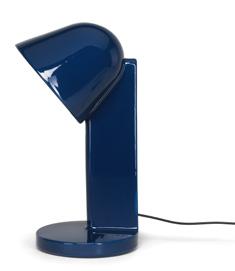

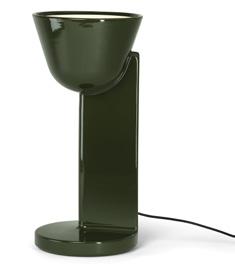
Power: 7.5W

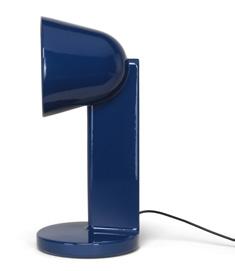
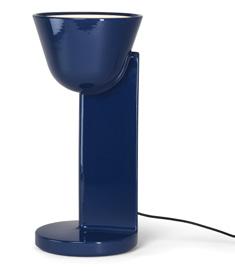

Voltage: 220-240V
Light Source: GU10 Led bulb - switch integrated on the cord

Available in: sage, linen, tomato
Céramique
Ronan Bouroullec, 2023
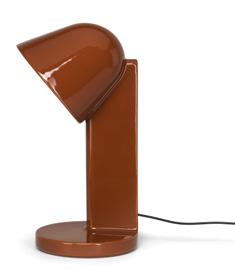
Materials: ceramics, polycarbonate
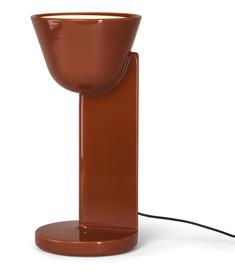
Power: 8W
Voltage: 220-240V
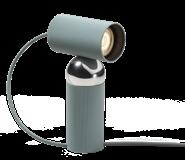
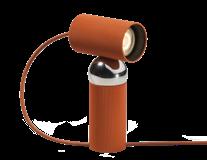
Light Source: E27 LED bulb - switch integrated on the cord
Available in: moss green, navy blue, rust red
F0995017
F0995035
F1632014
F1633014
F1634014
F1632035
F1633035
F1634035
F0995039 F1632039 F1633039 F1634039 Céramique Up Céramique Side Céramique Down 104 mm / 4,09'' 59.5 mm / 2,34'' 203 mm / 7,99'' ø 56.5 mm / 2.22'' ø 104 mm / 4.09'' ø 205 mm / 8.07'' ø 205 mm / 8.07'' ø 205 mm / 8.07'' 503 mm/ 19.80'' 503 mm/ 19.80'' 488 mm/ 19.21'' 96
Black Flag
Konstantin Grcic, 2023
Materials: aluminum, polycarbonate
Power: 75W (Black Flag) - 82W (Black Flag Pro)
Voltage: 220-240V
Light Source: Power LED 2700K CRI 90 (Black Flag) - ( Tunable white 2700-5000K CRI 90 Black Flag Pro)
Available in: matte black

Taccia
Achille & Pier Giacomo Castiglioni, 1962

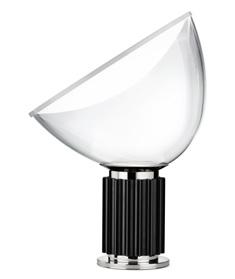
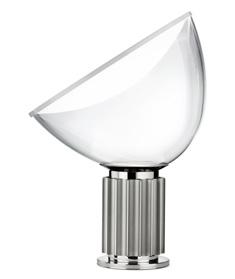
Voltage: 100-240V/48V
Light Source: 1 COB LED 28W 2700K CRI93
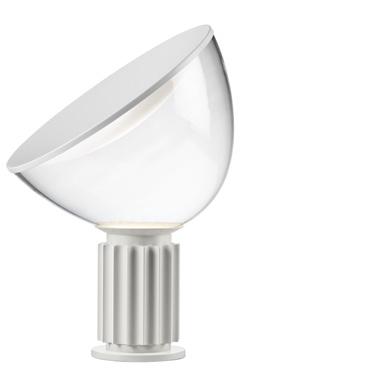

New Finish: matte white
Available in: black, silver, bronze
485 mm / 19,09'' 645 mm / 25,39'' ø 142 mm / 5.59'' ø 190 mm / 3.54'' 1200 mm/ 47.24'' 3535 mm / 139.17'' 1200 mm / 47.24'' 97
F1090031
Black Flag
Black Flag Pro Finishes black silver bronze
F1091031 Taccia Small F6602009 Taccia
F6604009
Materials: glass, aluminum
Power: 28W Taccia - 16W Taccia Small
My Dome, My Sphere, My Lines and My Disc are also available as part of the My Circuit structure, designed by Michael Anastassiades to feature a wide range of dedicated lighting tools.
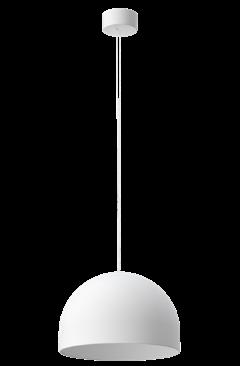

Discover more on our professional website by scanning the QR code below:

F1919009
F1903009
My Dome & My Sphere
Michael Anastassiades, 2023
Materials:
aluminum , PMMA ( My Dome) -
glass, aluminum ( My Sphere)
Power:
2x15W ( My Dome) -
20W ( My Sphere)
Voltage: 220-240V
Light Source: Led 15W 2700K CRI90 ( My Dome)
2xLed 20W 2700K CRI90 ( My Sphere)
My Disc & My Lines
Michael Anastassiades, 2023

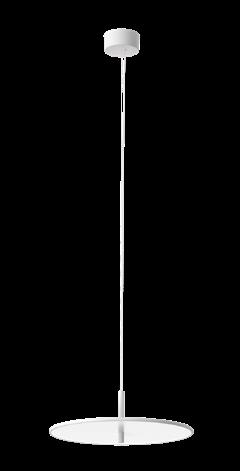
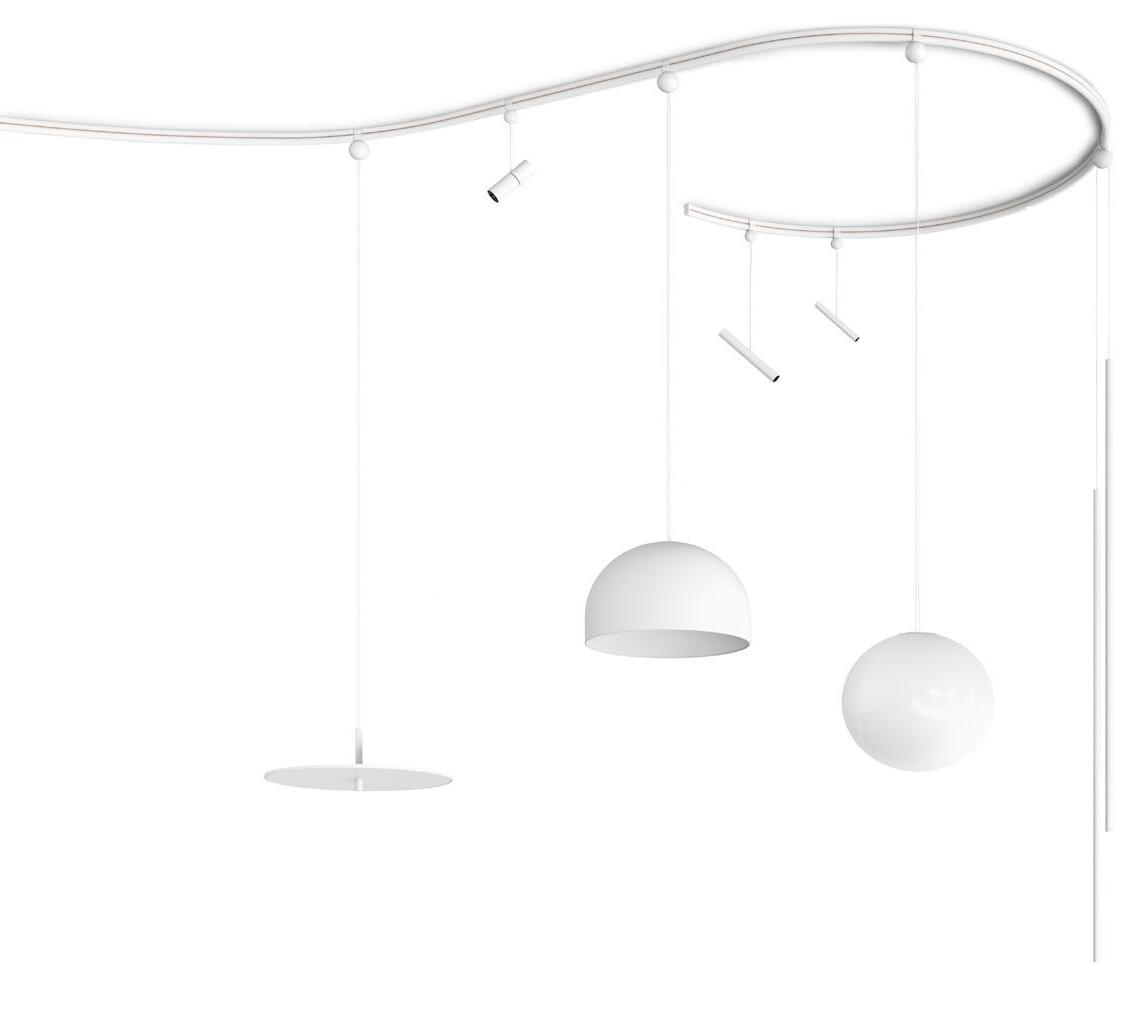
Materials:
aluminum, polycarbonate, PMMA ( My Disc) -
aluminum, steel, polycarbonate, platinic silicone extruded opal ( My Sphere)
Power: 44W ( My Disc) -
2x52W ( My Lines)
Voltage: 48V
Light Source: Led 44W 2700K CRI90 ( My Disc)
2x Led 52W 2700K CRI90 ( My Lines)
F1906009
My Circuit Lines My Circuit Sphere My Circuit Dome My Circuit My Spot ø 25 My Circuit My Spot ø 35 My Circuit Light Shadow Spot My Circuit Disc
F1915009 3000 mm / 118.11'' 218mm / 8.58'' ø 600 mm / 23.62'' ø 152 mm / 5.94'' 73 mm / 2.87'' 3000 mm / 118.11'' 336,3mm / 13.24'' ø 504 mm / XX'' ø 130 mm / 5.11'' 40 mm / 1.57'' ø 450 mm / XX'' 3000 mm / 118.11'' ø 445.7 mm / XX'' ø 130 mm / 5.11'' 40 mm / 1.57'' ø 23 mm / 0.90'' 105 mm / 4.13'' 1672 mm / 65.82'' ø 152 mm / 5.94'' 73 mm / 2.87'' 98

Discover more on our website flos.com by scanning the QR code below and join to our Newsletter to stay up-to-date.
 Céramique by Ronan Bouroullec
Céramique by Ronan Bouroullec















 SAM'S PLACE, HACKNEY, 11.55 a.m.
SAM'S PLACE, HACKNEY, 11.55 a.m.





































 Interview
by Rosa Bertoli
Interview
by Rosa Bertoli











































 Photographer Leonardo Scotti and set designer Alessandro Mensi explore the playful possibilities of Bilboquet by Philippe Malouin with a
Photographer Leonardo Scotti and set designer Alessandro Mensi explore the playful possibilities of Bilboquet by Philippe Malouin with a
















 Bilboquet
Bilboquet
































 Céramique by Ronan Bouroullec
Céramique by Ronan Bouroullec